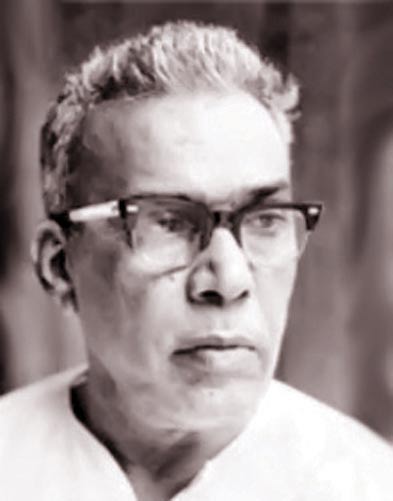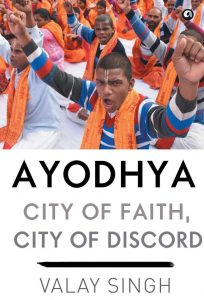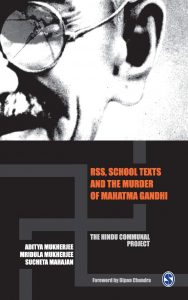ARCHIVE
The BJP entered the political fray in 1980 and in just a decade – by the 1990s – had emerged as a national party which could displace the Congress. How did it manage this extraordinary feat?
This chapter from Pralay Kanungo’s RSS’s Tryst with Politics: From Hedgewar to Sudarshan, looks at the key decades between 1973 – 1993, wherein the RSS and its affiliates became a force to reckon with on the national level, due to the organisational prowess and political astuteness of its sarsanghchalak: Balasaheb Deoras.
Madhukar Dattatreya Deoras, popularly known as ‘Balasaheb,’ was the Rashtriya Swayamsevak Sangh’s third sarsanghchalak (i.e. head). He followed in the footsteps of KB Hedgewar and MS Golwalkar, but is not as known and spoken about as his predecessors, despite his long tenure of twenty years. The lack of work on Deoras is a particularly noticeable gap in scholarship on Hindu nationalism and the spread of the ideology of Hindutva, because he played a major role in bringing the RSS into the mainstream.
A crucial work filling this lacunae is Prof. Pralay Kanungo’s in-depth analysis of Deoras’ reign, from his book RSS’s Tryst with Politics: From Hedgewar to Sudarshan. In an extremely lucid and clear analysis, he traverses many phases in the organisation’s recent history – the alliance with Jayaprakash Narayan, the ban during the Emergency, the Janata Party experiment, the establishment of the BJP and, arguably the most important, the Ram Janmabhoomi movement.
The RSS was founded in 1925 by KB Hedgewar in Nagpur. Since its inception, it maintains that it is merely a “cultural organisation”. Kanungo, through the course of his work, emphasises that this claim does not stand up against scrutiny: “The evolution of the RSS, its organisational structure and functions, the ideology of the Hindu Rashtra and its homogenising agenda unveil its political mission.” However, Kanungo observes that, despite its political orientation, it is true that the RSS has, for a long portion of its history, kept away from active politics. It has a large network of affiliates, such as the Akhil Bharatiya Vidyarthi Parishad (ABVP) and the Bharatiya Janata Party (BJP), who participate in its stead.
Kanungo traces this back to a time prior to the BJP’s establishment in 1980, when the political affiliate of the RSS was the Bharatiya Jana Sangh (BJS). The latter came into being in 1951 and contested elections right from its inception. However, until the late 1960s, it was unable to garner any significant support from the Indian populace. This can be partially attributed to the Congress’ hegemonic position as the single largest and most popular party during this period.
The tide began to change around the time Deoras assumed the reigns of the RSS. Jawaharlal Nehru – and subsequently, Lal Bahadur Shastri – had passed away and created a vacuum which the leadership hoped to fill with the as-yet unproven Indira Gandhi. Kanungo writes that the “Congress system seemed to have exhausted its potential and was losing its political hegemony by the early 1970s”. At the same time, despite attempts by erstwhile Congress leaders as well as other parties, there seemed to be no political force in the country which could pose as an alternative to Mrs. Gandhi.
Deoras, reading the writing on the wall, “thought it ideal for the RSS to enter the political fray with its alternative national agenda”. Though he only became the chief of the Sangh in 1973, Deoras was by no means a new face. He had been a part of the organisation since the age of twelve and had established himself as a favourite of both Hedgewar and Golwalkar. As Kanungo puts it, “Deoras was thus rightly described as a true child of the organisation.”
Considered “a man of organisation and pragmatic orientation”, one of the first actions Deoras undertook after assuming his position was to bring about changes in the organisational set-up of the RSS so as to make it more “capable of political action”. Further, he also began setting up other important affiliates besides the Bharatiya Jana Sangh as he understood that, despite an increase in its seats, the BJS’s performance had not been up to the mark. Under his aegis, the ABVP and the Bharatiya Mazdoor Sangh (BMS) expanded their bases amongst students and workers respectively.
This policy paid a huge dividend in the 1970s. In keeping with his pragmatic approach, Deoras did not shy away from making political compromises if and when these were required. Thus not only was the RSS, through its affiliates, able to capitalise on the anti-Indira sentiment in the early 1970s, it was also able to garner the support of the staunch Gandhian Jayaprakash Narayan, who led the nation-wide agitation against the Congress Prime Minister.
JP’s support was instrumental in bringing the RSS into mainstream public view, and that too in a positive light. The organisation had not been fully accepted by all sections of Indian society and it had been unable to shrug off the “the old stigma of ‘Mahatma Gandhi’s murderer’”. It was only with Narayan’s support that this charge could be “considerably blunted”.
The movement was clearly strong enough to threaten Mrs. Gandhi and, soon after in 1975, she declared an Emergency which lasted till 1977. In these two years, the RSS was banned and many of its leaders, including Deoras, arrested. When the Emergency was lifted, all major Opposition parties came together under the banner of the ‘Janata Party’. The coalition had members from all ends of the political spectrum: from the Communists to the Jana Sangh.
In order to establish stability within the Janata Party, the RSS adopted a “politics of accommodation and ideological flexibility”. When other Janata Party constituents began to question its communal orientation, the organisation “announced the opening of its doors to non-Hindus”. However, the coalition could not sustain. It collapsed due to internal friction and Chaudhary Charan Singh became the next Prime Minister in 1979.
The Sangh had never before possessed such an influence on government and this brief stint gave it “the opportunity to acquire an all-India status”. Kanungo writes: “The RSS got a lot of publicity, its organisation and affiliates became known throughout the country and its leadership acquired a national stature and respect.” However, there was another point of view within the organisation, backed by traditionalists who were “disillusioned with the evil effects of power politics” and this gave birth to a dilemma for the Sangh to resolve urgently.
Perhaps in response to this very dilemma, the BJP was formed in a convention held by the Jana Sangh group of the Janata Party, on the 5th of April, 1980. The new party “tried for a synthesis of ideology and realpolitik”: it retained and continued certain traditions, particularly symbols, of the Janata Party while “in terms of the leadership structure and recruitment patterns, the BJP continued with its Jana Sangh and RSS heritage”. The new party “appointed RSS men in key position” while at the same time “co-opting a few leaders from a non-RSS and non-Jana Sangh background”. In terms of ideology, it retained Deendayal Upadhyay’s ‘Integral Humanism’ while adopting ‘Gandhian Socialism’ in its statement of first principles.
Simultaneously, Deoras continued to expand the reach of the RSS and its affiliates. He was a proponent of Golwalkar’s Hindu Rashtra; for him, too, the “problem of Hindustan” was not the “Muslim” or the “Christian”, but the “disunity among the Hindus”. And so, his tenure saw the revival of the Vishwa Hindu Parishad (VHP), which had been “lying low” for decades.
The trigger for this was the mass conversion of 1500 Dalits to Islam in Tamil Nadu. In response, the VHP raised the call of “Hinduism in Danger!” and called on all Hindus to unite against this threat. It went on to organise massive events and evolved a potent political mode: “tirth yatras“. Ostensibly only religious events, these pilgrimages became vehicles of mobilization for the RSS and “religious symbols” and “ritual paraphernalia” were used to “create a community consciousness among Hindus”. The evolution of the yatra as a political tool, however, must also be seen in the context of Indira Gandhi’s usage of Hindu rhetoric and ritual for political messaging, a strategic shift in Congress messaging in the early eighties, that was leading it to electoral victory in erstwhile BJP strongholds. Eventually, after the BJP’s electoral rout in 1984, with most of its “upper-caste support” going to Rajiv Gandhi’s Congress, the Bharatiya Janata Party reverted to its “ultra-Hindu posture”. Kanungo writes: “Deendayal’s ‘Integral Humanism’ replaced ‘Gandhian Socialism’ as the basic philosophy of the party in October 1985.”
This politics of mobilisation culminated in the Ram Janmabhoomi movement. Seeing the effectiveness of the yatras, Deoras was on the look-out for a “powerful and popular Hindu symbol” and he found his answer in “Lord Ram”. As early as 1984, the VHP had announced its intention of “liberating” the birthplace of Rama at Ayodhya.
In a few years, this nascent movement got a great opportunity when the Babri Masjid was thrown open on 1st February 1986. Simultaneously, the Shah Bano case and the subsequent Muslim Women’s Bill gave the Sangh Parivar a great opportunity to sharpen its anti-Muslim rhetoric. With these twin tools and a well-oiled, rapidly growing organisation, Deoras went on the offensive.
In the last years of the 1980s and early 1990s, the Ram Janmabhoomi movement swept through the nation. The mobilisation, along with multiple rath yatras, brought the BJP great electoral dividends in the 1991 General Elections— it was now a national party in all senses of the term. It also came into power in multiple states, including Uttar Pradesh. With a BJP Chief Minister active in the state, the RSS and its affiliates stepped up the movement and the Babri Masjid was demolished in 1992. Kanungo writes: “On 16 December 1992, 300,000 kar sevaks assembled at Ayodhya and thronged the domes of the Babri Masjid. Within five hours the mosque was razed to the ground and a new make-shift Ram temple was constructed amid the rubble of the disputed structure. It was a smooth operation. The Sangh Parivar celebrated the event as a historic victory.”
A measure of the RSS’s influence at this stage is indicated by the toothlessness of the Narasimha Rao-led Congress government at the Centre, despite the massive communal violence that the Sangh Parivar’s actions led to.
“Unlike the previous bans of the RSS in 1948 and 1975,” writes Kanungo. “This time the government adopted a conciliatory rather than a firm attitude towards the RSS. Only a relatively small number of people were taken into custody under the Unlawful Activities (Prevention) Act. Key cadres had gone into hiding. Even this crackdown was soon relaxed and the seven leaders were freed on 10 January 1993. The government’s policy was further constrained by certain judicial decisions. The Madhya Pradesh High Court ordered in the end of December that the RSS offices in Jabalpur and Indore be opened. On 22 April 1993, it overturned the imposition of President’s rule in the state and ordered the restoration of the legislative assembly in Madhya Pradesh.”
Kanungo writes of the immediate aftermath of the demolition:
“The Ayodhya demolition was carefully planned by the Sangh Parivar and was facilitated by the UP government headed by Kalyan Singh. According to the ‘Citizens’ Tribunal on Ayodhya’ the demolition was pre-planned and finalized at a meeting held on 5 December 1992 and attended by HV Sesdhadri, KS Sudarshan, LK Advani, MM Joshi, Vijaya Raje Scindia, Ashok Singhal, Vinay Katiyar, Uma Bharti, Sadhvi Ritambhara, Acharya Dharmendra, Pramod Mahajan, BL Sharma and Champat Roy, apart from Moreshwar Save of the Shiv Sena. However, the RSS does not admit so. Seshadri argued that the demolition was not a part of the plan on that day and they could not gauge the intensity of the feelings of the kar sevaks. Unexpectedly they broke the human chain of the swayamsevaks guarding the place. Deoras attributed the demolition to outside elements. BJP’s White Paper on Ayodhya claims that the demolition was ‘an uncontrolled and, in fact uncontrollable upsurge of spontaneous nature.’”
The stage was therefore set for the BJP – and by extension the RSS – to assume a major role in politics as the primary alternative to the Congress. The journey was not linear, however. The party suffered a set-back in the UP, MP and Himachal Pradesh assembly elections of 1993. “These elections,” Kanungo writes. “Were widely regarded as a referendum on the demolition.”
However, the party’s fortunes would turn soon. Though Deoras stepped down as sarsanghchalak in 1994, owing to ill-health, and passed away on 17th June 1996, he was able to see the fruits of his labour when BJP leader Atal Behari Vajpayee became the Prime Minister of India one month before his death. “The Ram Janmabhoomi movement and the Rath Yatra reversed the political future of the BJP, from a marginal political party to the national alternative,” writes Kanungo. “The RSS, its ideological mentor and organisational master, no longer remained peripheral; it had now come to occupy the centrestage of Indian politics as an indispensable player.”
(Quotes, where unattributed, are from Pralay Kanungo’s RSS’s Tryst with Politics: From Hedgewar to Sudarshan)
QUEST FOR POLITICAL POWER: BALASAHEB DEORAS
The evolution of the RSS, its organisational structure and functions, the ideology of the Hindu Rashtra and its homogenising agenda unveil its political mission despite the insistence that it is merely a cultural organisation. This chapter seeks to contest this ‘cultural claim’ further by explaining the emergence of the RSS as an important political actor on the Indian political scene, particularly under the leadership of Balasaheb Deoras. Responding to the changing dynamics of Indian politics the RSS has changed the course of its political journey –– from moderate, pragmatic, and accommodative to militant, rigid and intolerant. It also examines how the RSS promoted its political mobilisation during the Ram Janmabhoomi agitation through an innovative use of Hindu cultural and religious symbols, thereby wrapping its political agence in a cultural cover.
Deoras: A Child of the Organisation
Three sealed letters of Golwalkar addressing ‘To all Swayamsevak Brothers’ were opened soon after his death in 1973. As per his wish expressed in the first letter, Balasaheb Deoras became the next sarsanghchalak. Golwalkar thus followed the same tradition set by Hedgewar. Unlike Golwalkar, who was a late entrant to the RSS, Balasaheb came under the influence of Hedgewar at the age of twelve and soon became one of his favourite swayamsevaks. Having thus entered the RSS that had been formed only two years earlier, Balasaheb grew with it and in it. He was adventurous and displayed leadership qualities since childhood. In 1939, Balasaheb became a full-time RSS pracharak in Nagpur. Then he was sent on an assignment to Calcutta for a year. After his return, he became the city secretary of Nagpur. This was a strategic position as Nagpur was the key to organisational control. In 1942, Balasaheb trained a big batch of RSS workers of Nagpur and dispatched them to different provinces. When Bhayaji Dani was sarkaryavah, Balasaheb acted as sar-sarkaryavah for many years. In 1965, Balasaheb was appointed sarkaryavah and continued in that office till 1973. Doeras was thus rightly described as a true child of the organisation. He was more of a ‘machine operator’ who had been controlling the RSS ever since the days of Hedgewar.
![MS Golwalkar, the second sarsanghchalak of the RSS. [Photo Credit: rss.org]](http://indianhistorycollective.com/wp-content/uploads/2021/06/Golwalkar.jpeg)
MS Golwalkar, the second sarsanghchalak of the RSS. [Photo Credit: rss.org]
Practical and Pragmatic
Balasaheb himself admitted that he was a student of philosophy, he lacked interest in pursuing the systems of thought. Like Hedgewar, he was known for his pragmatism, prompting Golwalkar to announce before a group of swayamsevaks as early as 1944: “If you you want to know Dr. Hedgewar, look at this young man!” He has been described as a person ‘without inhibitions’, ‘practical and pragmatic’ and ‘without any taboos regarding rites and rituals, or the practice of religiosity.’ Besides his pragmatism, he had ‘a sharp critical understanding and ability to analyse situations and suggest solutions.’ Thus the RSS clarified that his pragmaticism did not shun ideology and Hindutva was no less important to Deoras.
Three sealed letters of Golwalkar addressing ‘To all Swayamsevak Brothers’ were opened soon after his death in 1973. As per his wish expressed in the first letter, Balasaheb Deoras became the next sarsanghchalak. Golwalkar thus followed the same tradition set by Hedgewar. Unlike Golwalkar, who was a late entrant to the RSS, Balasaheb came under the influence of Hedgewar at the age of twelve and soon became one of his favourite swayamsevaks.
Organizational Reorientation: Evolving an Innovative Mechanism
As a man of organisation and pragmatic orientation, Deoras brought about changes in the organisational set-up to make it capable of political action. First, the old hierarchical structure was brought in line with the electoral constituency division. Each RSS district would now cover one or two parliamentary constituencies; below that came the assembly and municipal constituency divisions. The purpose was to build up a well-oiled election machinery. The shakhas were assigned a much wider role; they became the basic centres not only for elections to legislatures but also for managing elections of various trade unions, student unions and other socio-cultural organisations of the Sangh Parivar working within their respective areas. Secondly, the area of work between the RSS and its affiliates were properly divided; while the latter would concentrate on propaganda, the ground organisation would be controlled and manned by the former. Thirdly, married men were encouraged to take up full-time work. And to tackle the financial burden, an elaborate plan was prepared to secure control over educational and other institutions where the full-time workers could be given employment without any cost to RSS as such. Finally, changes were brought in the system of fund collection. In the past the collection through Guru Dakshina was kept secret. This was replaced by a new system whereby the head of a shakha would come to know what contribution has been made by whom. As a result it was found out that the amount of collection was more in the Jana Sangh-ruled areas.
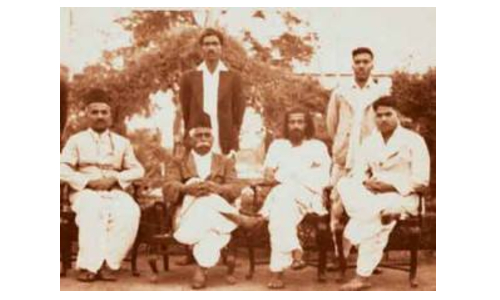
The Early RSS Team. Sitting (L-R): Appaji Joshi, Dr KB Hedgewar, MS Golwalkar
and Buban Rao Pandit. Standing (L-R) Vithal Rao Patki and Balasaheb Deoras.
Soon after his takeover, Deoras reiterated his commitment to Golwalkar’s Hindu Rashtra. For him, too, the problem of Hindustan is not the Muslim or the Christian, but the disunity among the Hindus. Therefore, the aim of the Hindu sangathan should never be undermined: ‘We are convinced that when the Hindu becomes strong and united, the whole country will become strong and united.’ Despite the confirmation of ideological continuity, Deoras made a break with Golwalkar’s hesitation towards politics. Unlike Golwalkar, he had ‘no inclination towards the spiritual.’ In contrast to Golwalkar’s idealism and quietism, Deoras displayed a flair for pragmatism and activism. But it was not just his personal flat for politics that impelled him to carve out an active political role for the RSS. Rather certain objective conditions in the country facilitated the direct political intervention of the RSS.
Seeking an Alternative National Ideology and Politics
The Indian political scene was quite volatile when Deoras took over the RSS. The Congress system seemed to have exhausted its potential and was losing its political hegemony by the early 1970s. Many senior and well-known leaders (the syndicate) had deserted the Congress party but were neither able to challenge Indira Gandhi effectively nor provide an alternative socio-economic model of development. On the other hand Indira Gandhi’s Garibi Hatao campaign was turning out to be more popular than substantive. Meanwhile, in 1964, there occurred a split in the communist party of India; both the Communist Parties, the CPI and CPI (M), were mainly confined to their regional bases. The Naxalite movement, which emerged subsequently by challenging the CPI(M), had also splintered into a dozen of groups.
The Indian political scene was quite volatile when Deoras took over the RSS. The Congress system seemed to have exhausted its potential and was losing its political hegemony by the early 1970s. Many senior and well-known leaders (the syndicate) had deserted the Congress party but were neither able to challenge Indira Gandhi effectively nor provide an alternative socio-economic model of development.
Further, post-independent India had passed through some unique experiences. A sovereign polity had already emerged on the foundation of universal franchise. Centralised rule had consolidated the national market. The communications network expanded with the use of radio and television. There was also a substantial increase in literacy rates. These developments had brought the Indian masses from diverse regions and social backgrounds into direct contact and inter-dependence. All these factors had created an objective situation for the re-casting of an all-encompassing pan-Indian identity. In the absence of any anti-imperialist struggle, anti-colonialism had lost all attraction as a binding force. An alternative national definition was needed in such a changed socio-economic-political scenario. But neither the Congress nor the Left were capable of providing such a definition.
Deoras was quick to grasp this fluidity and uncertainty in the national political scene and thought it ideal for the RSS to enter the political fray with its alternative national agenda. He thus announced that ‘the extreme opinion that the swayamsevak of the Sangh should have nothing to do with the world around him is patently wrong’ and gave a call to swayamsevaks ‘to participate in every field of national life for reformation according to RSS thinking.’ It was a daring adventure of Deoras to bring the RSS into open politics, a strategic shift from the cautious approach taken by Golwalkar.
A New Political Strategy: Rejuvenating the Affiliates
This decision of the forest to enter the political arena was also partly attributed to the growing strength of the RSS over the last thirty three years of Golwalkar’s long reign; it has undergone a phenomenal expansion having shakhas in almost every part of the country. Besides the parent organisation, the other family members were shaping up quite well particularly the BJS, the ABVP and the BMS. The political front, the BJS, had traveled a long way since its first session at Kanpur in 1952. The 1973 Kanpur session of the party showed the strength the party had acquired in the last two decades. Its labour affiliate, the BMS, had emerged as one of the strongest labour organisations in the country. Its student affiliate the ABVP had set up about 600 branches having 1,65,000 members and 24 full-time workers.
Therefore, Deoras was confident that the RSS, with its wider family network, could take up a new challenging role. Accordingly, he adopted a new strategy that reflected his political astuteness. Deoras rightly understood that despite the expansion of the BJS, its performance in the parliamentary election of 1971 and subsequent assembly elections in 1972 was quite dismal. Hence, instead of relying totally on this affiliate, the RSS should look forward to other affiliates. Thus Deoras concentrated on the two most promising affiliates, the ABVP and BMS, working among students and labour respectively. He foresaw that both these affiliates along with the BJS would play a leading role in the political struggle in the future.
Gujarat provided the first opportunity to Deoras to test the viability of his new strategy. The Congress party had begun to lose its political base there. After the 1969 split in the party, Indira Gandhi adopted a personalized and populist style to establish her party in the province. The state government announced reservations for lower castes, which was opposed by massive agitations. Thus Gujarat became the site for competitive populism resulting in riotous street politics.
Accordingly, he adopted a new strategy that reflected his political astuteness. Deoras rightly understood that despite the expansion of the BJS, its performance in the parliamentary election of 1971 and subsequent assembly elections in 1972 was quite dismal. Hence, instead of relying totally on this affiliate, the RSS should look forward to other affiliates. Thus Deoras concentrated on the two most promising affiliates, the ABVP and BMS, working among students and labour respectively.
RSS galvanized ABVP to spearhead the struggle, under the banner of Nav Nirman Samiti, against the allegedly corrupt government of Chimanbhai Patel. The movement succeeded by overthrowing the government. The ABVP proved its political potential. The RSS gained confidence at this success and thought of carrying out such struggles against the corrupt inefficient Congress government in other states. Thus using mass street mobilizations to topple governments became a standard practice. The next stage was set in Bihar.
Aligning with Jayaprakash Narayan against Indira Gandhi
Meanwhile Indira Gandhi’s authoritarian style of functioning was getting pronounced day by day. The RSS was quick to understand the nature of her functioning and started opposing it. For example, the RSS took strong objection to the question of supercession of senior judges of the Supreme Court in the appointment of the Chief Justice. An editorial of the Organiser warned that ‘the politically conscious elements of Indian society will have to exert themselves to keep the press free, the judiciary independent and the legislatures responsive – if India is not to drift into the nightmare of a corrupt dictatorship.’ Referring to the appeal of the Congress leader Shashi Bhushan for a ‘limited dictatorship,’ L.K. Advani cautioned: ‘it seems the Congress-I is seriously toying with the idea of scuttling democracy, and supplanting it with a totalitarian or quasi-totalitarian set-up.’ Thus, the RSS started taking a strong position against the authoritarian tendency of Indira Gandhi.
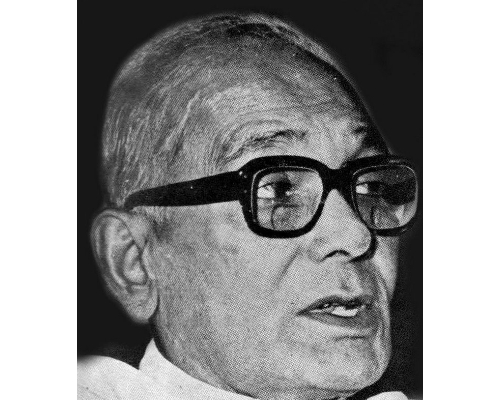
Jayaprakash Narayan’s support played a significant role in bringing the RSS into the mainstream
Jayaprakash Narayan launched a protest movement against the corrupt Congress government of Bihar. The ABVP became a part of the Chhatra Sangharsh Samiti (CSS) and joined the JP movement. In late 1974, the movement changed its character by moving beyond Bihar and targeting Indira Gandhi. JP’s concept of ‘total revolution’ was endorsed by the RSS. The ABPS of the RSS took the unusual step of supporting Narayan’s ‘total revolution,’ though it maintained its tradition of keeping a loop from political activities. In a rally at Delhi Balasaheb Deoras called JP a ‘saint’ who had ‘come to rescue society in dark and critical times.
Jayaprakash Narayan launched a protest movement against the corrupt Congress government of Bihar. The ABVP became a part of the Chhatra Sangharsh Samiti (CSS) and joined the JP movement. In late 1974, the movement changed its character by moving beyond Bihar and targeting Indira Gandhi. JP’s concept of ‘total revolution’ was endorsed by the RSS.
Jayaprakash reciprocated the compliment by publicly praising the Sangh Parivar. He attended the 20th All-India session of the Jana Sangh and declared, ‘If Jana Sangh is fascist, then I, too, am a fascist.’ He further complimented the RSS for its efforts to reduce economic inequality and corruption. Both JP and the RSS needed each other. While JP had the leadership, the RSS had committed cadre. Any struggle against Indira Gandhi demanded a close cooperation between the two. JP’s approbation certainly enhanced the public stature of the RSS. The old stigma of ‘Mahatma Gandhi’s murderer’ was considerably blunted with the certificate from a former close associate of Mahatma Gandhi.
RSS and Anti-Emergency Struggle
On 5 June 1975, the Allahabad High court declared Indira Gandhi’s election to the parliament invalid due to violations of election law. The opposition parties demanded her resignation. They formed the Lok Sangharsh Samiti (LSS) to coordinate the activities of the JP movement. Nana Deshmukh, a former RSS pracharak, and the organising secretary of the BJS, became its general secretary. On 25 June 1975 JP gave a call to the defence forces not to carry out the ‘illegal order.’ The next morning a state of Emergency was declared and the political opponents of Indira Gandhi including Balasaheb Deoras were arrested. The RSS was banned on 5th July 1975 under Defence of India Rules, 1971, and a large number of RSS members were arrested.
The initial response of the RSS was cautious. Madhavrao Mulay, the general secretary, declared the organisation has been dissolved. However, the RSS kept alive an effective skeleton organisation, although in shakhas, training camp, parades and other activities were stopped. Soon some leading pracharaks, after consulting imprisoned Balasaheb Deoras, met at Bombay in late July to chart out the action plan for their banned organisation. They decided that the RSS would work closely with the LSS, thus breaking the RSS tradition of keeping the organisation aloof from political movements. The coordinating work of the RSS with the RSS would be carried out by the four zonal pracharaks: Yadavrao Joshi (south), Rajendra Singh (north), Moropant Pingale (west), and Bhao Rao (east). In addition, while Rambahu Godbole was entrusted with the task of contacting the opposition party leaders, Eknath Ranade was to liaison with the government. Incidentally, Ranade was assigned the same job during the previous ban of 1948-9. This meeting also charted the following course of action for the band organisation: (a) to keep up the moral of the swayamsevaks by arranging some form of congregations; (b) to establish an underground press; (c) prepare for the nationwide satyagraha, establishing contact with significant non-political figures and with prominent representatives of the minority communities; and (d) solicit overseas Indian support for the RSS in the underground activities of the LSS. However, many critics believe that the RSS was keen on a compromise rather than fight Indira Gandhi.
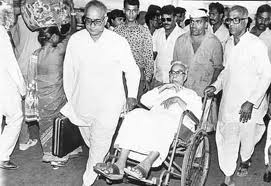
Balasaheb Deoras (on wheelchair) was also jailed during the Emergency
Despite these versions, other evidence suggests that the RSS played a key role in the struggle against Emergency. Its cadre was the backbone of the LSS which spearheaded the JP movement. After the arrest of JP, Nana Deshmukh assumed the responsibility of leading the LSS. When Deshmukh was arrested, D.B. Thangadi, the general secretary of the BMS, took charge. Thus the RSS contributed its cadre and leaders to the LSS of the anti-Emergency struggle. Thousands of its members were arrested while offering satyagraha against the authoritarian regime of Indira Gandhi.
Despite these versions, other evidence suggests that the RSS played a key role in the struggle against Emergency. Its cadre was the backbone of the LSS which spearheaded the JP movement. After the arrest of JP, Nana Deshmukh assumed the responsibility of leading the LSS. When Deshmukh was arrested, D.B. Thangadi, the general secretary of the BMS, took charge. Thus the RSS contributed its cadre and leaders to the LSS of the anti-Emergency struggle.
However, it is not to argue that it was only the RSS and its affiliates that participated in the struggle. All opposition parties like the Samyukta Socialist party (SSP), the Bharat Lok Sal (BLS) the Congress (Organisation), the CPI (Marxist), and Naxalites opposed the Emergency. Even many students, teachers, lawyers, doctors, actors, writers, peasants, workers and other professionals, who did not have any party-affiliation, sacrificed their career to join the struggle against dictatorship and authoritarianism. Thus, it was a concerted effort of all individuals, groups and political parties who wanted the restoration of democracy in India. Therefore, the credit goes to the Indian people who participated and sympathized with the struggle.
Post Emergency Era: Politics of Accommodation and Ideological Flexibility
The Emergency experience greatly exposed the cadres and the leaders of the RSS to the political environment of the country and made them ambitious. They felt proud of having participated in the ‘second freedom struggle.’ This baptization was badly needed for any political claim in the future as the RSS avoided the fight against colonialism during the freedom struggle. This participation gave them a unique opportunity to feel the political pulse of the people. It also widened the limited political outlook of the Jana Sangh experiment. Their interaction with different political parties, groups and individuals prove to be immensely beneficial.
All these new experiences compelled the RSS leaders to ponder whether they should continue to stick to the old and logical framework of the Hindu Rashtra or should they redefine it in the light of the changed political dynamics. Deoras rightly realised that to remain in the mainstream of national politics, the RSS should opt for a politics of accommodation. Therefore, as the realpolitik demanded, there should be no hesitation to redefine its exclusivist ideological moorings and seek a politics of pragmatism and accommodation. This changing attitude of the RSS leadership helped the formation of the Janata alliance of the opposition parties when general elections were announced. The RSS cadre campaigned vigorously against Indira Gandhi. The Janata alliance won the elections. After the victory the ban on the RSS was lifted on 4 July 1977.
RSS during Janata Period
The Janata alliance became Janata Party on 1 May 1977. The RSS approved the merger of the BJS in this new party which formed the first non-Congress government in New Delhi. Three of its swayamsevaks from the Jana Sangh group, A.B. Vajpayee, L.K. Advani and Brij Lal Verma, got cabinet berths in the Morarji government. After the June assembly elections, the Jana Sangh members became chief ministers in three States, Himachal Pradesh, Madhya Pradesh and Rajasthan and in the Union Territory of Delhi; and shared power in UP, Bihar Haryana and Orissa. Again most of them were RSS swayamsevaks.

The Janata Party had many phenomenal victories in the 1977 elections
The other constituents of the Janata Party, particularly the erstwhile socialists, were quick to grasp the growing influence of the RSS. They feared, on the basis of its large disciplined cadres and its influence of the erstwhile Jana Sangh members, the RSS would soon become too powerful and eclipse other constituents of the Janata Party. Therefore the devised a strategy to keep the RSS under control. It was suggested that the RSS should merge with the youth wing of the Janata Party to form a united volunteer organisation. This was rejected by the RSS.
The Janata alliance became Janata Party on 1 May 1977. The RSS approved the merger of the BJS in this new party which formed the first non-Congress government in New Delhi. Three of its swayamsevaks from the Jana Sangh group, A.B. Vajpayee, L.K. Advani and Brij Lal Verma, got cabinet berths in the Morarji government.
Deoras did not accept the proposal, which he thought, would certainly adversely affect the long-term objectives of his organisation. This would not only invite intense political attack from detractors, but would also bring decadent political culture to the RSS. Therefore, the RSS, as an organisation, should never become a part of the government. Even the BMS and the ABVP were not allowed to merge the identities with respective labour and student counterparts of the Janata Party. Besides ,being strongly entrenched in the Janata government and with political affiliates taking care of the RSS interests, Deoras not feel any real need for such a merger.
Thus Deoras cleverly avoided the politics of competition and bickering. He rather preferred to concentrate in and spend his energy on other areas where there was hardly any competition and the RSS could expand its support base more quickly and effectively. Accordingly, the RSS sought mutual cooperation with the Janata government in the areas of adult education, social welfare, youth affairs etc. Government patronage, the RSS reasoned, would ensure the flow of resources for these welfare activities.
There was another dimension: the RSS and its affiliates had been growing at a fast pace and the financial burden was becoming heavier for the maintenance of its growing number of whole-timers and another karykartas. Their involvement in the RSS projects would provide them engagement as well as financial assistance. With this strategy, the RSS expanded its sphere of influence in the government as well as non-government sectors and grew rapidly during the Janata regime.
Controversy on ‘Dual Membership’ and admitting non-Hindus
This rapid growth of the RSS alarmed other Janata constituents. They became apprehensive that the erstwhile BJS, backed by the strong and disciplined RSS cadre, would soon control the organisational apparatus of the party. Therefore, they raised the question of dual membership and demanded the members of the old BJS should sever their links with the RSS as the party constitution denied membership to any anybody belonging to any other political party, communal or other, which has a separate membership, constitution and programme. They pleaded that any association of the members of the Janata party with the RSS, a ‘Hindu communal organisation’ would undermine the secular credentials of the party. The Jana Sangh faction countered that the RSS was a cultural organisation and there was no restriction to be associated with it.
Surprisingly, the RSS phenomenon did not come up either during the parliament elections or the time of the merger of the Jana Sangh with the Janata Party. They were raised only when the struggle for power became intense between the constituents of the party. This issue of ‘dual membership’ was used to both gain leverage against the Jana Sangh group and to damage their capacity to mobilize additional support within the Janata party.
Thus Deoras cleverly avoided the politics of competition and bickering. He rather preferred to concentrate in and spend his energy on other areas where there was hardly any competition and the RSS could expand its support base more quickly and effectively. Accordingly, the RSS sought mutual cooperation with the Janata government in the areas of adult education, social welfare, youth affairs etc. Government patronage, the RSS reasoned, would ensure the flow of resources for these welfare activities.
To tackle the issue of dual membership, the RSS announced the opening of its doors to non-Hindus. As discussed earlier, the Emergency experience had softened its attitudes towards non-Hindus. Jayaprakash Narayan, the new political mentor of the RSS, had been emphasizing this issue for quite some time. Moreover, the Jana Sangh constituent of the Janata Party wanted its parent party to adopt an inclusive policy of admission, which would save its leaders from constant criticism and embarrassment in the Party forum. While Adopting the open door policy, the RSS did not compromise on its traditional goal of uniting the Hindu community. Its leadership was clearly reluctant to take any action which might undermine the brotherhood’s commitment to each other and to the RSS.
Demise of the Janata party and Disillusionment of the RSS
Even this gesture of the RSS could not stop the division of the party. Raj Narayan was the first to leave the party to form the Janata (Secular) Party, thereby claiming that the Janata Party was ‘unsecular.’ The next exit was of the Charan Singh group which also took a strong anti-RSS stance. Morarji Desai lost his majority and resigned 15 June 1979. The Jana Sangha faction threw its weight with Jagjivan Ram, a Harijan leader, thus attempting to shed its upper-caste image. However, the President invited Charan Singh to form the government. The caretaker government, being unable to muster support, resigned, and general elections were held in January 1980. The election gave a massive mandate to Indira Gandhi and proved to be a disaster for the Janata Party.
![Jagjivan Ram (Left) and Chaudhary Charan Singh. [Photo Credits: charansingh.org]](http://indianhistorycollective.com/wp-content/uploads/2021/06/CSandJagjivanram.jpeg)
Jagjivan Ram (Left) and Chaudhary Charan Singh. [Photo Credits: charansingh.org]
The leaders of the Janata Party analysed the causes of the electoral defeat. On the one hand, Jagjivan Ram attributed the defeat to the ‘hostile activities of the RSS,’ and also charged that a ‘secret’ understanding existed between the RSS and Indira Gandhi. On the other hand, some other leaders argued that the presence of the RSS members in the party gave it a communal image, thereby resulting in the loss of support of the minorities and lower castes and leading to the pole debacle. The Janata Party had to sort out the RSS issue once and for all.
Some leaders of the Janata party again raised the question of ‘dual membership’ and wanted the Jana Sangh group to sever ties with the RSS. This time the Jana Sangha constituent left it on the wisdom of the RSS leadership, which preferred to keep deliberate silence. In the light of the new political configuration, it was perhaps a wise option. The RSS was thoroughly disillusioned with the internal bickering of the Janata Party. It saw the writing on the wall and thought it would be futile to attempt its resurrection. The RSS leadership realised it was high time for the Jana Sangh constituent to come out of the party and form an alternative of its own.
RSS Dilemma: Power Politics or Ideological Purity?
The political experience, though exciting, was not all that pleasant for the RSS leaders. It was exciting because it gives them an opportunity to acquire an all India status. They felt elated when each major decision of the national government required their approval, or at least their considered opinion. The RSS got a lot of publicity, its organisation and affiliates became known throughout the country and its leadership acquired a national stature and respect. Perhaps, except the Congress party, no other organisation had achieved this status.
The political experience, though exciting, was not all that pleasant for the RSS leaders. It was exciting because it gives them an opportunity to acquire an all India status. They felt elated when each major decision of the national government required their approval, or at least their considered opinion. The RSS got a lot of publicity, its organisation and affiliates became known throughout the country and its leadership acquired a national stature and respect. Perhaps, except the Congress party, no other organisation had achieved this status.
However, many traditionalists within the RSS got disillusioned with the evil effects of power politics. They thought that the ideology of the Hindu Rashtra was compromised when the RSS opened its doors to non-Hindus despite the fact that there was hardly any entry. Many RSS leaders did not appreciate the way the RSS was dragged into each and every controversy and advocated to go back to Golwalkar’s policy of quiet expansion. Moreover, factional politics was alien to their culture. Though they manage to suppress the revolt of Balraj Madhok with no difficulty, Subramanian Swamy’s public criticism of Vajpayee caused a lot of embarrassment to the RSS leaders.
All this mixed experience called for an introspection. What should be the ideological parameters? Should it go back to the old and rigid ideological roots of the Hindu Rashtra of Golwalkar era or stick to the softer version that it had been experimenting with during the post-Golwalkar phase? The positive gains of power politics far outweighed the negative experiences. It could not overlook the fact that its newly acquired power and status were primarily the fruits of power politics and a politics of accommodation. At the same time the RSS also could not ignore that there always remained a threat of slipping into pure power politics and losing its ideological goal. Therefore, it was gripped by a dilemma; in its search for an alternative political structure, the RSS could neither ignore the strength of its ideology nor the benefits of power politics.
Attempting a Synthesis: Birth of the Bharatiya Janata party (BJP)
In the midst of this dilemma, the Jana Sangh group of the Janata Party organised a convention on 5 April 1980 and announced the birth of the Bharatiya Janata Party. The new party, reflecting the RSS mind, tried for a synthesis of ideology and realpolitik. As it aspired to extend its geographical, demographic and ideological reach, the BJP required retaining and continuing certain traditions of the Janata Party. It retained the name of Janata, adopted the Lotus as a party symbol rather than the lamp of the Jana Sangh. Its new flag was half saffron and half green, the latter symbolising secularism. Though the party appointed RSS men in key positions, it co-opted a few leaders from a non-RSS and non-Jana Sangh background. Its organisation; structure was designed on the basis of participatory democracy rather than the democratic centralism of the RSS. However, in terms of the leadership structure and recruitment patterns, the BJP continued with its Jana Sangh and RSS heritage.
In the midst of this dilemma, the Jana Sangh group of the Janata Party organised a convention on 5 April 1980 and announced the birth of the Bharatiya Janata Party. The new party, reflecting the RSS mind, tried for a synthesis of ideology and realpolitik. As it aspired to extend its geographical, demographic and ideological reach, the BJP required retaining and continuing certain traditions of the Janata Party.
In terms of ideology, the party retained the Integral Humanism’ of Deendayal Upadhyay, while adopting Gandhian Socialism as the party’s statement of first principles. Its ideological modification of the militant Hindu nationalism of the Jana Sangh could be further noticed in its commitment to five principles (panch-nishtha), such as nationalism, national integration, democracy, secularism and value-based politics.
All these terms of synthesis reflected the ground political reality within the Sangh Parivar. The leading affiliates of the RSS, after the national political exposure and power sharing, were in no mood to return to the traditional ‘cultural’ line. More importantly, the BJP leaders hope to convert the party into a national alternative to the Congress. Therefore, it felt the necessity of moving beyond its old confines of high-caste, urban middle class, Hindi-speaking north India. The RSS fully endorsed this understanding of its political affiliate and tried to offer an ideological rationale through a mix of Hindu Rashtra and Gandhian Socialism. But certain hardliners in the party ranks were opposed to this hybrid ideology. These protests were perhaps supported by a section of RSS leadership, which did not appreciate this new line.
![Atal Behari Vajapayee during the BJP's first convention at Bandra. [Photo Credits: @indianhistorypics, Twitter]](http://indianhistorycollective.com/wp-content/uploads/2021/06/ABV.jpeg)
Atal Behari Vajpayee during the BJP’s convention at Bandra. [Photo Credits: @indianhistorypics, Twitter]
To some of the observers of Indian politics, this new ideological line of the BJP, particularly the adoption of Gandhian socialism indicated its ideological independence from the RSS. But it needs to be remembered that it was Deoras, who a year before the formation of the BJP, proudly claimed that ‘we are real followers of Gandhi’s principles of tolerance and non-violence.’ Then the RSS argued that on most issues nobody was closer to Gandhi then itself and claimed that his Hind Swaraj could very well be an RSS text. Further, since the days of the Bihar agitation, the RSS closely identified itself with Jayaprakash Narayan, a practitioner of Gandhian politics. Under his influence, the RSS had been consciously integrating Gandhian ideals in its various programmes to enhance its popularity and acceptability. Rajendra Singh, successor of Deoras, claimed that the Sangh Parivar had been following the legacy of Gandhi by trying ‘to fulfill his cherished dream of Ramrajya and Swadeshi:’ cow protection by the VHP, Swadeshi by SLM, upliftment of the tribals by VKA, Gandhiji’s gram-swaraj by DRI, and restoration of Bharatiya languages by Vidya Bharati. Moreover, the swayamsevaks’ life is the best example of Gandhiji’s precept of simple living.
Therefore, BJP’s adoption of Gandhian socialism was not at all contradictory to the RSS position. It rather reflected the ideological dilemma and confusion of the RSS, whicheasis pondering whether to go back to the ideological roots of Hindu Rashtra or adhere to Gandhi for political expediency. Further, A.B. Vajpayee and other moderates might try to influence the RSS leadership to permit them to experiment with this new line. But there was no evidence to suggest they were pursuing a line at the expense of the RSS. They could hardly afford to do so.
To some of the observers of Indian politics, this new ideological line of the BJP, particularly the adoption of Gandhian socialism indicated its ideological independence from the RSS. But it needs to be remembered that it was Deoras, who a year before the formation of the BJP, proudly claimed that ‘we are real followers of Gandhi’s principles of tolerance and non-violence.’… Further, since the days of the Bihar agitation, the RSS closely identified itself with Jayaprakash Narayan, a practitioner of Gandhian politics.
New Religio-political Strategy: Revival of the VHP
During these years of introspection, an incident occurred at Meenakshipuram in Tamil Nadu. Here, in 1981, some 1500 Harijans were converted to Islam. The RSS expressed its deep concern over the mass conversions and calls upon the government to impose a legal ban on conversion. It also called upon the ‘entire Hindu Society to bury the deep internal caste dissensions and pernicious practice of untouchability and stand up as one single homogenous family. In the prevailing circumstances, the incident provided an opportunity to the RSS to re-oriented its strategy.
As discussed earlier, Deoras, after taking over the leadership, adopted a strategy of activating and assigning the affiliates like the ABVP and the BMS a frontal role in the turbulent political years. These affiliates carried out their tasks quite successfully during and after the Emergency and also in the Janata days. In the context of new emerging possibilities on the issue of Meenakshipuram, a new strategy has to be adopted. Which affiliate could be entrusted to carry out the new assignment? The RSS found none of the tried affiliates suitable for this purpose. The VHP seemed to be ideal. Though set up way back in 1964, it was lying low till then. The VHP was primarily active among the tribals and untouchables by setting up schools, clinics and temples. Its main purpose was to block the influences of Christianity and Islam.
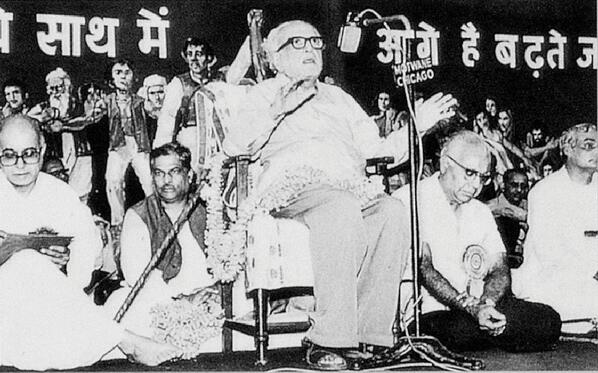
BJP’s inaugural conference, Bombay, 1980.
The Meenakshipuram incident brought a metamorphosis in the VHP. In the RSS strategy for the coming years, it was going to be the torchbearer. VHP took the assignment and raised the alarm of ‘Hinduism in Danger!’ It warned that, unless the conversions were immediately banned and reversed, Hindus would become minorities in India. The RSS sought to introduce the VHP to the various sects of Hindu religion and seek legitimacy for its future role as the vanguard of Hindu interests. Therefore, it organised a Hindu Unity conference in Delhi in September 1981 on the issue of Meenakshipuram, in which representatives from different Hindu organisations including the VHP participated. Karan Singh chaired the conference and it was decided to float a society called ‘Virat Hindu Samaj.’ The following office bearers were nominated to manage Virat Hindu Samaj: Karan Singh, president; Lala Hans Raj Gupta, working president; PC Gupta, commerce secretary, and Ashok Singhal, organising secretary. All of them trusted RSS men, except Karan Singh whose presence was primarily symbolic. As an able statesman and man of letters he was widely known among the educated. Moreover, as an erstwhile scione of the Hindu royal family of Jammu, his symbolic leadership would ensure the support of various Hindu sects to the imminent VHP-led movement. The Samaj decided to hold a ‘Virat Hindu Sammelan’ in Delhi on October 1981.
The Meenakshipuram incident brought a metamorphosis in the VHP. In the RSS strategy for the coming years, it was going to be the torchbearer. VHP took the assignment and raised the alarm of ‘Hinduism in Danger!’ It warned that, unless the conversions were immediately banned and reversed, Hindus would become minorities in India. The RSS sought to introduce the VHP to the various sects of Hindu religion and seek legitimacy for its future role as the vanguard of Hindu interests.
The Sangh Parivar organised the Virat Hindu Sammelan, a massive rally of the Hindus ‘for national identity and national integrity.’ The slogans raised in this rally are significant enough to be mentioned.
‘Hindu sare ek, ped ek hai shakha anek’ (All Hindus are one; it is one tree, even though it has innumerable branches); ‘Dhokha, lalach, petrodollar, nahin chalega, nahin chalega’ (fraud, corruption and petrol dollars shall not prevail); ‘Ek hi patni, ek Vidhan, Hindu ho ya Musalman’ (let there be one law and monogamy –– for Hindus and Muslims). These slogans reminded one of the ideal ideological thrust of the Golwalkar era by proposing a Hindu unity on the foundation of an anti-Muslim tirade. Another slogan which needs a special mention was ‘Hindu Hindu sab mil Jao, chooa chhot ka bhoot bhagao’ (let all Hindus unite and exercise The monster of untouchability). Golwalkar never gave priority to the abolition of untouchability. The Meenakshipuram conversion compelled the RSS to adopt a clear line on the issue. Deoras also understood that to become a national political force, the RSS had to co-opt the Untouchables on a much bigger scale. Therefore, the Virat Hindu Sammelan adopted the abolition of untouchability as one of its objectives.
Strategic Shift of the Congress: Indira Gandhi’s Hindu card
This religio-political strategy of the RSS got a further boost by Indira Gandhi’s new political approach. In fact, the post-Emergency Indira Gandhi government was a different one from her pre-Emergency regime. The radical slogan of Garibi Hatao was no more heard. Terms like ‘secular’ and ‘socialist’ fell out of favour. Rather, she preferred to remain under the spiritual guidance of Swami Dhirendra Brahmachari, made pilgrimages to sacred rivers, shrines and temples across the country and spoke of ‘Hindu hegemony’ in the Hindi heartland. Karan Singh was a prominent Congressmen and his participation in a RSS sponsored meeting must have been in her knowledge.
All these may be tactical as the Congress base among the minorities was shrinking and the conflict in Punjab and Kashmir had acquired a religio-political dimension. But Indira Gandhi’s new approach certainly generated enthusiasm among the leaders and cadres of the RSS. They felt happy that she was facilitating the growth of Hindu consciousness in the Hindi heartland, which the RSS had been aspiring all along. Some people in the RSS had raised the question: how far is it correct for the BJP to pursue diluted Hindutva, when ironically the Congress was taking a pro-Hindu posture.
Indira Gandhi’s thrust on Hindu rhetoric and rituals paid rich dividends to the Congress in the election of Jammu & Kashmir and Delhi held in early 1983. Surprisingly, the BJP was completely wiped out from the Jammu area, which had been traditional stronghold of the Jana Sanga. Most surprisingly for the party, in the Delhi elections, the Congress scored a convincing victory in the metropolitan council and corporation. Some speculated that the RSS cadres maintained a neutral stance in the elections as there was an understanding between the RSS and the Congress. However, no authentic information is available to substantiate this allegation. Many swayamsevaks of course voted for the Congress, as the RSS showed no enthusiasm for the BJP.
This religio-political strategy of the RSS got a further boost by Indira Gandhi’s new political approach. In fact, the post-Emergency Indira Gandhi government was a different one from her pre-Emergency regime. The radical slogan of Garibi Hatao was no more heard. Terms like ‘secular’ and ‘socialist’ fell out of favour. Rather, she preferred to remain under the spiritual guidance of Swami Dhirendra Brahmachari, made pilgrimages to sacred rivers, shrines and temples across the country and spoke of ‘Hindu hegemony’ in the Hindi heartland.
Though it is difficult to ascertain whether Indira Gandhi had a secret pact with the RSS, but her electoral victory certainly taught the RSS a few lessons: first, a distinct Hindu constituency still existed in the Hindi heartland, and if properly aroused, could give definite electoral dividends; and secondly, the loyalty of this constituency is not fixed and could be manipulated by any political party which had the ability to arouse it more passionately. These lessons had some implications for the RSS: first, its religio-political strategy, with VHP at the centre, needed to be further accentuated for mass mobilization of Hindus; secondly, the future ideological-political line of the BJP ought to be redefined.
Mass Mobilisation by VHP: Politics of Yatras
In the context of Indira Gandhi’s wooing of the Hindus, the VHP was perceived as an ideal instrument for the rival mobilization of the Hindus, particularly in north-India. The RSS carefully planned out the strategy. The traditional Hindu rituals of pilgrimage (tirth-yatras) had to be revived to reinforce the community consciousness among the Hindus. Accordingly the VHP organised three major ‘pilgrimages’ under the slogan of ‘Pilgrimage for Unity’ (Ekatmata Yatra) between mid-November and December 1983, for the whole of India: from Haridwar in the foothills of Himalayas to Rameshwaram in Tamil Nadu; from Pashupatinath in Nepal to Kanyakumari; and from Gangasagar in West Bengal to Somnath in Gujarat. Incidentally, all these three yatras intersected at Nagpur, the headquarters of the RSS.
The aim of these pilgrimages was to gloss over caste, sect and denominational differences and invoke the spirit of unity among Hindus. The message was clear: ‘Hinduism was in danger and no danger was more sinister than the possibility of a concerted movement of Muslim and untouchable communities working together; Signatories of the appeal to join the yatras include not only the members of the Sangh Parivar, but also the Arya Samaj, the Rotary Club, the Lions Club and also, more notably, the Jain Sampradaya, the Vaishnav Parivar, Sikh Parivar, Bauddha Sampradaya and Bharatiya Dalit Varga Sangh. Therefore, an attempt was made to associate virtually all non-Hindu communities with the yatras and to isolate the Muslims.
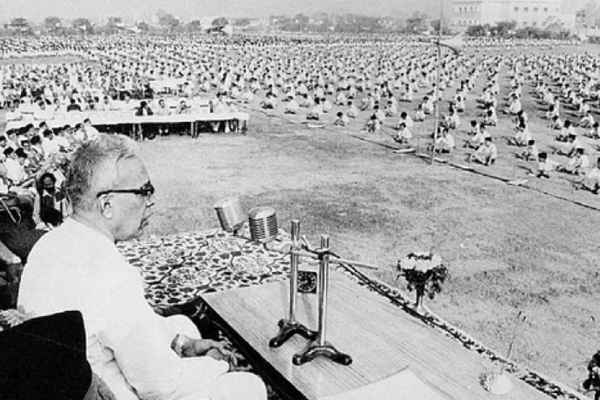
Balasaheb Deoras addressing a rally.
According to the VHP, this month-long campaign mobilized sixty million people and covered 85,000 km. The roots of the yatras were so designed that they touched maximum numbers of Hindu shrines and religious places. The chariots (rathas) of the VHP carried a huge portrait of Mother India (Bharat Mata) and urns (kalasha) containing Ganga water throughout the journey. Throughout the campaign, religious books, portraits of Bharat Mata, badges and stickers depicting ‘Om,’ yogasan charts and pictures of great men were sold through stalls setup on the road. Thus the VHP used a lot of Hindu religious ritual paraphernalia and sacred symbols to create a community consciousness among Hindus.
In the context of Indira Gandhi’s wooing of the Hindus, the VHP was perceived as an ideal instrument for the rival mobilization of the Hindus, particularly in north-India. The RSS carefully planned out the strategy. The traditional Hindu rituals of pilgrimage (tirth-yatras) had to be revived to reinforce the community consciousness among the Hindus. Accordingly the VHP organised three major ‘pilgrimages’ under the slogan of ‘Pilgrimage for Unity’ (Ekatmata Yatra) between mid-November and December 1983, for the whole of India…Incidentally, all these three yatras intersected at Nagpur, the headquarters of the RSS.
Invoking Politics of Ram: Deploying the Most Popular Hindu Symbol
The favourable response of the Hindus to these yatras then encouraged the RSS to search for a powerful and popular Hindu symbol that would further boost the mobilization. Ram, the most popular Hindu god of North India, fitted ideally into the scheme. In April 1984, the VHP, for the first time, announced its intention of liberating the Ram Janmabhoomi, the ‘birthplace of Ram’ at Ayodhya, which was allegedly destroyed by Babur to construct a mosque in the early sixteenth century. Few popular symbols like this could have mobilized the Hindus on such a gigantic scale.
The mobilization strategy was carefully worked out. The VHP Dharma Sansad gave a clarion call to free Lord Ram who was still behind bars and the Ram Janmabhoomi Mukti Yojana was launched. A huge chariot cavalcade – actually motorcade of trucks carrying images of ‘Lord Ram behind bars,’ were by a thousand karsevaks with swords and tridents – marched from Bihar towards Ayodhya. However, this march was interrupted due to Indira Gandhi’s assassination. 1985 witnessed the Ram-Janaki Rath Yatra. The stated aims were: first, to create a Hindu awakening and Hindu unity by emphasizing the need to transcend caste and sect differences in the worship of Lord Ram; and secondly, to popularize the concept of Ram Rajya, the ideal state.
Thus the most popular Hindu religious symbol of Ram was deployed to facilitate the politics of the Sangh Parivar.
The RSS announced that places like Somnath, Rameshwaram and Ayodhya were not merely religious places – but also points of national faith and unity. ‘Desecration of such points of national faith is an open aggression on our national life. And all such desecrated spots are verily blots on our national freedom. And eradication of all such stigmas is nothing less than vindication of our national ethos and honour.’ It viewed the Ram Janmabhoomi agitation as ‘a battle for national self-assertion’. In a surprising judgement in 1986, the Faizabad district judge ordered opening of the locks on the shrine allowing unhindered access to Hindu devotees. The VHP threatened to start a satyagraha if the locks were not open. The government complied with the court order and the temple was open to the devotees amidst much fanfare on 1 February 86.
Meanwhile, the issue of the Muslim Personal Law became a centre of controversy with the judgement of the Supreme Court in the Shah Bano case. The Rajiv Gandhi government not accept the Supreme Court ruling and introduced the Muslim Women’s Will under severe communal pressure. Why did the government yield to communal pressure? The Congress felt the need to stem the anger of Muslims over the Shah Bano verdict which was reflected in the results of various by-elections in Assam, Kishanganj (Bihar), Baroda (Gujarat) and other places. These defeats compelled the Congress to bring the Muslim Women’s Bill to retain its Muslim constituency. The Shah Bano controversy provided the Sangh Parivar a convenient handle to intensify their anti-Muslim campaign against the pretext of ‘appeasement of minorities.’ In the assessment of the Parivar leaders, this event marked a watershed in the mobilization of Hindus.
Ram, the most popular Hindu god of North India, fitted ideally into the scheme. In April 1984, the VHP, for the first time, announced its intention of liberating the Ram Janmabhumi, the ‘birthplace of Ram’ at Ayodhya, which was allegedly destroyed by Babur to construct a mosque in the early sixteenth century. Few popular symbols like this could have mobilized the Hindus on such a gigantic scale.
Consolidating the Organisation for Militant Offensive
During the decade 1979-89, the number of swayamsevaks of the RSS had swelled from 10 lakh to 18 lakh. The number of shakhas increased to 25,000 spreading over 18,880 cities and villages. It had 38 front organisations and 50 lakh people were connected with their activities. More importantly, the RSS showed spectacular growth in south India. For example, 3,000 daily shakhas and 900 weekly gatherings were organised in 12 out of 14 districts in Kerala. Therefore, the RSS was confident of its strength before it decided to go in for the offensive.
The centenary celebration year (1988-9) of K.B. Hedgewar provided the opportunity to the RSS to galvanize the cadre and propagate its ideology. Deoras spelt out three objectives during the year: first, to acquaint people with Hegdewar’s pre-RSS life; secondly, to propagate its ideology of Hindu Rashtra; and thirdly, to acquaint the people with its service projects. While centenaries of other patriots were ‘sarkari centenaries’ being sponsored by the government, this would be a ‘people’s centenary’ being solely ponsored by the RSS. On the government’s refusal to release a centenary stamp, the Rss, in protest, printed 1 crore cards having the picture of Hegdewar on the front and the map of Akhand Bharat with the saffron flag at the back. It planned that its swayamsevaks would read more than 2 lakh villages during the year. Thus this year was spent in preparation before the onslaught. Incidentally, the year 1999 was also celebrated as the silver jubilee of the VHP and various programs were undertaken to revitalize it.
A meeting of the top leaders of the Sangh Parivar took place at Ahmedabad on 24 March 1989. Beside Deoras, other important leaders of the Parivar who attended it were H.V. Sheshadri, Rajendra Singh Yadav, Rahul Joshi of the RSS, Ashok Singhal of the VHP, L.K. Advani, A.B. Vajpayee and S.S. Bhandari of BJP, B.P. Thengadi of BMS and Madan Das Devi of ABVP. A close coordination among the leading members of the RSS family was obviously required before going for the offensive.
Militant Offensive: Ramshila Pujan
Soon after the VHP’s decision to construct a temple in Ayodhya, the ABKM of the RSS appealed to all Hindus to extend their generous help for the purpose. The Allahabad High Court issues an interim directive to maintain the status quo of the disputed property. The RSS announced the Ram Janmabhoomi was beyond the purview of the court. The VHP now argued that if the government could overrule a judgement in the Shah Bano case through legislative action, it should also override the judgement on Ayodhya.
The event that became the eye of the storm, was Ramshila Pujan. The VHP launched a campaign to carry consecrated bricks, called Ramshilas, from every village with a population of 2,000 or above for the construction of the Ram temple. This programme was meticulously planned out. The bricks were taken to Ayodhya through panchayat centres, district headquarters and state capitals. A minimum contribution of Rs. 1.25 per head was collected. The VHP organised kirtans, prayers, discourses, musical concerts and symposia in the villages. The aim was to carry the ideology of Hindutva to each village and town and mobilize the Hindu through the medium of Ram. RSS leaders attended all the important Shila Pujan functions. The brick programme was simultaneously traditional in its vestments while highly innovative in form. Hindus of all regions and persuasions would engage in a common act of devotion to a single deity – Ram. No sponsor of a temple had ever before involved the general public in temple building on such a large scale.
During the decade 1979-89, the number of swayamsevaks of the RSS had swelled from 10 lakh to 18 lakh. The number of shakhas increased to 25,000 spreading over 18,880 cities and villages. It had 38 front organisations and 50 lakh people were connected with their activities. More importantly, the RSS showed spectacular growth in south India.
The beatific smile of Ram in VHP posters had been replaced by a war-like image – Ram with his trident and bow ready. This new imagery of Ram came from television epics – Ramanand Sagar’s Ramayana and BR Chopra’s Mahabharat. The latter especially glorified a militaristic and virile Hinduism. The telecasting of these epics on Doordarshan resulted from the decision of an insecure Congress party. Though Ram existed all along, popular perceptions were vague and varied. The telecasting of Ramayana, which was primarily based on the Ramcharitmanas of Tulsidas, ignored the traditions of ‘many Ramayanas’ projecting a uniform version. The serials certainly concreticised certain perceptions of Ram. For instance, when people were asked about Ayodhya before the telecast, though they identified Ayodhya as the birthplace of Ram, their idea about the place was still vague. After the telecast, they defined it as a town in UP. Thus the broadcasting of Ramayana and Mahabharata helped to create a national Hindu identity, a form of consciousness that had not hitherto existed.
It became easier for the VHP to project a militant Ram, a symbol of strength and power. Passionate slogans rent the air: ‘Saugandh Ram ki khate Hain hum Mandir vahin banaenge’ (We swear by Ram we will build the temple at the same site), ‘Baccha-baccha Ram ka, janma-bhoomi ke kaam ka’ (Every child belongs to Ram and for Ram Janmabhoomi) and ‘Jis Hindu ka khoon na khaule, khoon nahi vo pani hai; janmabhoomi ke kaam na aaye, vo bekaar jawanee hai’ (That Hindu whose blood does not boy has gotten his veins, you that is not do that does not serve the Ram Janmabhoomi is youth lived in vain). Therefore, the Ramshila campaign was not only mobilisational, it was confrontational as well. It became aggressively anti-Muslim and provoked communal violence. The government again yielded to the pressure of the RSS and VHP and permitted shilanyas.
BJP’s Metamorphosis: From Communal Harmony to ultra-Hinduism
Since the Meenakshipuram incident the VHP had taken a frontal role in religio-political mobilization. Being pushed back to the background, the BJP has been undergoing a transformation in tune with the new RSS strategy. The ideological dilemma that prevailed during its birth had gradually disappeared. In the beginning, in its attempt towards a synthesis, it demonstrated its commitment towards communal harmony. BJP’s ‘positive secularism’ promised ‘full protection of the life and property of the minorities.’ In his addressed to National Council of the party in 1982, Atal Behari Vajpayee advised the opposition parties to ‘resist the temptation of compromising with religious and communal fanaticism…simply to get power.’ The National Executive of the party passed a resolution on ‘Communal Harmony and Social Cohesion’ in 1983, which stated: ‘No religion encouraged or condones hatred of violence against one’s fellow beings…A Hindu, Moslem, Christian or whosoever maimed or killed is an Indian disabled or lost. Life and property lost is not just Hindu loss or Muslim loss but a national loss.’
The beatific smile of Ram in VHP posters had been replaced by a war-like image – Ram with his trident and bow ready. This new imagery of Ram came from television epics – Ramanand Sagar’s Ramayana and BR Chopra’s Mahabharat. The latter especially glorified a militaristic and virile Hinduism. The telecasting of these epics on Doordarshan resulted from the decision of an insecure Congress party.
The BJP began reverting to its ultra-Hindu posture after its 1984 electoral rout. It realized that the dilution of its earlier position as a champion of the Hindu had cost it dearly. Rajiv Gandhi’s landslide victory was attributed partly to his ability to win over most of the upper-caste support that previously went to the BJP. Therefore, a return-to-the-roots was to be adopted as the BJP’s main strategy. Deendayal’s ‘Integral Humanism’ replaced ‘Gandhian Socialism’ as the basic philosophy of the party in October 1985. LK Advani was installed as the new president of the party in May 1986.
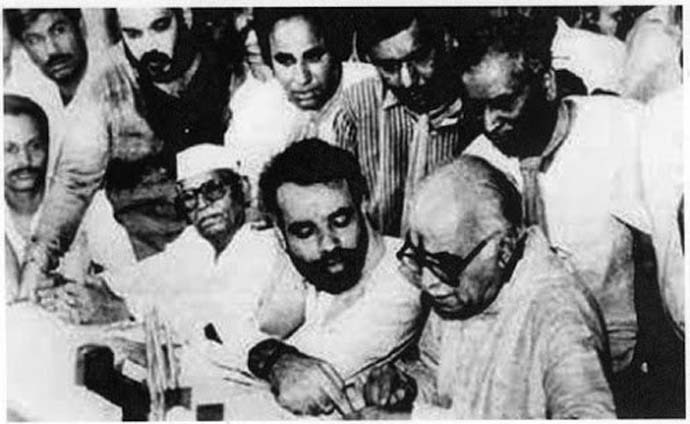
LK Advani filing his election nomination. Narendra Modi (L), then an RSS worker, assisting him.
The BJP hardened its anti-Muslim position on the Shah Bano judgement and the subsequent Muslim Women’s Bill. While the party welcomed the judgement of the Supreme Court as ‘pre-eminently just and sensible,’ it strongly rejected the Muslim League knew that this judgement was an interference in the religious affairs of Muslims. Rajiv Gandhi’s move to amend the law was described as ‘retrograde, anti-women and a surrender to obscurantism bigotry.’ Advani observed that the Muslim Women Bill ran counter to the Directive Principles of the Constitution (Article 44) enjoining the state to frame a Uniform Civil Code. He reiterated that the concept of sarva dharma sama bhava should never make any distinction between one citizen and another on the ground of religion. The BJP intensified its anti-Muslim campaign by accusing the government of promoting ‘minorityism.’ LK Advani summed up ‘minorityism’ as the promotion of a minority complex among the minorities, which serves neither national interest nor even minority interest. He branded the secularism of the government as ‘pseudo-secularism.’
Besides the Shah Bano case, certain other factors facilitated the BJP’s anti-Muslim propaganda. A massive Hindu backlash was building up because of the situation in Punjab and Kashmir. The poll analysis of the Assam assembly elections confirmed the understanding of the RSS that if a party could get a block of Hindu votes, it had a fair chance of coming to power. The Asom Gana Parishad (AGP), despite the Muslim opposition, could get the majority on the basis of block Hindu votes. Henceforth the BJP decided to aim at the consolidation of Hindu votes in its favour. For garnering the Hindu votes, it became a practical necessity to harden its stance on controversial issues like Art. 370, Minorities Commission and Ayodhya. The BJP found particular potential in the Ayodhya dispute, which could not only refurbish its Hindu identity, but also create a solid Hindu vote bank.
Babri Masjid to Ram Janmabhoomi
It is interesting to note that the early party documents recognised the existence of the Babri Masjid at Ayodhya without any reservations. In the national executive meeting of the party held between December 1986 and January 1987, LK Advani condemned a Muslim organisation’s boycott call of Republic Day celebrations ‘in protest against the Babri masjid issue.’ Hence the BJP did not mention Ram Janmabhoomi or Ram Temple until then. It is only on June 1989 the national executive of the BJP adopted its first detailed resolution on Ayodhya at Palampur (Himachal Pradesh). The resolution categorically blamed Babur for destroying the temple situated at Ram Janmasthan at Ayodhya and constructing a mosque in its place. It made clear that the court ‘cannot adjudicate’ this dispute. As the resolution of the party demanded: ‘The sentiment of the people must be respected and Ram Janmasthan handed over to the Hindu – if possible through a negotiated settlement, or else, by legislation. Litigation certainly is no answer.’
The BJP began reverting to its ultra-Hindu posture after its 1984 electoral rout. It realized that the dilution of its earlier position as a champion of the Hindu had cost it dearly. Rajiv Gandhi’s landslide victory was attributed partly to his ability to win over most of the upper-caste support that previously went to the BJP. Therefore, a return-to-the-roots was to be adopted as the BJP’s main strategy.
Thus, with the Palampur resolution, the Babri Masjid was changed to Ram temple; and the BJP publicly committed to a militant Hindu line. The Palampur resolution signalled that the time had come for the BJP to take the leading role in the Ram Janmbhoomi agitation, which was so far under the control of the VHP. This new role further demanded that the party had to intensify its fanatically anti-Muslim and aggressively pro-Hindu campaigns. In this atmosphere Lok Sabha elections took place at the end of 1989.
Giant Electoral Leap: Courtesy Hindutva
The BJP election manifesto criticized the Congress on the Shah Bano case, its attempt to recognise Urdu as a second language in UP and above all, for not allowign the rebuilding of the Ram temple at Ayodhya. After the 1989 elections, no party won an absolute majority in parliament. However, the BJP increased its strength to a hefty 86 compared to a meagre 2 in the previous parliament. In the Uttar Pradesh assembly elections, it increased its tally from 16 to 57. During the subsequent elections for the 8 state assemblies held in early 1990, the BJP increased its tally to 496 from 162 in the previous assemblies. This electoral performance further convinced the Sangh Parivar that militant Hindutva could pay further electoral dividend.
The Janata Dal led National front formed a minority government with the support of the BJP as well as the left parties. BJP’s support to the National Front government, spelt out that in Advani’s letter of 29 November 1989, referred to specific ‘reservations’ – Article 370, Uniform Civil Code, Human Rights Commission and Ram Janmabhoomi. However, the BJP, as a major supporter of the government, acquired a decisive say in the affairs of governance. Though it did not participate in the government, it had its pound of flesh; its leaders were appointed as Governors in a few states. Through the appointment of Jagmohan as the Governor of Jammu and Kashmir it tried to monitor the Kashmir policy. As the nature of this new government was fragile, major political parties soon competed to expand their own support beside bases anticipating a mid-term poll. While the BJP continued to consolidate its Hindu constituency through the movement of the RSS, VP Singh announced various concessions to the Muslims in order to strengthen his hold among Muslims.
RSS objects to VP Singh’s Muslim appeasement
The Sangh Parivar objected to the following gestures of VP Singh’s government towards the Muslims. First, the Prime Minister met the Shahi Imam of Jama Masjid to express his ‘indebtedness.’ Secondly, he appointed a Muslim as the Home Minister of India for the first time. Thirdly, he ordered to throw open all protected mosques under the supervision of the Archaeological Survey of India for prayers during the Ramzan period. The RSS reminded the Prime Minister that Indira Gandhi had resisted the pressure and allowed prayers at Safdarjung only for a day in 1984. Moreover, VP Singh granted Rs. 50 lakh for renovation of the Jama Masjid, which did not fall under the protector category of monuments. The RSS argued that the masjid did not require any renovations and the grant would only benefit the Imam.
The Palampur resolution signalled that the time had come for the BJP to take the leading role in the Ram Janmbhoomi agitation, which was so far under the control of the VHP. This new role further demanded that the party had to intensify its fanatically anti-Muslim and aggressively pro-Hindu campaigns. In this atmosphere Lok Sabha elections took place at the end of 1989.
VP Singh’s announcement from the Red Fort that Prophet Muhammad’s birthday would be observed as a public holiday received further hostile opposition from the Sangh Parivar. LK Advani pleaded that no public holiday was observed in Arab countries including Saudi Arabia on the Prophet’s birthday. Moreover, important Hindu festivals like Ram Navmi were not national holidays. He criticized the government’s ‘dual standards’ and accused it of following a discriminatory policy against the Hindus in this regard. Advani demanded that Ram Navmi, Janmashtami and Shivratri should be cleared as national holidays. Though all these gestures of VP Singh did not benefit the Muslims in any concrete terms, these were exploited by the Sangh Parivar to its fullest advantage in its anti-Muslim camapaing.
Mandal Report and the RSS Dilemma
Besides Muslims, VP Singh also decided to woo the backward castes. With his acceptance of the Mandal Commission Report which made an additional reservation of 27 per cent of jobs for the backward castes, Indian politics took a decisive turn. Various explanations are offered suggesting the motive of the implementation of this report which was in cold storage for about a decade. First. it was a counter-move to assert his leadership by containing the proposed rally of Devi Lal. Secondly, the Janata Dal was in need of creating a support base among these caste-groups in north India to counter the Congress. Finally, his objective was to blunt the edge of the pan-Hindu identity, which was so assiduously being shaped by the RSS.
This action of VP Singh immediately identified the Janata Dal with the interests of the numerically preponderant backward castes. But Singh and the Janata Dal incurred maximum hatred and contamination from the upper castes and the urban middle class, specially the professionals. Mandal decision also greatly antagonized the media and the intelligentsia, dominated by the upper caste and fearful of losing their earlier access to power due to their educational advantage.
But above all, acceptance of the Mandal reports threatened to split the political base of the BJP. The Sangh Parivar had been working meticulously to expand its upper-caste support by utilising the ideology of Hindu nationalism. Its targets were primarily the numerically strong and politically assertive backward castes. Singh’s strategy now seemed to strike at the roots of Hindu electoral consolidation so important to the BJP. The RSS criticised VP Singh’s ‘antique politics’ and described him as ‘a broker of the few affluent backward castes’ who would be the real beneficiaries of Mandalization of India.
Both Advani and Vajapayee threatened to withdraw support if the government did not review its stand. The BJP ruled Himachal Pradesh rejected the report. However, the party was caught in a trap: if it supported the issue, it would alienate its followers of the urban areas, particularly among the educated middle class; and if it opposed the Mandal report, it would lose the support of backward class Hindus of the rural areas. Moreover, many of its backward caste members in parliament prevailed upon it to not oppose the issue directly.
But above all, acceptance of the Mandal reports threatened to split the political base of the BJP. The Sangh Parivar had been working meticulously to expand its upper-caste support by utilising the ideology of Hindu nationalism. Its targets were primarily the numerically strong and politically assertive backward castes. Singh’s strategy now seemed to strike at the roots of Hindu electoral consolidation so important to the BJP.
The RSS was trapped. The best option to overcome this Mandal dilemma was to shift the focus on to the Mandir and the Muslims. Deoras focused on the Ram Janmabhoomi issue in his annual Vijaya Dashmi speech and announced: ‘We are no longer slaves and hence tolerate any symbols of slavery’ and any approach which implied that sarva dharma sama bhava was ‘a one-way track for Hindus while the others should continue to be intolerant.’ He was firm on the abrogation of Article 30 and 370 of the Constitution and adoption of a Uniform Civil Code. Accordingly on 12 September Advani announced that he would commence his Rath Yatra from Somnath Gujarat to Ayodhya in Uttar Pradesh, a distance of 10,000 km.
Rath Yatra: Concerted Effort of the Sangh Parivar
Advani’s Rath Yatra was not the decision of the BJP. It was a carefully designed strategy of the RSS. The yatra was a concerted effort of all the leading members of the RSS family. Bhaorao Deoras, brother of Balasaheb and a master political strategist of the RSS, reportedly spent two weeks in Delhi coordinating Advani’s Rath Yatra plants. The motive of yatra was clearly political rather than religious. The Toyota rath, carrying the party symbol prominently, made their political intentions very clear.
Advani was ideally suited to the purpose. He was the chosen Hero. Despite his insistence that it was the VHP who was leading the movement, it was Advani, who became identified as the leader of the movement. He was presented as a dharma dhwaja by the priest of the Somnath temple before he started his Dharma Yuddha (holy war). However, Advani very shrewdly interpreted that the issue was not Hindu vs. Muslim ot the construction of the temple but a’a crusade for strengthening national unity and promoting nationalism in the country.’ He was out to restore ‘national pride.’ The Rath Yatra would be ‘a great act of national integration.’ During the entire journey is severely criticized ‘pseudo-secularism’ and ‘minorityism’ of the Congress, Communists and the Janata Dal. He also made scathing references to the havoc caused by the mandal report.
For the people, the decorated rath was a temple. They greeted it with folded hands, touched the tyres and took the sand below it placing it on their forehead. Women danced and performed aarti. At every place the most common offering was traditional weaponry: arrows, dices, maces, swords, trishuls and kripans. At Jatpur in Gujarat 101 Kshatriya youths offered him a bowl containing their blood. The slogans raised were highly inflammatory: ‘Jab jab Hindu jaga hai, Desh mein molla bhaga hai’ (When the Hindus have risen, the mullahs have fled the country”; ‘Musalmanon ko donon sthan, Pakistan aur kabarsthan’ (Muslims have two places– Pakistan or the graveyard).
Advani’s Rath Yatra was not the decision of the BJP. It was a carefully designed strategy of the RSS. The yatra was a concerted effort of all the leading members of the RSS family. Bhaorao Deoras, brother of Balasaheb and a master political strategist of the RSS, reportedly spent two weeks in Delhi coordinating Advani’s Rath Yatra plants. The motive of yatra was clearly political rather than religious. The Toyota rath, carrying the party symbol prominently, made their political intentions very clear.
Advani was arrested at the fag end of his journey at Samastipur, Bihar. The BJP predictably withdrew support to VP Singh resulting in the downfall of his government. Though he failed to reach Ayodhya, he had already achieved his mission. The journey was a spectacular success in western and north India from the point of view of the Sangh Parivar. Advani ‘had succeeded in momentarily uniting a deeply fragmented Hindu society in a symbolic show of strength.’ Advani might have succeeded in uniting the Hindu, but he certainly divided the nation by igniting anti-Muslim hysteria among the Hindus. The entire country witness unprecedented communal violence. The Mulayam Singh government resorted to police firing on kar sevaks ways to protect the mosque on 30 October and 2 November killing 50 odd kar sevaks.
The killing of the kar sevaks provided the opportunity to the leaders of the Sangh Parivar to fuel the agitation. The RSS described this action as ‘re-enactment of Jallianwala’ and VP Singh and Mulayam Singh Yadav were compared with Babur and Mir Baqi respectively. The killed kar sevaks were declared martyrs and the ashes were to be carried in urns – called asthi kalash – in a procession all over the country. The objective was not just to highlight the atrocities of the state, but also to make the Muslims responsible for being the indirect cause of these killings. As a symbol, the mortal remains of the martyrs were ‘more powerful than the frigid breaks which were used first for the “shilanyas ceremony.”’
The popular Hindu support to the Rath Yatra was described by Advani as the ‘greatest Mass Movement’ in independent India. The response was certainly spectacular in bringing various sections of Hindus towards the ideology of Hindutva. The assertion of Hindu identity further widened the gulf between Hindus and Muslims. The response of the State, like on previous occasions, was ambivalent. It allowed Advani to complete major part of his journey. The communal virus had already spread before his arrest. The firing on kar sevaks complicated the situation further and provided a convenient handle to the RSS.
The Ram Janmabhoomi movement and Rath Yatra enabled the Sangh Parivar to penetrate the domain of Indian politics that had eluded it so far. No longer did it remain confined to its traditional geographical boundary – the pockets of urban north India; now extended its presence all over the country, both urban as well as rural, more than ever before. Further, the RSS made a conscious attempt to widen its narrow upper-caste support base. Though it is true that angry anti-Mandal upper caste youth lent their overwhelming support to the Ram Janmabhoomi agitation, the movement undoubtedly generated lot of enthusiasm among the youths belonging to the backwards, Dalits , tribals and created a pan-Hindu identity.
1991 Elections: Focus on Ayodhya
Soon after Rath Yatra the RSS galvanized the BJP and other affiliates for the elections. The BJP changed its presidents in February 1991; Murli Manohar Joshi, another hardcore RSS man replaced Advani. An aggressive electoral campaign was launched by the Sangh Parivar to reap an electoral harvest from the Ayodhya affair. The VHP announced plans for a gherao of parliament house on 4 April and went ahead with the plan despite the dissolution of the Lok Sabha. This huge rally in which more than a million people participated, was addressed by a host of Sangh Parivar leaders: Sudarshan, Singhal, Advani, Joshi, Uma Bharti, Sadhvi Rithambara, Mahant Avaidyanath. An appeal was made to the electorate to fill the parliament with Rambhakts – the devotees of Ram. Thus the 1991 election campaign was launched on a VHP platform on strident note.
The journey was a spectacular success in western and north India from the point of view of the Sangh Parivar. Advani ‘had succeeded in momentarily uniting a deeply fragmented Hindu society in a symbolic show of strength.’ Advani might have succeeded in uniting the Hindu, but he certainly divided the nation by igniting anti-Muslim hysteria among the Hindus. The entire country witness unprecedented communal violence.
BJP election manifesto, entitled Towards Ram Rajya, promised ‘Ram, Roti and Insaaf.’ It underlined its ‘high integrity, consistent ideology, internal discipline and stability, mature leadership and dedicated cadre to do them all.’ During the campaign video-vans toured different parts of the countries and one of the video tapes that was shown frequently was that of the kar seva at Ayodhya. It aroused great passion among Hindus. Emotive slogans such as ‘Jo Hindu hit ki baat karega, wahi desh par raj karega’ (Only those who can take care of the interests of Hindus will rule the country) and ‘BJP ko lana hai, Ram rajya banana hai’ (Bring the BJP to power to bring Ram’s rule) were raised. Firebrand speakers like Rithambara and Uma Bharati toured the country propagating Hindutva through their inflammatory anti-Muslim speeches and appealed to the people to vote for the construction of the Ram temple at Ayodhya.
BJP’s Emergence as National Alternative
BJP contested a record number of 477 seats. In comparison to the 1989 elections, when it won 86 Lok Sabha seats and got only 11.5 per cent of votes, this time it increased strength to 120 by polling 20 per cent of votes. In as many as 167 constituencies, the BJP polled more than 16.33 per cent of votes. The party achieved a landslide victory in Gujarat by pocketing over 50 per cent of votes and winning 20 out of 25 Lok Sabha seats. In UP the BJP polled 32.8 per cent votes and won 15 out of the 85 states. In Delhi it poured over 40 per cent of votes and captured 5 out of 7 seats. Though it suffered some losses in Rajasthan and Madhya Pradesh in terms of seats, it gained in votes. Only in Maharashtra and Himachal Pradesh did it lose seats as well as votes. The party also showed a presence in the southern states of Karnataka (9 seats) and Andhra Pradesh (1 seat), polling over 28 per cent and 9 per cent of votes respectively. It also improved its performance in the eastern states. In Assam it won 2 out of 14 seats. Though it could not open its account in West Bengal and Orissa, it got 11.7 about 10 per cent votes respectively. This widespread support base of the BJP made it a potential national alternative.

Balasaheb Deoras giving a speech.
Thus the BJP emerged on the Indian political scene with reinvigorated self-confidence; it became the largest Opposition party in the tenth Lok Aabha and LK Advani became the leader of the Opposition. Unlike the 1977 and 1989 Lok Sabha elections, this time its electoral victory was because of its own strength rather than the outcome of alliances with non-Congress opposition parties. The BJP projected itself as an independent political force and succeeded in attracting the electorate despite the attempt of the opposition parties to isolate it. Though the growth of the BJP could be attributed largely to the ‘temple politics’ it was also benefited by a steady decline of the Congress in north Indian states. Moreover, the BJP, since the Janata experiment in 1997, had been making inroads into the rural areas through the alliance partners. Beside its focus on the Mandir issue, its anti-Mandal stance and withdrawal of support to VP Singh’s government enhances its credibility among the upper castes. They rallied behind the BJP firmly, particularly in UP, to counter Mulayam Singh Yadav’s attempt to forge the unity of Muslims, backward castes and Dalits.
Thus the BJP emerged on the Indian political scene with reinvigorated self-confidence; it became the largest Opposition party in the tenth Lok Aabha and LK Advani became the leader of the Opposition. Unlike the 1977 and 1989 Lok Sabha elections, this time its electoral victory was because of its own strength rather than the outcome of alliances with non-Congress opposition parties. The BJP projected itself as an independent political force and succeeded in attracting the electorate despite the attempt of the opposition parties to isolate it.
Another landmark for the Sangh Parivar was the electoral victory of the BJP in UP; the capture of power in the state would give an impetus to its Ayodhya campaign. Kalyan Singh. who belonged to a backward caste, was chosen to become the chief minister bypassing the claims of old RSS loyalists and BJP heavyweights like Kalraj Mishra and Lalji Tandon. Obviously, the strategy was to enlist the support of the backward caste to counter the influence of Mulayam Singh Yadav, bete noire of the Sangh Parivar.
Sustaining anti-Muslim Propaganda
The Sangh Parvivar continued with its politics of yatras; Murli Manohar Joshi, Advani’s successor, undertook the Ekta Yatra from Kanyakumari to Kashmir. During the campaign he attacked Art. 370 and asked the people to reflect seriously on the dangers faced by the Indian national. He unfurled the national flag at Lal Chowk in Srinagar on 26 January 1992. Despite being a low-key affair in comparison to Advani’s Rath Yatra, it undoubtedly served a purpose by keeping anti-Muslim propaganda alive. In November 1992, LK Advani and MM Joshi led two pilgrimages, which on this occasion set off from Ayodhya towards Kashmir. The plan was to draw attention to the situation of the martyred Hindus in the state. These marches built up the pressure that would lead to the destruction of the Ayodhya mosque.

The Babri Masjid was demolished on 6th December, 1992
Salman Rushdie’s powerful and complex novel Satanic Verses created a furore among the Muslim community. The book was banned as it was allegedly an assault on their beliefs. The Muslim community stood up in defence of the divine nature of the truth as revealed by the prophet. This very argument was turned against Muslims in the Ayodhya controversy. Hindu fundamentalists insisted that the actual historical record was irrelevant. Religion is a matter of faith and belief, and since the Hindus believed that a temple to Ram once stood on the the site, this belief gave an extra-constitutional sanction to the programme. The continuing existence of the mosque on a site so sacred to Hindus, they argued, was a continuing personal assault on every Hindu.
The teleserial ‘Chanakya’ was telecast in 1991-2 by Doordarshan, the state-run TV channel. Though its theme appeared to be different from the epic serials ‘Ramayana’ and ‘Mahabharat,’ in reality it was a mere continuation. Its recurring motifs were ‘the twin concerns proclaimed by the proponents of today’s Hindu “rasthravadis”: the need for an ‘Akhand Bharat’ to combat fragmentation which lays ‘us’ open to the external enemy; and the need to combat through the creation of a new Hindu male, the hydra-headed corruption spawned by the wielders of state power, which represents the eating away of the vital of the nation by the “internal enemy.”’ The RSS was getting ready for its next assault in this milieu.
Operation Demolition
16 December 1992, 300,000 kar sevaks assembled at Ayodhya and thronged the domes of the Babri Masjid. Within five hours the mosque was razed to the ground and a new make-shift Ram temple was constructed amid the rubble of the disputed structure. It was a smooth operation. The Sangh Parivar celebrated the event as a historic victory. HV Seshadri observed that the demolition was undoubtedly morale boosting for the Hindu psyche. On 30 October 1993, hosting of the Bhagwa was symbolic assertion of the nation’s Hindu identity. But now, that standing monument to foreign invaders’ insult to the nation’s honour and independence had itself been erased. OP Kohli, the president of the Delhi unit of the BJP and a trusted RSS worker, expressed that it was good the mosque was destroyed because it had been a ‘blot in the face of India and, therefore, onour national honour.’ Even Vajapayee spoke in the same vein: Babri masjid ‘was a symbol of shame and has been erased.’ and put the blame on the Allahabad High court for delaying the judgement which provoked ‘a group’ to demolish the disputed structure. Girilal Jain, who had been vociferously championing Hindutva in his column, wrote that Muslims must learn a ‘lesson’ from the destruction of the mosque, and that they should remember that there was no going back to pre-6 December situation since political mobilization of Hindus as Hindus had never occurred before.
16 December 1992, 300,000 kar sevaks assembled at Ayodhya and thronged the domes of the Babri Masjid. Within five hours the mosque was razed to the ground and a new make-shift Ram temple was constructed amid the rubble of the disputed structure. It was a smooth operation. The Sangh Parivar celebrated the event as a historic victory. HV Seshadri observed that the demolition was undoubtedly morale boosting for the Hindu psyche. On 30 October 1993, hosting of the Bhagwa was symbolic assertion of the nation’s Hindu identity.
The Ayodhya demolition was carefully planned by the Sangh Parivar and was facilitated by the UP government headed by Kalyan Singh. According to the ‘Citizens’ Tribunal on Ayodhya’ the demolition was pre-planned and finalized at a meeting held on 5 December 1992 and attended by HV Sesdhadri, KS Sudarshan, LK Advani, MM Joshi, Vijaya Raje Scindia, Ashok Singhal, Vinay Katiyar, Uma Bharti, Sadhvi Ritambhara, Acharya Dharmendra, Pramod Mahajan, BL Sharma and Champat Roy, apart from Moreshwar Save of the Shiv Sena. However, the RSS does not admit so. Seshadri argued that the demolition was not a part of the plan on that day and they could not gauge the intensity of the feelings of the kar sevaks. Unexpectedly they broke the human chain of the swayamsevaks guarding the place. Deoras attributed the demolition to outside elements. BJP’s White Paper on Ayodhya claims that the demolition was ‘an uncontrolled and, in fact uncontrollable upsurge of spontaneous nature.’
The Fallout: Communal Riots
The demolition intensified Muslim anger and despair resulting in riots in many places. Celebrations and victory processions of the Hindus lead to riots at some places. As the Srikrishna Commission observes: ‘the irresponsible act of the hindutva parties in celebrating and gloating over the demolition of Babri masjid was like twisting a knife in the wound and heightened the anguish of the Muslims.’The celebration rally organised by the Shiv Sena in Dharavi is an example.’ In Bombay, a large number of Muslims assembled near Minara Masjid in Pydhoni at about 20.20 hours on 6 December to protest against demolition. Despite the fact that the protesters were not armed, the police mishandled the situation and by their aggressive posture turned the peaceful protests into violent. The riots continued till 12 December. The targets were mainly policemen and Hindu temples. The riots later turned to be less a case of Hindu-Muslim conflict than Muslims against the police and vice cersa. During these riots the police forces went completely berserk, showing again the process of communalisation of police forces, which had been going on for yours. Srikrishna Commission observed that ‘the response of the police to desperate victims, particularly Muslims, was cynical and utterly indifferent. On occasions, the response was that they were unable to leave the appointed post; on others, the attitude was that one Muslim killed, was one Muslim less.’
Another spate of rioting started on 6th January 1993, which was markedly different from the previous riots. This time, the Hindus started it under the provocation guidance of the Shiv Sena, which had been inciting them by anti-Muslim propaganda through the writings in its newspapers like Samna and Navaal. Bal Thackrey, the Shiv Sena supremo, advocated the doctrine of ‘retaliation; and the Shiv Sainiks, the cadre consisting of lumpen elements, unleased organised violence. The Sena went on offensive by selecting the shoes namaz, the congregation of Muslims at mosques for Friday prayers. To confront this, it organised maha aartis (great pujas) at various temples in the city; between 26 December 1992 and 5 February 1993, the Shivsena organised 498 maha aartis, of which 172 were attended by 1,500 persons or more. These congregations provided physical gathering points and emotional rallying spaces from which gangs moved out to attack Muslim targets. During the eight days of severe rioting, and ten further days of less severe rioting in January 1993, at least 515 people were killed and Rs. 4000 crore of property destroyed. BJP local leaders or members of other affiliates to the RSS were also involved in the rioting. But it was the Shiv Sena which was instrumental in organising the riots in Bombay. Communal violence also broke out in other parts of India. 200 people were killed at Surat and 139 at Bhopal. The Sangh Parivar’s politics thus plunged India into the worst communal violence since Partition, with 1,700 dead and 5,500 injured.
According to the ‘Citizens’ Tribunal on Ayodhya’ the demolition was pre-planned and finalized at a meeting held on 5 December 1992 … However, the RSS does not admit so. Seshadri argued that the demolition was not a part of the plan on that day and they could not gauge the intensity of the feelings of the kar sevaks. Unexpectedly they broke the human chain of the swayamsevaks guarding the place. Deoras attributed the demolition to outside elements.
Third RSS Ban: Narasimha Rao’s Ambivalence
On the evening of 6th December 1992 President’s rule was imposed in UP, shortly after Kalyan Singh resigned. Three days later, LK Advani, MM Joshi, Uma Bharti, Sadhvi Rithambara, Ashok Singhal and Vinay Katiyar were arrested on charges of inciting communal violence. The following day the RSS, the VHP. Bajrang Dal, Jamaat-e-Islami and the Islamic Sevak Sangh were banned. Their officers were sealed and all activities including the holding of the RSS shakhas were prohibited. The two common grounds of the banning of the RSS, the BJP and the Bajrang Dal were the participation of the members in the demolition of the Babri Masjid and their incitement of communal antagonism. The notification issued against the RSS added that it was intent on asserting that ‘members of certain religious communities have alien religions and cannot, therefore, be considered nationals of India.’ Subsequently the BJP government in MP, Rajasthan and HP were dismissed on 15 December and President’s rule imposed. Deoras protested the sacking of the BJP governments and described it as ‘unconstitutional, illegal and immoral.’
Unlike the previous bans of the RSS in 1948 and 1975, this time the government adopted a conciliatory rather than a firm attitude towards the RSS. Only a relatively small number of people were taken into custody under the Unlawful Activities (Prevention) Act. Key cadres had gone into hiding. Even this crackdown was soon relaxed and the seven leaders were freed on 10 January 1993. The government’s policy was further constrained by certain judicial decisions. The Madhya Pradesh High Court ordered in the end of December that the RSS offices in Jabalpur and Indore be opened. On 22 April 1993, it overturned the imposition of President’s rule in the state and ordered the restoration of the legislative assembly in Madhya Pradesh. The central government appealed before the Supreme Court.
The ban was covered by the Unlawful Activities (Prevention) Act, 1967, which required that notification should be confirmed by a Tribunal headed by a High Court judge. Justice PK Bahri of the Delhi High court was appointed in this capacity, and on 4 June 1993 he upheld the ban on the VHP for a statutory period of 2 years because of the inflammatory nature of some of its members speeches’ but cancelled those against the RSS and the Bajrang Dal. It was a major victory for RSS.
The Narsimha Rao government’s attitude was ambivalent in the entire episode. It decided to pursue a ‘legal’ rather than a ‘political strategy.’ The government literally believed Kalyan Singh’s assurance to the Supreme Court that his government would prevent the kar sevaks from damaging the mosque if they were allowed a symbolic kar seva nearby. Further, Rao was not in favour of dismissing Kalyan Singh’s government as he found Article 365 ‘too restrictive.’ Thus he allowed a huge congregation of kar sevaks and failed to protect the mosque from the onslaught; the police forces were asked to intervene only after the construction of a makeshift temple. The district administration allowed the sadhus to have darshan, thereby according legitimate sanctity to the temple; then this order was withdrawn. Later, the Allahabad High court permitted darshan. On 13 December, the CBI was entrusted with the task of investigating the demolition of the Babri Masjid. On 27 December, Central Government issued an ordinance for the acquisition of all the disputed areas in Ayodhya and later passed a Bill. The centre thereby acquired 66.7 acres of the land for two trusts which would construct a Ram temple and mosque respectively. The government also requested the President to seek the opinion of the Supreme Court under Article 143(1) weather a Hindu temple or any Hindu religious structure existed prior to the construction of the Ram Janmabhoomi-Babri Masjid in the area on which the structures stood.
The Narsimha Rao government’s attitude was ambivalent in the entire episode. It decided to pursue a ‘legal’ rather than a ‘political strategy.’ The government literally believed Kalyan Singh’s assurance to the Supreme Court that his government would prevent the kar sevaks from damaging the mosque if they were allowed a symbolic kar seva nearby. Further, Rao was not in favour of dismissing Kalyan Singh’s government as he found Article 365 ‘too restrictive.’
Narsimha Rao was clearly outsmarted by the Sangh Parivar in the Ayodhya episode. His hesitation, vacillation, indecision and inaction were perhaps guided by the organisational strength of the RSS, its capacity of militant mobilization and the enormous Hindu support it enjoyed at that juncture. He obviously wanted to avoid confrontation with the RSS which could have brought down his government and Rao was not ready for self sacrifice.
RSS Mobilization to Counter the Ban
RSS did not sit quietly during the ban period. It had a fair assessment of the government’s weaknesses and its own strength. Its confidence to face this ban was quite different from 1948 and 1975; it rightly coined slogans like ‘Pachattar nahin yeh banwe hai/Ek nahin hum lakho hai’ (This Is not 1975, but 1992, We are not one but lakhs). Though it suspended its routine activities, it resolved to ‘fight through all constitutional avenue this unjust and democratic and politically motivated action of the Central Government.’ It devised an ‘Action Plan’ to mobilize support, which included: (i) to collect at least five crore signatures on a memorandum to the President demanding that Ram temple be rebuilt at the garbha-griha; (ii) to organise a message demonstration at Delhi during the coming session of parliament to demand lifting of the ban on RSS, VHP and Bajrang Dal and to protest against the dismissal of BJP government in four states and; (iii) ‘Direct Action’ to force the government to seek a fresh mandate for the from the people for Lok Sabha and to hold fresh elections in UP, MP, Rajasthan and Himachal Pradesh.
The RSS was sure that the demolition was ‘bound to prove decisive in the next round of battle in the ballot’ and galvanized the BJP to launch a political offensive through the a Jan-Jagran programme from 1 January 1993 for the midterm portion for the Lok Sabha.
VHP and Bajrang Dal Emerged Stronger
The Ram Janmabhoomi agitation and the demolition of the mosque enhanced the popularity of the VHP and Bajrang Dal. VHP’s Dharma Sansad appears to have more sanctity and authority than the parliament of India. The popularity of VHP leaders like Ashok Singhal, Acharya Dharmendra, Giriraj Kishore and Vinay Katiyar gave them a sense of superiority vis-a-vis their BJP counterparts. Their statements at times created embarrassment for the BJP. While the VHP stated the Kashi and Mathura would be their next targets, the BJP disassociated itself from such demands. The VHP also demanded its pound of flesh in the forthcoming elections, thus attempting to enter into the political arena which the BJP had monopolised so far.
The Ram Janmabhoomi agitation and the demolition of the mosque enhanced the popularity of the VHP and Bajrang Dal. VHP’s Dharma Sansad appears to have more sanctity and authority than the parliament of India. The popularity of VHP leaders like Ashok Singhal, Acharya Dharmendra, Giriraj Kishore and Vinay Katiyar gave them a sense of superiority vis-a-vis their BJP counterparts. Their statements at times created embarrassment for the BJP.
Bajrang Dal, a VHP subsidiary, was a loose structure till Ayodhya; its members were recognised by their saffron headband bearing the word ‘Ram.’ Their role in demolition elevated the status in the Sangh Parivar. Though the RSS applauded its role, it it wanted to keep this potentially violent organisation under discipline and ideological control. Thus, in 1993, the Bajrang Dal became an all-India body with a more rigid organisational structure that resembled that of the RSS. Uniforms were introduced (blue shorts, white shirts and saffron scarf), trained RSS cadres were deputed to control the organisation and some 350 training camps were held during 1993.
Setback to Sangh Parivar
The Sangh Parivar got a severe jolt when the BJP suffered major electoral reverses in the 1993 assembly elections in UP, MP, and Himachal Pradesh. These elections were widely regarded as a referendum on the demolition. The demolition and the subsequent riots scared the traditional supporters of the BJP – the middle classes and the small traders. Despite the middle class support for Ram temple, they did not feel happy about the demolition. The business interests of the trading community were often affected by riots. The aggressive campaign of the VHP and Bajrang Dal further added to their anxiety and insecurity. Naturally supporters of the BJP had a suspicion whether the party would be able to handle the law and order situation effectively. Therefore, the ‘religious Hindus’ started deserting soon after that demolition; the ‘political Hindus’ appeared to be vacillating; sections of the middle class, and the petty trading and entrepreneurial cross found benefits in the new economic reforms of the Narsimha Rao government; the Backward Classes and Dalits were not prepared to overlook the upper-caste bias of the Hindutva forces.
The Sangh Parivar got a severe jolt when the BJP suffered major electoral reverses in the 1993 assembly elections in UP, MP, and Himachal Pradesh. These election were widely regarded as a referendum on the demolition. The demolition and the subsequent riots scared the traditional supporters of the BJP – the middle classes and the small traders.
Thus, the RSS made a decisive political journey under the leadership of Balasaheb Deoras. His daring decision to go for direct political intervention reached a climax with the demolition of the Babri Masjid 1992. The RSS participation in the anti-Emergency struggle and subsequently in the Janata experiment helped it to master the art of realpolitik. It showed willingness to accommodate and did not mind introducing some strategic changes in the notion of Hindu Rashtra for the sake of political power. Even after the dissolution of the Janata Party and the formation of the BJP, it continued with its politics of accommodation. Subsequently, however, the fear of losing its Hindu agenda and constituency to Indira Gandhi and Rajiv Gandhi and the political marginalization of its political affiliate, the BJP, compelled it to adopt the strategy of militant Hinduism. Thus, Ram Janmabhoomi movement was launched and politics was contextualised in terms of ‘Hindus’ and ‘Others.’ Political mobilisation was expressed in a new nomenclature – Kar Seva; Hindu religious and cultural symbols were carefully selected for political mobilization. The Rath Yatra turned out to be a mammoth political congregation to assert a ‘Hindu’ identity. The Ram Janmabhoomi movement and the Rath Yatra reversed the political future of the BJP, from a marginal political party to the national alternative. The RSS, its ideological mentor and organisational master, no longer remained peripheral; it had now come to occupy the centrestage of Indian politics as an indispensable player.
This excerpt has been carried courtesy the permission of Professor Pralay Kanungo. You can buy RSS’s Tryst with Politics: From Hedgewar to Sudarshan here.
ARCHIVE
An excerpt from R.C. Majumdar’s Historiography of Modern India, originally published in 1970, which lists problems with the historiography of the Indian historians of his time, caused by factors like a need to “trace the course of progress towards liberty” or an “inadequate knowledge of data” or to cater to “the policy of a political party”. “‘History is past politics’, is likely to be substituted soon by a new phrase,” writes Majumdar. “‘History is present politics’.”
Ramesh Chandra Majumdar (1888-1980), or R.C. Majumdar – as he is better known – is not just a major historian of the past century but also one of its intriguing figures. His vast body of work, written across a long career, ranges from ancient to regional to international histories and includes a history of the independence struggle as well as an extensive (if controversial) series which he edited and contributed to called The History and Culture of the Indian People. Appointed by the government to head a committee to write the history of the freedom struggle, he left over differences with the Education Ministry, publishing his own work on the subject separately instead. (You can read more about him in his bio.)
Even those who contradict or differ from him, make an allowance for his scholarship. Marxist historian Irfan Habib, for instance, disagrees vehemently with some of Majumdar’s interpretations, particularly those running through The History and Culture of the Indian People. Writes Habib:
“To him the entire period from c. 1200 onwards was one of foreign rule; Muslims were alien to Indian (Hindu) culture; the Hindus, oppressed and humiliated, wished nothing better than to slaughter ‘the Mlechhas’ (Muslims); the British regime was a successor more civilised than ‘Muslim rule’; yet real opposition to the British came from Hindus, not Muslims, even in 1857; and, finally, the national movement’s course was throughout distorted by concessions made to Muslims by Gandhiji, who was so much personally to blame for Partition.”
“The often unproven hypotheses and inferences that he bequeathed,” writes Habib. “Have all become firm truths for a very large number of educated people in India.”
Nonetheless, Habib states unequivocally that Majumdar was a “distinguished”, “tall” and “serious” historian and “whatever he speaks is on facts that all historians admit to be true”. Further, that Majumdar’s “great industry must extract admiration from his worst critics”.
Ramachandra Guha, in his book Democrats and Dissenters laments the lack of “conservatives of the past” like Majumdar; a historian “with whom one could have a debate”.
The excerpt we are carrying below is from Majumdar’s Historiography of Modern India, published in 1970. It was curated for Swapan Dasgupta’s Awakening Bharat Mata: The Political Beliefs of the Indian Right, which comprises – after three introductory chapters spanning 150 pages by Dasgupta, establishing context – a collection of primary sources expressing the Indian conservative viewpoint; interviews, addresses and writings with and/or from personalities as varied as Sister Nivedita, Bankimchandra Chattopadhyay, R.G. Bhandarkar, V.D. Savarkar, Ramananda Chatterjee, Sardar Vallabhbhai Patel, V.S. Naipaul and historians like Jadunath Sarkar and R.C. Majumdar.
In the following excerpt Majumdar points out flaws in Indian historiography (the writing of history based on a critical examination of sources) around three broad areas:
– A false glorification of India’s early past, such as in K.P. Jayaswal’s “theory of a Parliamentary form of Government in Ancient India, which is a replica of the British Parliament including the formal Address from the Throne, etc.” Also, “conscious attempts” made to “explain away, ignore, or minimize, the harsh treatment accorded by the high caste Hindus to the lower castes, particularly Sũdras and Caṇḍālas”. Also, the Gandhian idea that non-violence as an ideal “has been followed throughout the course of Indian history”.
“One rubs his eyes with wonder,” writes Majumdar. “For not only are all the known facts of Indian rulers against the assumption that they were averse to war, but war has been recommended by political texts as a normal practice and sanctioned by religion through the aśvamedha sacrifice and eulogy of digvijaya. The Court-poets flattered the patron king by giving him the proud epithet of ‘hero of hundred fights’.”
– Secondly, with regard to Medieval India, Majumdar sees “a distinct and conscious attempt to rewrite the whole chapter of the bigotry and intolerance of the Muslim rulers towards Hindu religion… prompted by the political motive of bringing together the Hindus and Musalmans in a common fight against the British.” This can be seen, according to Majumdar, in the repudiation of charges that “Muslim rulers ever broke any Hindu temple”, the assertion “that they were the most tolerant in matters of religion” and that “the Hindu population was better off under the Muslims than under the Hindu tributaries or independent rulers”, the exoneration of “Mahmūd of Ghaznī’s bigotry and fanaticism”, and “several writers in India” defending “Aurangzīb against Jadunath [Sarkar]’s charge of religious intolerance.”
Similarly, Majumdar takes issue with the thesis “that the Hindus and Muslims had no cultural conflict” and most certainly with the assertion made by Lala Lajpat Rai “that the Hindus and Muslims have coalesced into an Indian people very much in the same way as the Angles, Saxons, Jutes, Danes and Normans formed the English people of today”.
Referring to a presidential address at a 1965 Indian History Congress, held at Allahabad, Majumdar writes: “We are told that ‘Akbar’s political outlook was an outcome of the accumulated political wisdom of the generations that had gone by and was a logical development inherent in the very nature of the situation’. Unfortunately, nothing is said about his successors, particularly Aurangzīb… ”
– Finally, when it comes to the British period, Majumdar feels “national sentiments” “prejudiced a calm consideration” of episodes such as “(1) the Black Hole Tragedy and character of Sirāju’d-daulah; and (2) the nature of the outbreak of 1857”. Later, he provides an illustration by way of the official history of the ‘Freedom Movement in Bihar’ (1957):
“Much has been said in it of Kunwar Singh as the local organizer and a hero of the great ‘War of Independence’ in 1857. But no mention has been made of a document which shows that the local sepoys, who had already mutinied, threatened to plunder his house and property if he did not join them. It can hardly be excused on the ground of ignorance, for it was the author of this history who first brought this document to light and published it in a local magazine.”
This illustration – of the author of a history (in this case Kalikinkar Datta), excluding from it a document of significance that the author had himself brought to light – brings us to the larger points Majumdar raises in this excerpt, which go beyond the areas of Indian historiography he points out flaws in, to what Majumdar sees as the root cause of these flaws.
For some of Majumdar’s historiographical assertions have themselves been questioned. The approach reflected in his generalized statement regarding “the whole chapter of the bigotry and intolerance of the Muslim rulers towards Hindu religion”, for example, has been refuted by Habib who examined Majumdar’s perspective alongside that of Ishtiaq Hussain Qureshi who projected “the history of ‘Muslims in India’… as a struggle for a separate nation right from A.D. 712, when Muhammad ibn Qasim entered Sind at the head of an Arab army.”
“In 1961,” writes Habib. “When I wrote an article criticizing what I held to be communal approaches by two distinguished historians, R.C. Majumdar and I.H. Qureshi, I noted that while their interpretations (mainly in laying blame or lavishing praise) were so different, their ‘facts’ were often identical, derived from the same evidence.”
Those interested in this debate might also like to read excerpts we have carried from Brajadulal Chattopadhyaya’s Representing the Other? Sanskrit Sources and Muslims and Manan Ahmed Asif’s The Loss of Hindustan – The Invention of India.
This particular excerpt, however, is more about the larger points Majumdar raises as to the roots of historiographical bias, which are as relevant today as they were then:
– Does History have an objective ‘greater’ than itself? Is “the real task of history” to “reveal the spirit of humanity and trace the course of progress towards liberty”?
Majumdar quotes passages from the proceedings of Indian History Congresses held in 1964 and 1965, which argue in favour of this:
“History has a mission and obligation to lead humanity to a higher ideal and nobler future. The historian cannot shirk this responsibility by hiding his head into the false dogma of objectivity, that his job is merely to chronicle the past. His task is to reveal the spirit of humanity and guide it towards self-expression.”
History must avoid “ghastly aberrations of human nature, of dastardly crimes, of divisions and conflicts, of degeneration and decay, but of the higher values of life, of traditions of culture and of the nobler deeds of sacrifice and devotion to the service of humanity.”
“The most important subject awaiting the critical touch of the historian, however, is the national movement, particularly the age dominated by Mahatma Gandhi, which restored the independence of the country. The historian has to get behind the external of the events and detect the spirit which animated them, and thereby reveal the soul of India. That approach alone will help to surmount the danger of provoking communal, regional, linguistic and class hatreds which unfortunately beset history writing.”
“In other words,” writes Majumdar. “History should record the spread of Buddhism by Aśoka, but not the horrors of the Kaliṅga war, carefully avoid all references to the devastation and massacre of Mahmūd of Ghaznĩ, destruction of temples by Aurangzīb, the Jallianwala Bagh massacre by General Dyer, the holocaust during communal riots, and so on. The reason for these omissions is that such things bring some ‘unhealthy trends which militate against the concept of national solidarity or international peace’.”
Majumdar rejects this idea of historical study entirely. “The real purpose of history,” he writes. “Is to report correctly the progress of events, which did not in all cases mark the progress towards liberty”.
To reiterate, he quotes Jadunath Sarkar:
“I would not care whether truth is pleasant or unpleasant, and in consonance with or opposed to current views. I would not mind in the least whether truth is or is not a blow to the glory of my country. If necessary, I shall bear in patience the ridicule and slander of friends and society for the sake of preaching truth. But still I shall seek truth, understand truth, and accept truth. This should be the firm resolve of a historian.”
– The second question: Is the historical data available suitable for the generalisations often posited by Indian historians?
Majumdar prefaces this question by quoting the views of certain European historians on such generalisations:
“No; there is no one rhythm or plot in history, but there are rhythms, plots, patterns, even repetitions. So that it is possible to make generalizations and to draw lessons.” —A L Rowse
“History is a series of interesting happenings, often illogical and cataclysmic, not a logical and orderly development from causes to inevitable results. In short, history
is full of ‘might have beens’, and these sometimes deserve as much attention as the actual, but by no means necessary, course of events.” —Sir Charles Oman
Then, writes Majumder: “But whatever view we may adopt in this matter so far as the history of Europe is concerned, our very inadequate knowledge of data in Indian history renders such generalizations a difficult and risky process.”
He quotes Sarkar again:
“We have yet to collect and edit our materials, and to construct the necessary foundation—the bed-rock of ascertained and unassailable facts—on which alone the superstructure of a philosophy of history can be raised by our happier successors. Premature philosophizing, based on unsifted facts and untrustworthy chronicles, will only yield a crop of wild theories and fanciful reconstructions of the past.”
– The third question: How can one save history from the policy of the government of the day “which is at best the policy of a political party”?
Majumdar quotes Arab historian Ibn Khaldun who includes, in a long list of defects of historians:
“a very common desire to gain the favour of those of high rank, by praising them, by spreading their fame, by flattering them, by embellishing their doings and by interpreting in the most favourable way all their actions.”
Majumdar places the Indian National Congress government squarely in the dock for ‘inspiring’ or at least ‘influencing to a large extent’ the trends in historiography which he has raised issues with. Also, for “seeking to utilize history for the spread of ideas which they have elevated to the rank of national policy to their own satisfaction”.
“They are not willing to tolerate any history which mentions facts incompatible with their ideas of national integration and solidarity,” he writes. “They do not inquire whether the facts stated are true or the views expressed are reasonable deductions from facts, but condemn outright any historical writings which in their opinion are likely to go against their views about such things as Hindu-Muslim fraternity, the non-existence of separate Hindu and Muslim cultures on account of their fusion into one Indian culture, etc.”
Majumdar shares the story of Jadunath Sarkar’s exchange with President Rajendra Prasad on what a national history of India should look like. According to Sarkar, it should “not… try to suppress or whitewash everything in our country’s past that is disgraceful”. Prasad’s reply throws light on what could be at least one real purpose of history:
“No history is worth the name which suppresses or distorts facts. A historian who purposely does so under the impression that he thereby does good to his native country really harms it in the end. Much more so in the case of a country like ours which has suffered much on account of its national defects, and which must know and understand them to be able to remedy them.”
To drive his point home, Majumdar ends by quoting a book which critiques historiographical research in the authoritarian Soviet Union:
“The partisan approach to history prevents the observer from recognizing the sanctity of objective facts and requires him, where necessary, to deny the evidence of his senses; for there are occasions when he must subordinate his own personal concept of truth to that held by an individual or group of individuals, namely the party.”
Why is all of this relevant today, when there is neither any Soviet Union in the world, nor an Indian National Congress leading the national government agenda? Because the “party system” underlined by Majumdar, that constitutes “dangerous impediments to the growth of true historiography” still very much exists. The “ideas… elevated to the rank of national policy” may have changed, but the principal idea – of utilizing history to spread these ideas – has not gone anywhere.
It is irrelevant, in this context, what you think of ideas such as national integration or cultural essentialism. What is relevant is whether you believe history should be subservient to any agenda but its own – which is finding out the truth, the whole truth, and nothing but the truth – rather than national mythmaking.
It would be interesting to wonder how Majumdar might have reacted to the government of this day. He has referred to the killing of cows for the purpose of giving away their meat in charity – in the Mahabharata – in The History and Culture of the Indian People, and Habib often narrates an anecdote about him refusing to write for The Organiser after “it had published a paper alleging that monuments like the Red Fort and Taj Mahal had really been built by Hindu rulers”, and declining “to agree with K.M Munshi’s theory of an Aryan homeland in India”. In the following excerpt too, Majumdar refers in passing to a “recent acrimonious discussion on the killing of cows” and “a truly scientific spirit of history” being “sacrificed in discussions of such subjects as, ‘Did the Aryans come to India from outside?’, ‘Was there a caste system in the Ŗgveda?’”
R.C. Majumdar – whether or not you agree with him – was nobody’s fool. He was an independent and unique mind, which many of us haven’t heard enough from. It is time that – irrespective of what our ideological or historiographical convictions are – we hear more of what he had to say.
Excerpt from Awakening Bharat Mata: The Political Beliefs of the Indian Right by Swapan Dasgupta, and Historiography of Modern India by R.C. Majumdar
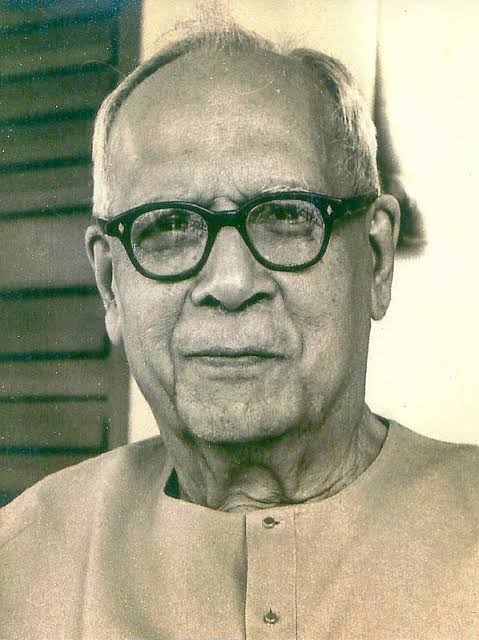
R.C. Majumdar
So far about the British historians. As regards the Indian historians the chief defect arose from national sentiments and patriotic fervour which magnified the virtues and minimized the defects of their own people. It was partly a reaction against the undue depreciation of the Indians in the pages of British histories like those of Mill, and partly an effect of the growth of national consciousness and a desire for improvement in their political status. It is a noticeable fact that these defects gained momentum with the movement for political reforms, and later, in the course of the struggle for freedom.
An extreme example is furnished by K.P. Jayaswal. The repeated declarations of British historians that absolute despotism was the only form of Government in Ancient India provoked Indian historians, who, following the footsteps of Rhys Davids, emphasized the existence of republican and oligarchical forms of Government. This reaction was, generally speaking, kept within reasonable limits of historical truth; but Jayaswal carried the whole thing to ludicrous excess in his Hindu Polity, by his theory of a Parliamentary form of Government in Ancient India, which is a replica of the British Parliament including the formal Address from the Throne, etc.; and many other statements of the kind. Similarly, historical discussions on social and religious matters are not unoften coloured by the orthodox views on the subject. The recent acrimonious discussion on the killing of cows shows how even clearly established facts of history are twisted to suit present views. A truly scientific spirit of history is often sacrificed in discussions of such subjects as, ‘Did the Aryans come to India from outside?’, ‘Was there a caste system in the Ŗgveda?’, and conscious attempts are often made to explain away, ignore, or minimize, the harsh treatment accorded by the high caste Hindus to the lower castes, particularly Sũdras and Caṇḍālas.
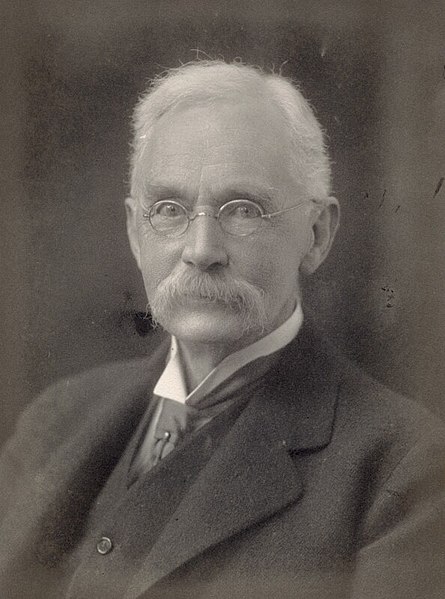
Thomas William Rhys Davids
A truly scientific spirit of history is often sacrificed in discussions of such subjects as, ‘Did the Aryans come to India from outside?’, ‘Was there a caste system in the Ŗgveda?’, and conscious attempts are often made to explain away, ignore, or minimize, the harsh treatment accorded by the high caste Hindus to the lower castes, particularly Sũdras and Caṇḍālas.
So far as Medieval India is concerned, there is a distinct and conscious attempt to rewrite the whole chapter of the bigotry and intolerance of the Muslim rulers towards Hindu religion. This was prompted by the political motive of bringing together the Hindus and Musalmans in a common fight against the British. A history written under the auspices of the Indian National Congress sought to repudiate the charge that the Muslim rulers ever broke any Hindu temple, and asserted that they were the most tolerant in matters of religion. Following in its footsteps a noted historian has sought to exonerate Mahmūd of Ghaznī’s bigotry and fanaticism, and several writers in India have come forward to defend Aurangzīb against Jadunath’s charge of religious intolerance. It is interesting to note that in the revised edition of the Encyclopaedia of Islam, one of them, while rewriting the article on Aurangzīb originally written by Sir William Irvine, has expressed the view that the charge of breaking Hindu temples brought against Aurangzīb is a disputed point. Alas for poor Jadunath Sarkar, who must have turned in his grave if he were buried. For after reading his History of Aurangzeb, one would be tempted to ask, if the temple-breaking policy of Aurangzīb is a disputed point, is there a single fact in the whole recorded history of mankind which may be taken as undisputed? A noted historian has sought to prove that ‘the Hindu population was better off under the Muslims than under the Hindu tributaries or independent rulers’. While some historians have sought to show that the Hindu and Muslim cultures were fundamentally different and formed two distinct and separate units flourishing side by side, the late K.M. Ashraf sought to prove that the Hindus and Muslims had no cultural conflict. But the climax was reached by the politician-cum-historian Lala Lajpat Rai when he asserted ‘that the Hindus and Muslims have coalesced into an Indian people very much in the same way as the Angles, Saxons, Jutes, Danes and Normans formed the English people of today’. His further assertion ‘that the Muslim rule in India was not a foreign rule’ has now become the oft-repeated slogan of a certain political party. The pity of the whole thing is that history books which do not incorporate these views are not likely to be prescribed as textbooks, and anyone who challenges these statements would be included in the black list of the Government of India.
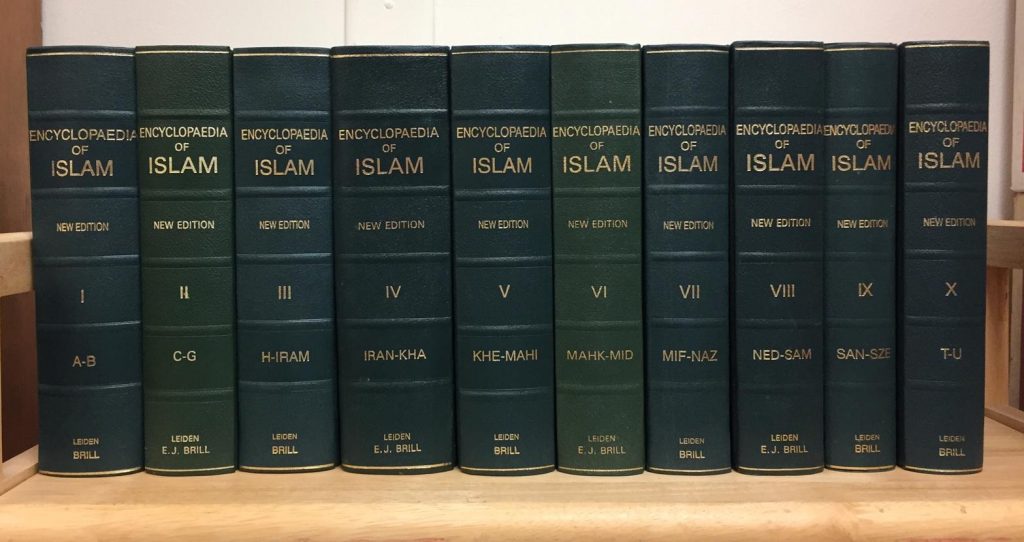
Encyclopaedia of Islam
While some historians have sought to show that the Hindu and Muslim cultures were fundamentally different and formed two distinct and separate units flourishing side by side, the late K.M. Ashraf sought to prove that the Hindus and Muslims had no cultural conflict. But the climax was reached by the politician-cum-historian Lala Lajpat Rai when he asserted ‘that the Hindus and Muslims have coalesced into an Indian people very much in the same way as the Angles, Saxons, Jutes, Danes and Normans formed the English people of today’.

Lala Lajpat Rai
Coming to the British period, national sentiments prejudiced a calm consideration of several episodes. Two of these are, (1) the Black Hole Tragedy and character of Sirāju’d-daulah; and (2) the nature of the outbreak of 1857. Having myself written on both these topics I would not like to dwell on the merits of the different points of view. Reference has already been made above to other episodes where historians have been influenced by racial or national sentiments. To these may be added many questions concerning economic and administrative systems; in almost all of which the British and Indian views have been influenced more or less by national or patriotic feelings.
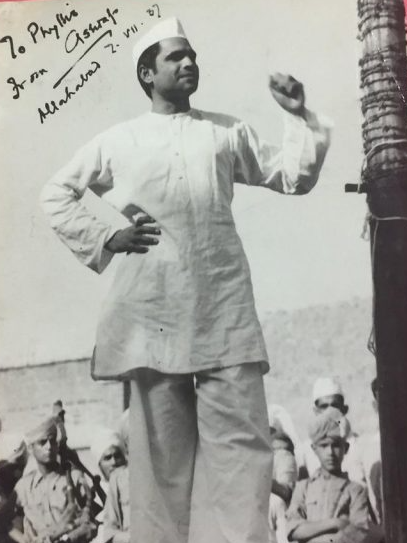
K. M. Ashraf
To this long array of defects of modern historiography in India, may be added another charge mostly levelled by Indians in recent times. It is said that the historians merely collect facts but do not make any generalizations or frame laws on their basis, while the real task of history is to reveal the spirit of humanity and trace the course of progress towards liberty. I do not think the charge is a legitimate one and would try to rebut it by the observations of some eminent scholars. The views of Fisher already quoted by me have been rebutted by other eminent historians like Acton who looks upon history as ‘the unfolding story of human freedom’. A.L. Rowse also refutes Fisher’s view and says: ‘No; there is no one rhythm or plot in history, but there are rhythms, plots, patterns, even repetitions. So that it is possible to make generalizations and to draw lessons.’ On the other hand, Sir Charles Oman in a way supports Fisher.
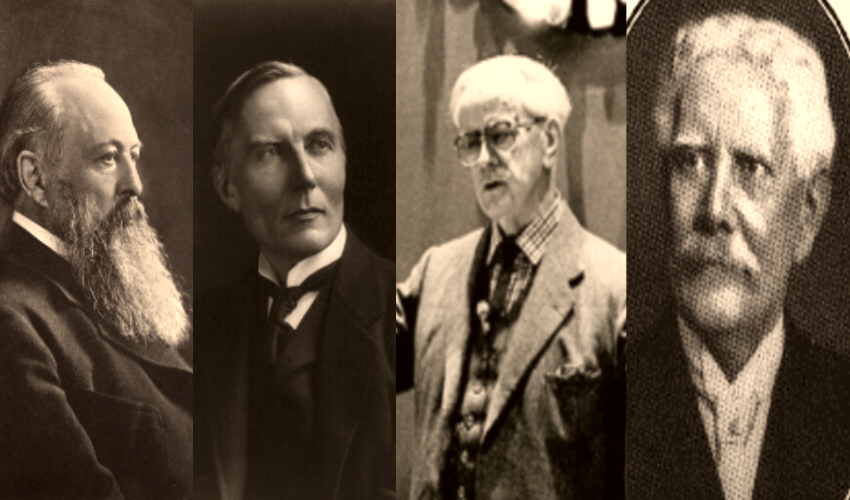
Left to Right: Acton, Fisher, A.L. Rowse, Sir Charles Oman
‘History’, says he, ‘is a series of interesting happenings, often illogical and cataclysmic, not a logical and orderly development from causes to inevitable results. In short, history is full of “might have beens”, and these sometimes deserve as much attention as the actual, but by no means necessary, course of events.’ But whatever view we may adopt in this matter so far as the history of Europe is concerned, our very inadequate knowledge of data in Indian history renders such generalizations a difficult and risky process. I fully share the views expressed by Sir Jadunath Sarkar in the course of his estimate of Sir William Irvine as a historian. He observes: ‘Some are inclined to deny Mr. Irvine the title of the Gibbon of India, on the ground that he wrote a mere narrative of events, without giving those reflections and generalizations that raise the Decline and Fall to the rank of a philosophical treatise and a classic in literature. But they forget that Indian historical studies are at present at a much more primitive stage than Roman history was when Gibbon began to write. We have yet to collect and edit our materials, and to construct the necessary foundation—the bed-rock of ascertained and unassailable facts—on which alone the superstructure of a philosophy of history can be raised by our happier successors. Premature philosophizing, based on unsifted facts and untrustworthy chronicles, will only yield a crop of wild theories and fanciful reconstructions of the past like those which J.T. Wheeler garnered in his now forgotten History of India, as the futile result of years of toil.’
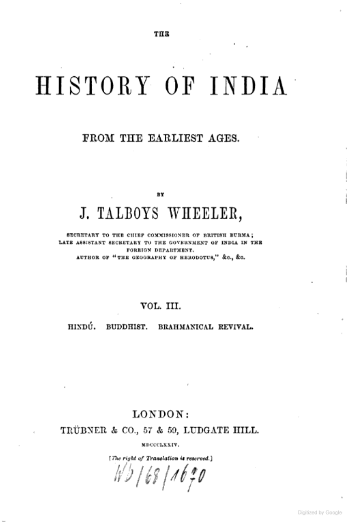
J.T. Wheeler’s History Of India
‘History’, says he [Sir Charles Oman], ‘is a series of interesting happenings, often illogical and cataclysmic, not a logical and orderly development from causes to inevitable results. In short, history is full of “might have beens”, and these sometimes deserve as much attention as the actual, but by no means necessary, course of events.’ But whatever view we may adopt in this matter so far as the history of Europe is concerned, our very inadequate knowledge of data in Indian history renders such generalizations a difficult and risky process.
‘Premature philosophizing, based on unsifted facts and untrustworthy chronicles, will only yield a crop of wild theories and fanciful reconstructions of the past like those which J.T. Wheeler garnered in his now forgotten History of India, as the futile result of years of toil.’ —Jadunath Sarkar

Jadunath Sarkar
During the post-Independence period, certain new trends are noticeable among the Indian historians in addition to those noted above. Strangely enough, these were foreseen by the great Arab historian Ibn Khaldun. He includes, in a long list of defects of historians, ‘a very common desire to gain the favour of those of high rank, by praising them, by spreading their fame, by flattering them, by embellishing their doings and by interpreting in the most favourable way all their actions’. He then justly observes that all this gives a distorted version of historical events. This characteristic is a growing menace to historiography in Modern India. The evil is enhanced by the fact that the Government, directly or indirectly, seeks to utilize history to buttress some definite ideas, such as the Gandhian philosophy of non-violence, the artificial conception of fraternal relation between the two great communities of India sedulously propagated by him, and several popular slogans evoked by the exigencies of the struggle for freedom. These have been accepted as a rich legacy by the Government, even though it practically means in many cases the sacrifice of truth, the greatest legacy which Gandhi meant to bequeath to mankind.
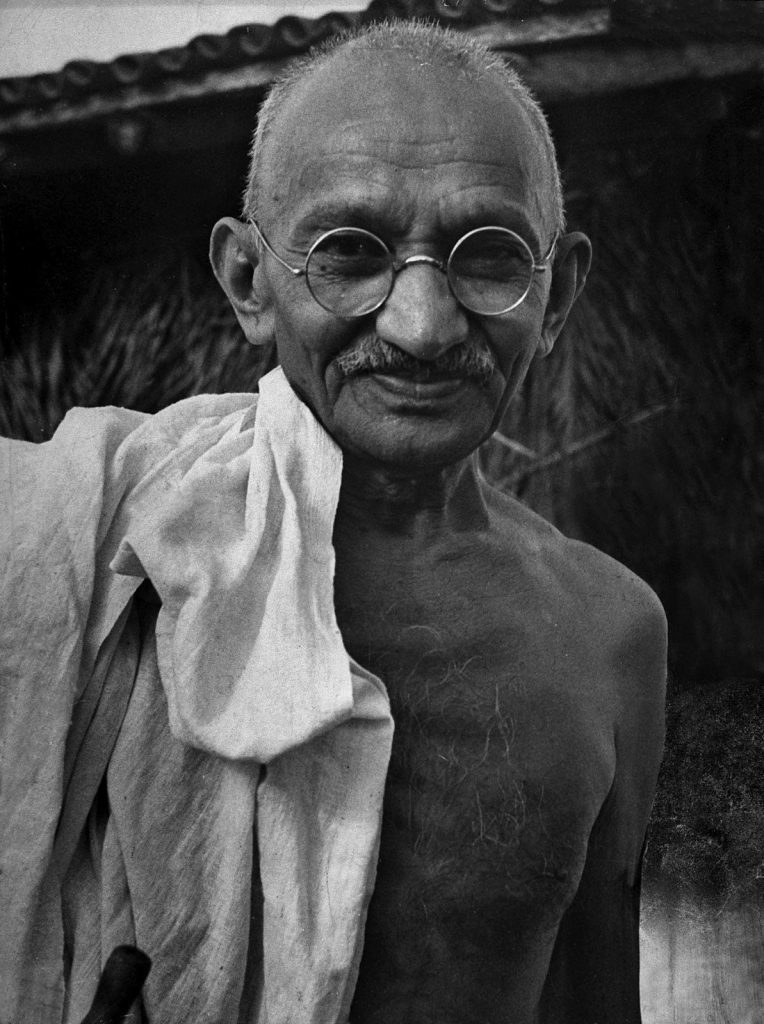
Mahatma Gandhi
Thus the cult of non-violence is an ideal devoutly to be wished for, but when historians of India seriously maintain that this ideal has been followed throughout the course of Indian history, one rubs his eyes with wonder, for not only are all the known facts of Indian rulers against the assumption that they were averse to war, but war has been recommended by political texts as a normal practice and sanctioned by religion through the aśvamedha sacrifice and eulogy of digvijaya. The Court-poets flattered the patron king by giving him the proud epithet of ‘hero of hundred fights’.
Such distortion of history can never be excused even in the name of Mahatma Gandhi. Similar distortions have been made on other topics mentioned above. The net result has been that the oft-quoted phrase, ‘History is past politics’, is likely to be substituted soon by a new phrase, ‘History is present politics’. The attitude of the British Government towards Cunningham who dared include unpalatable truths in history, has not quitted India along with the British, and an Indian historian today is not always really free to write even true history if it is likely to offend the ruling party. I know from personal experience that any expression of views, not in consonance with the officially accepted view, is dubbed as anti-national, and is likely to provoke the wrath of the Government.
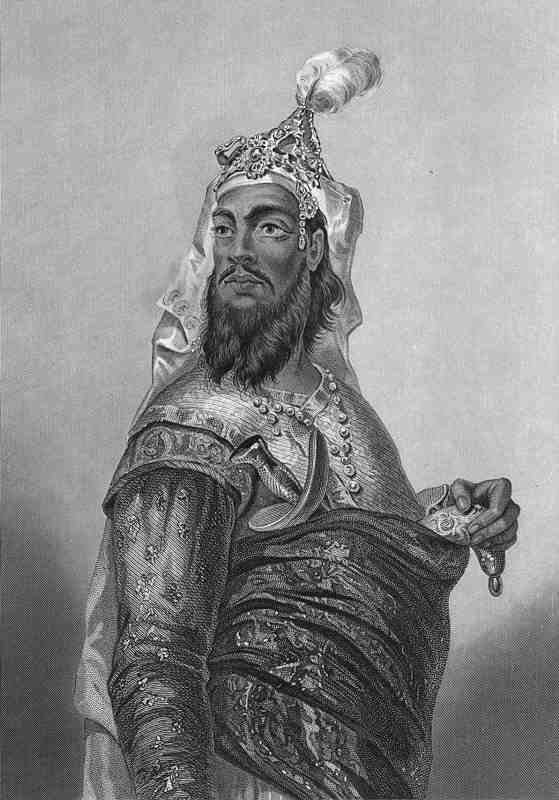
Kunwar Singh
No wonder that even eminent historians feel shy of, even if not prevented from, telling the whole truth. An apt illustration is furnished by the official history of the ‘Freedom Movement in Bihar’ (1957). Much has been said in it of Kunwar Singh as the local organizer and a hero of the great ‘War of Independence’ in 1857. But no mention has been made of a document which shows that the local sepoys, who had already mutinied, threatened to plunder his house and property if he did not join them. It can hardly be excused on the ground of ignorance, for it was the author of this history who first brought this document to light and published it in a local magazine. Some other documents of similar nature have also been withheld.
Arab historian Ibn Khaldun… includes, in a long list of defects of historians, ‘a very common desire to gain the favour of those of high rank, by praising them, by spreading their fame, by flattering them, by embellishing their doings and by interpreting in the most favourable way all their actions’… This characteristic is a growing menace to historiography in Modern India… The net result has been that the oft-quoted phrase, ‘History is past politics’, is likely to be substituted soon by a new phrase, ‘History is present politics’.
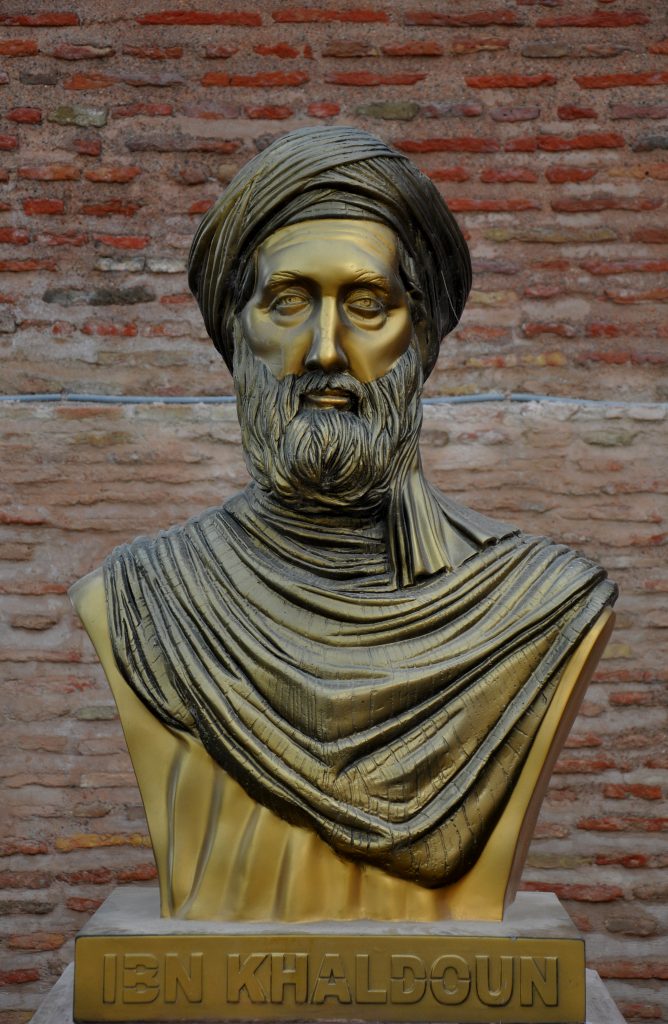
Bust of Arab historian Ibn Khaldun
When I was writing out the first draft of this lecture, the Proceedings of the Indian History Congress in 1964 and 1965 reached my hands. The Address of the General President in the 1964 session contains an elaborate presentation of the trends and concepts of history which appear to me to be a great departure from the ideals and concepts of history which I have outlined above. It may be reasonably assumed that these trends and concepts dominate at least a section of Indian historians today, and as such deserve careful scrutiny. ‘History,’ we are told, ‘has a mission and obligation to lead humanity to a higher ideal and nobler future. The historian cannot shirk this responsibility by hiding his head into the false dogma of objectivity, that his job is merely to chronicle the past. His task is to reveal the spirit of humanity and guide it towards self-expression.’ Some concrete steps are suggested for achieving this noble end. History must not call to memory ‘ghastly aberrations of human nature, of dastardly crimes, of divisions and conflicts, of degeneration and decay, but of the higher values of life, of traditions of culture and of the nobler deeds of sacrifice and devotion to the service of humanity’. In other words, history should record the spread of Buddhism by Aśoka, but not the horrors of the Kaliṅga war, carefully avoid all references to the devastation and massacre of Mahmūd of Ghaznĩ, destruction of temples by Aurangzīb, the Jallianwala Bagh massacre by General Dyer, the holocaust during communal riots, and so on. The reason for these omissions is that such things bring some ‘unhealthy trends which militate against the concept of national solidarity or international peace’. We are further told that ‘the purpose of history was to trace the course of progress towards liberty’. To crown all, it is declared that even ‘facts of Indian history and the Process of its march have to be judged by the criterion of progress towards liberty, morality and opportunities for self-expression’. So far as I understand, all these mark a definite departure from the accepted principles of historiography. As a concrete instance of the radical difference in the ideals of historiography which animates the post-Independence era in India, I may quote another passage from the Presidential Address: ‘The most important subject awaiting the critical touch of the historian, however, is the national movement, particularly the age dominated by Mahatma Gandhi, which restored the independence of the country. The historian has to get behind the external of the events and detect the spirit which animated them, and thereby reveal the soul of India. That approach alone will help to surmount the danger of provoking communal, regional, linguistic and class hatreds which unfortunately beset history writing.’
I must confess that in writing the ‘History of Freedom Movement’ I have not kept all this high ideal before me. I have preferred to follow the footsteps of Ranke, and may say in his words: ‘My book does not aspire to such lofty functions as are laid down in the Presidential address. Its aim is merely to show what actually occurred, with such comments as are obviously suggested by it.’
For a similar reason I demur to the principle that the purpose of history is to trace the course of progress towards liberty, and that even facts have to be arranged and judged by that criterion. The real purpose of history is to report correctly the progress of events, which did not in all cases mark the progress towards liberty. When all this is coupled with a definite instruction for avoiding mention of violent deeds, or even such facts as militate against the concept of national solidarity or international peace, we cannot but feel that Gandhian philosophy, which sought in vain to regenerate politics by infusing morality into it, has succeeded in inoculating history with his moral ideas. It may be a laudable project, but then, I would humbly suggest that history as a subject of study be omitted from our curriculum and replaced by books containing Gandhi’s philosophy and morality. The lack of knowledge of history may perhaps be made good by development of moral character.
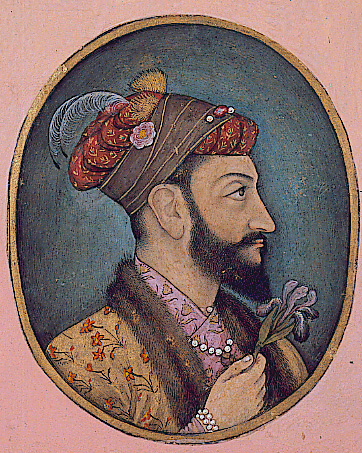
Aurangzeb, 1650
The real purpose of history is to report correctly the progress of events, which did not in all cases mark the progress towards liberty. When all this is coupled with a definite instruction for avoiding mention of violent deeds, or even such facts as militate against the concept of national solidarity or international peace, we cannot but feel that Gandhian philosophy, which sought in vain to regenerate politics by infusing morality into it, has succeeded in inoculating history with his moral ideas. It may be a laudable project, but then, I would humbly suggest that history as a subject of study be omitted from our curriculum and replaced by books containing Gandhi’s philosophy and morality.
I would cite only one more example which gives a forecast of the shape that Indian history would take in the future. The President of Section II (Medieval India) of the Indian History Congress held at Allahabad in 1965 begins his address by pointing out the chief errors of Sir Henry Elliot and other Anglo-Indian writers of Medieval India. One of these is, to quote his own words, ‘the wholly impossible and erroneous conclusion that the Musalmans, as such, were a governing class, while the Hindus, as such, were the governed’. Another error is that ‘while pointing out the crimes of the medieval kings and their governing classes they quite overlooked what was happening at the same time in contemporary Europe’.
The President then refers to ‘India’s contact with Islam which had a deep impact on social, cultural, political and economic life of the country’. The net result of this is reflected in the following successive stages in the evolution of Medieval India. First, the Turkish State of the Ilbarites; second, the Indo-Muslim State of the Khaljī and the Tughlaqs, and third, the emergence of the Indian State of the Mughals. We are told that ‘Akbar’s political outlook was an outcome of the accumulated political wisdom of the generations that had gone by and was a logical development inherent in the very nature of the situation’. Unfortunately, nothing is said about his successors, particularly Aurangzīb, though it is claimed that on account of the continuity in this cultural evolution, the Mughal empire lasted longer than the whole of the Sultanate period.
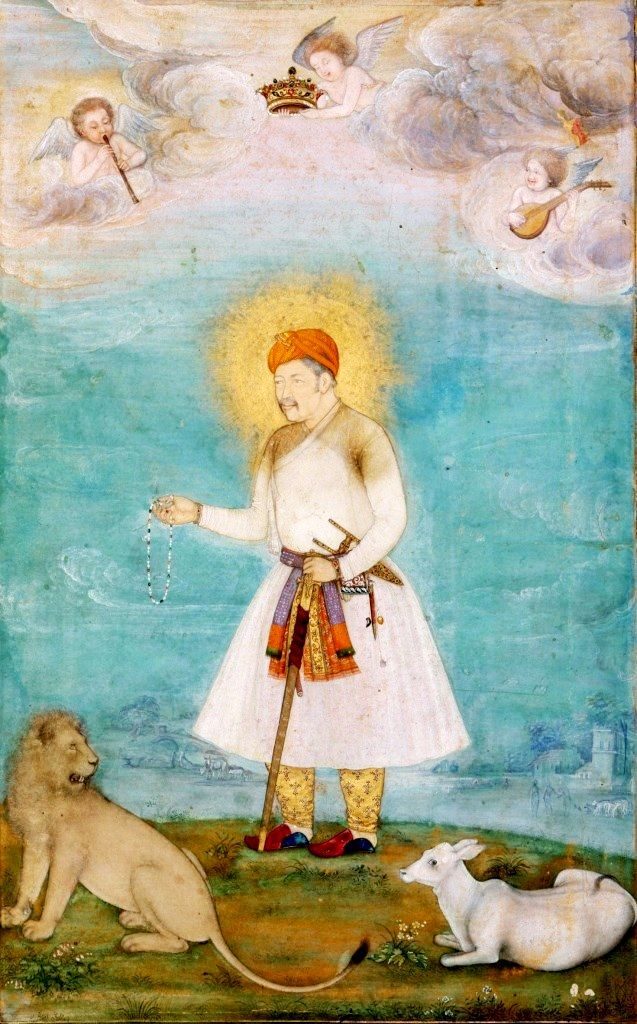
Akbar with Lion and Calf, by Govardhan
There is hardly any doubt that the modern trends of Indian historiography noted above are inspired, or at least influenced to a large extent, by the attitude of the Government in deliberately seeking to utilize history for the spread of ideas which they have elevated to the rank of national policy to their own satisfaction. They are not willing to tolerate any history which mentions facts incompatible with their ideas of national integration and solidarity. They do not inquire whether the facts stated are true or the views expressed are reasonable deductions from facts, but condemn outright any historical writings which in their opinion are likely to go against their views about such things as Hindu-Muslim fraternity, the non-existence of separate Hindu and Muslim cultures on account of their fusion into one Indian culture, etc. I mention these particular instances, as I am in a position to substantiate them by documentary evidence, but reference may be made to many other illustrations, less susceptible to positive evidence. All these things are done in the name of national policy, which is at best the policy of a political party. But it violates the only national policy, which cannot be challenged by any party, namely ‘Truth shall prevail’, the motto engraved on our national emblem. This policy also underlies the most advanced ideal of historiography, as I have discussed above, and was expressed more than fifty years ago by the greatest historian of India, Sir Jadunath Sarkar, as chairman of a historical conference in Bengal. The following is a literal English translation of the original Bengali passage: ‘I would not care whether truth is pleasant or unpleasant, and in consonance with or opposed to current views. I would not mind in the least whether truth is or is not a blow to the glory of my country. If necessary, I shall bear in patience the ridicule and slander of friends and society for the sake of preaching truth. But still I shall seek truth, understand truth, and accept truth. This should be the firm resolve of a historian.’
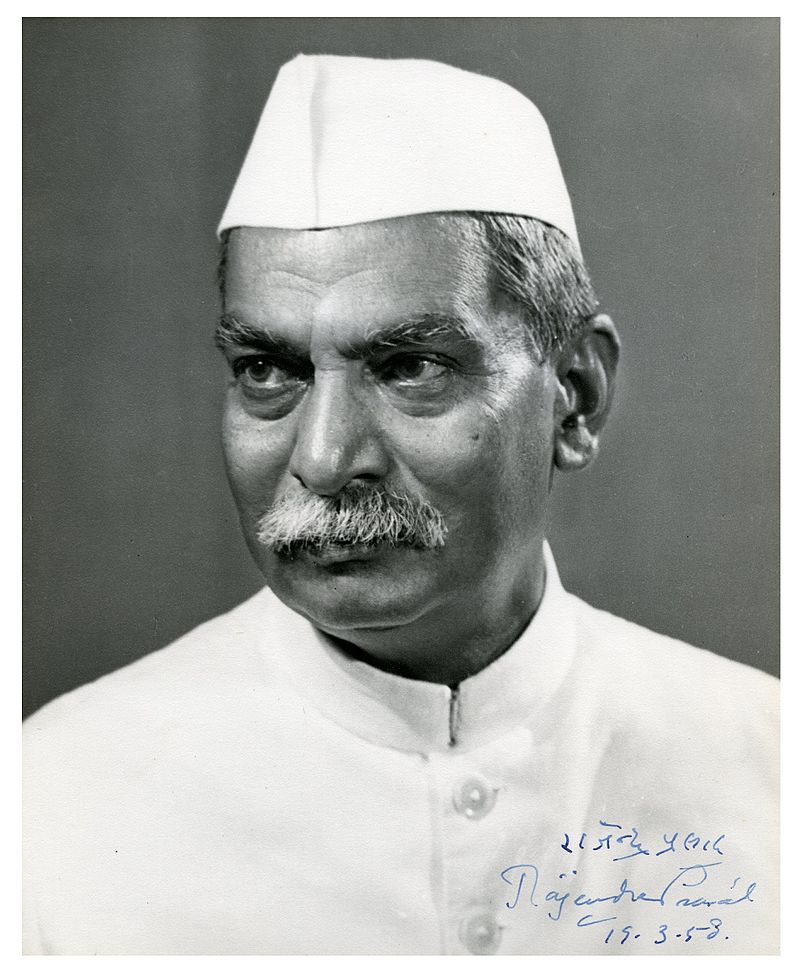
Rajendra Prasad
Later, when Dr. Rajendra Prasad launched a scheme to write a comprehensive national history of India on a cooperative basis and requested Jadunath to become its chief editor, Jadunath wrote to him on 19 November 1937: ‘National history, like every other history worthy of the name and deserving to endure, must be true as regards the facts and reasonable in the interpretation of them. It will be national not in the sense that it will try to suppress or whitewash everything in our country’s past that is disgraceful, but because it will admit them and at the same time point out that there were other and nobler aspects in the stages of our nation’s evolution which offset the former. . . . In this task the historian must be a judge. He will not suppress any defect of the national character, but add to his portraiture those higher qualities which, taken together with the former, help to constitute the entire individual.’
In his reply to the above, dated 22 November 1937, Dr. Rajendra Prasad wrote: ‘I entirely agree with you that no history is worth the name which suppresses or distorts facts. A historian who purposely does so under the impression that he thereby does good to his native country really harms it in the end. Much more so in the case of a country like ours which has suffered much on account of its national defects, and which must know and understand them to be able to remedy them.’

Jadunath Sarkar
‘I entirely agree with you that no history is worth the name which suppresses or distorts facts. A historian who purposely does so under the impression that he thereby does good to his native country really harms it in the end. Much more so in the case of a country like ours which has suffered much on account of its national defects, and which must know and understand them to be able to remedy them.’ —President Rajendra Prasad to Historian Jadunath Sarkar
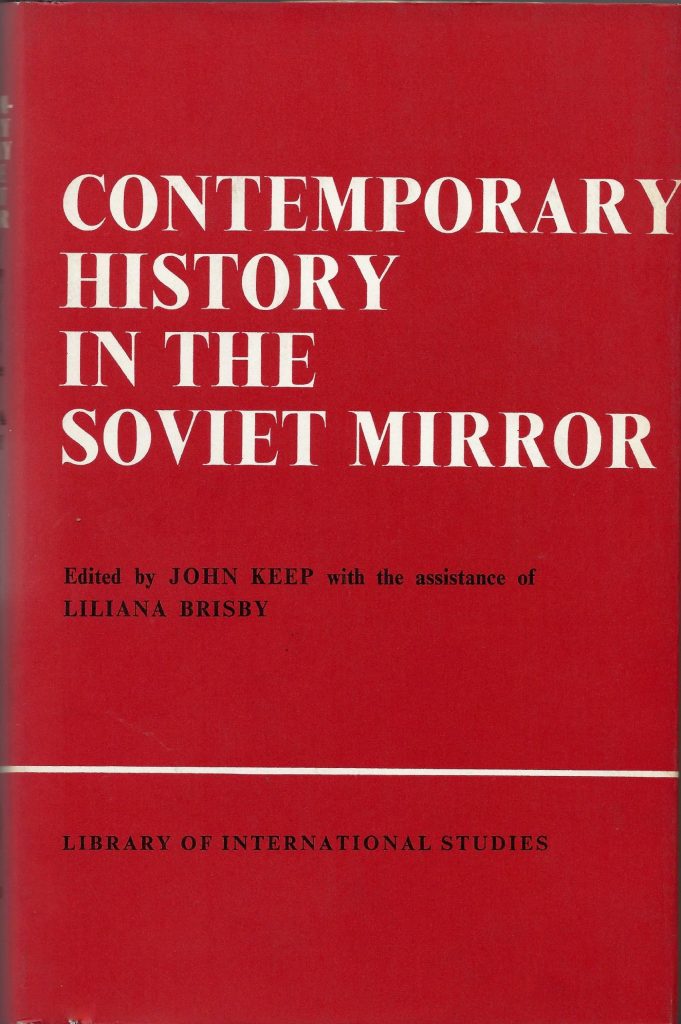
Contemporary History in the Soviet Mirror
I solemnly hope and pray that these words would be remembered by the present and future generations of Indian historians, for I see great dangers lurking ahead. I was reading recently a book entitled Contemporary History in the Soviet Mirror published in 1964. I was struck by many passages, a few of which I quote at random.
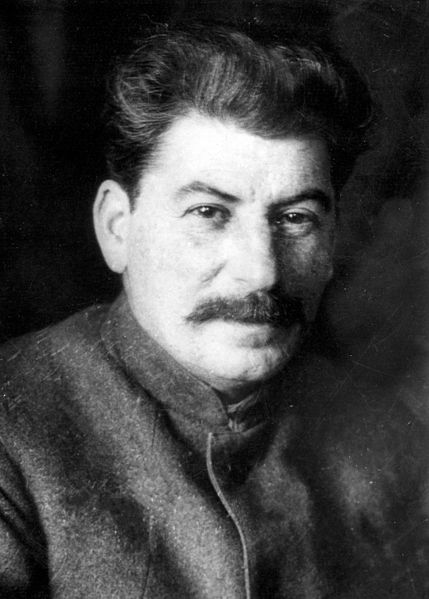
Stalin
‘The present official line in historiography is, if anything, even more militantly partisan than it was in Stalin’s day.’
‘The Soviet politicians have a narrow and utilitarian view of the functions of scholarship.’
‘Nothing could be more destructive of historical scholarship than the claim that the party is the repository of supreme wisdom. . . . In the Soviet Union today historians, like everyone else, are required to believe that, by some mysterious process unfathomable to an ordinary mortal, the party has been infallible.’
‘The partisan approach to history prevents the observer from recognizing the sanctity of objective facts and requires him, where necessary, to deny the evidence of his senses; for there are occasions when he must subordinate his own personal concept of truth to that held by an individual or group of individuals, namely the party.’
I hope it would be obvious to most people that these symptoms constitute dangerous impediments to the growth of true historiography. What is less obvious is that our country, dominated by party system, is rapidly moving towards the same tragic end.
This excerpt has been carried courtesy the permission of Swapan Dasgupta. You can buy Awakening Bharat Mata: The Political beliefs of the Indian Right here.
ARCHIVE
AYODHYA: 1800–1857
A glimpse of life during this period in Ayodhya is hard to come by, but rare interstices in the form of British gazettes give us fleeting insights. Published in 1828, Walter Hamilton’s gazette is devoid of any specific details. But it does capture the general attributes of Awadh—the province and Ayodhya. Written twenty-six years before the great rebellion of 1857 and almost an equal number after the Treaty of 1801, it describes the Hindus of the province as:
‘ …a very superior race, both in their bodily strength and mental faculties, to those of Bengal and the districts south of Calcutta… Rajpoots or military class here generally exceed Europeans in stature, have robust frames, and are possessed of many valuable qualities in a military point of view. From the long predominance of the Mahomedans a considerable proportion of the inhabitants profess that religion, and from both persuasions a great number of the Company’s best sepoys are procured.’
This is also perhaps how the moniker of Awadh being ‘a nursery of sepoys’ came into being. About Ayodhya, the town of Ram, Hamilton writes:
‘This town is esteemed as one of the most sacred places of antiquity.
‘Pilgrims resort to this vicinity, where the remains of the ancient city of Oude, the capital of the great Rama, are still to be seen; but whatever may have been its former magnificence it now exhibits nothing but a shapeless mass of ruins. The modern town extends a considerable way along the banks of the Goggra, adjoining Fyzabad, and is tolerably well peopled; but inland it is a mass of rubbish and jungle, among which are the reputed sites of temples dedicated to Rama, Seeta, his wife, Lakshman, his general, and Hunimaun (a large monkey), his prime minister. The religious mendicants who perform the pilgrimage to Oude are chiefly of the Ramata [Ramawat] sect, who walk round the temples and idols, bathe in the holy pools, and perform the customary ceremonies.’
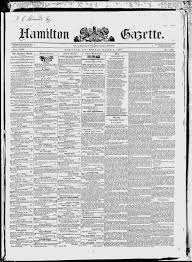
The Hamilton Gazette
It is noteworthy that Hamilton finds not one temple worthy enough to be described in detail. He merely sums up the religious affiliation—belonging to the Ramanandi Ramawat sect—of the monks, and his account also makes no mention of Ram’s birthplace temple or the Hanumangarhi or even the ancient Nageshwarnath temple. Hamilton recorded what he saw, and perhaps this was all there was to be found: a town in the wilderness, within which lay ruins that had come to be woven with cobwebs and legends of Ram. The majority of Ayodhya’s population stayed close to the river, and some isolated temples had come up across the inland keorah (a tree used for perfumes and spices) forests. In short, it was (unlike it is now) a place shorn of the humdrum of a big pilgrim centre or the buzz of the religious bazaar of other Hindu centres like Haridwar and Banaras.
It is noteworthy that Hamilton finds not one temple worthy enough to be described in detail… Hamilton recorded what he saw, and perhaps this was all there was to be found: a town in the wilderness, within which lay ruins that had come to be woven with cobwebs and legends of Ram… In short, it was (unlike it is now) a place shorn of the humdrum of a big pilgrim centre or the buzz of the religious bazaar of other Hindu centres like Haridwar and Banaras.
FIRST BATTLE OVER A PLACE OF WORSHIP IN AYODHYA
The year 1855 was momentous in the history of Ayodhya. It is often cited as the year in which the recorded history of the Ram Janmabhoomi– Babri Masjid dispute commences. It should also be seen as a marker of the half-truths that have come to systematically shroud the vexed issue. This is because in 1855, the bloody conflict that took place was not over the supposed birthplace of Ram. It was over the Hanumangarhi temple and the claims by certain Sunnis that the Bairagis of Hanumangarhi had destroyed a mosque that existed atop it. The Muslims charged on the Hanumangarhi but were repelled and routed. They hid inside the mosque of Babur that lay at a distance of less than a kilometre from Hanumangarhi. In this way, the site of the Babri Masjid became embroiled in the dispute over Hanumangarhi. At the time of the 1855 riot, the Bairagis had not claimed the Babri mosque as the birthplace of Ram. It was only much later that the conflict of 1855 came to be associated primarily with the Babri Masjid instead of the Hanumangarhi temple. Today, it is widely believed that the first recorded Hindu struggle for Ram’s birthplace dates back to the events of 1855.
…in 1855, the bloody conflict that took place was not over the supposed birthplace of Ram. It was over the Hanumangarhi temple and the claims by certain Sunnis that the Bairagis of Hanumangarhi had destroyed a mosque that existed atop it.
It is ironic that despite voluminous British and other contemporary records of the incident, it is this falsified version that is accepted as the ‘truth’. There are however, some incontrovertible facts about it:
Firstly, that the Muslims claimed that there was a mosque on Hanumangarhi and that it was destroyed by the Bairagis.
Secondly, that there took place a bloody battle in which Muslims were routed and that they took shelter in the Babri mosque.
And finally, at least till the 1855 dispute, the Babri Masjid had not been claimed as Ram’s birthplace.
HANUMANGARHI: AYODHYA’S PRE-EMINENT TEMPLE
Hanumangarhi, a temple of Hanuman, Ram’s most devout devotee, is built atop a small hillock that also happens to be the highest point in Ayodhya. Today, it is a well-fortified temple, with fourteen cannons adorning its ramparts. At its foot live hundreds of Bairagis, the more important ones live in modern buildings equipped with all conveniences. It is the most favoured temple for the lakhs of devotees who visit Ayodhya every year. For them a trip to Ayodhya has always meant a dip in the Sarayu, followed by a visit to Nageshwarnath and Hanumangarhi. Hanuman is special even to Ram; therefore it is no surprise that for Hindu pilgrims too, he is sometimes revered more than Ram himself.
Even though Hanuman is identified with Ram by most lay devotees, he is claimed by both Vaishnavas and Shaivas (in fact to lay devotees, Ram, Shankar, Vishnu, Hanuman and Ganesh are all forms of the same god).
Devdutt Pattanaik, in some ways a modern version of Valmiki himself, explains Hanuman’s all-round appeal thus:
‘According to Shaivites, Shiva himself descended as Hanuman to destroy Ravana, an errant Shiva-bhakta. They said that Ravana had offered his ten heads to Shiva and obtained boons that made him very powerful. But as Rudra, Shiva has eleven forms. Ravana’s offering of ten heads satisfied ten forms of Rudra. The eleventh unhappy Rudra took birth as Hanuman to kill Ravana. Hence Hanuman is also Raudreya.
‘To establish their superiority, Vishnu-worshippers argued that Hanuman, hence Shiva, obeyed instructions given by Vishnu. To counter this, Shiva-worshippers said that without Hanuman’s help, Ram would never have found Sita. In many stories, it is Hanuman who enables the killing of Ravana. For example, in one Telugu retelling, despite knowing that Ravana’s life resided in his navel, Ram shot only at the head of Ravana as he was too proud a warrior to shoot below the neck. So Hanuman sucked in air into his lungs and caused the wind to shift direction causing Ram’s arrow to turn and strike Ravana’s navel. Association with Shiva, and with celibacy, was reinforced by Hanuman’s association with the various ascetic schools of Hinduism, from the Nath-jogis who followed the path of Matsyendranath from around 1,000 years ago, to the Vedantic mathas who followed Madhva-acharya from around 700 years ago, to Sant Ramdas who inspired many Maratha warriors 400 years ago. The latter sages, especially during the bhakti period, introduced the idea of connecting celibacy with service; you give up your worldly pleasures and work for the worldly aspirations of society. Just as the hermit Shiva becomes the householder Shankara for the benefit of Humanity, they spoke of how the ascetic Hanuman became Ram’s servant for the benefit of society.’
So, irrespective of whether it was the Bairagis or the Shaiva Sanyasis or Nath-Yogis who were the original founders of Hanumangarhi, at the time of the 1855 conflict, Ayodhya and Hanumangarhi both had become centres of the Ramanandis.
Land was first allotted to one Abhayaram Das of Hanumangarhi in the time of Saadat Khan, who, as we have seen earlier, was the first governor of Awadh, between 1722–1739 CE. Subsequently, his successors, Safdarjung as well as Shuja-ud-daulah, supported the temple’s construction with more revenue land grants. Finally, in the time of Asaf-ud-daulah, the Hanumangarhi temple was completed. It is important to note here that according to tradition, the first land grant made to Hanumangarhi was after the Galta conference of 1718 CE, and the completion of Hanumangarhi happened only in 1799 CE under Diwan Tikait Rai during Asaf-ud-daulah’s governorship of Awadh. Asaf-ud-daulah, as we have seen, moved the capital even further away from Ayodhya—from Faizabad to Lucknow. Earlier, Safdarjung had moved the capital from Ayodhya to Faizabad. Some writers find the shifting of the capital as evidence of the Muslim nawabs recognizing the Hindu pre-eminence of Ayodhya. There is no evidence to suggest that this was the reason, but from a strategic point of view, Faizabad would have made more sense as it was more suited for the founding of a capital with its vast plains and the river Sarayu’s wide channel protecting it in the west.
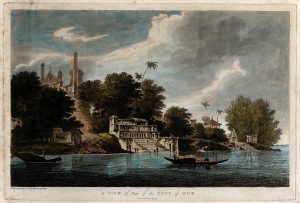
Ayodhya as seen from the river Ghaghara, Uttar Pradesh. Coloured etching by William Hodges.
Land was first allotted to one Abhayaram Das of Hanumangarhi in the time of Saadat Khan, who, as we have seen earlier, was the first governor of Awadh, between 1722–1739 CE. Subsequently, his successors, Safdarjung as well as Shuja-ud-daulah, supported the temple’s construction with more revenue land grants. Finally, in the time of Asaf-ud-daulah, the Hanumangarhi temple was completed… Asaf-ud-daulah, as we have seen, moved the capital even further away from Ayodhya—from Faizabad to Lucknow… Some writers find the shifting of the capital as evidence of the Muslim nawabs recognizing the Hindu pre-eminence of Ayodhya. There is no evidence to suggest that this was the reason, but from a strategic point of view, Faizabad would have made more sense…
1855 CONFLICT: THE WEAKENING POWER OF LUCKNOW AND INCREASING BRITISH INTERFERENCE
By 1855, the British had become the de facto rulers of Awadh. British troops were present in places like Faizabad, Lucknow and Gorakhpur to ensure the stability of areas under their direct control. With the help of a large spy network, the British officers ensured that they were in step with the developments in the province. In February 1855, the Resident of Lucknow, Major General G. B. Outram of the Awadh Frontier Police, had written to Wajid Ali Shah, warning him of a ‘dreadful breach of peace’ by Muslims led by one Shah Ghulam Hussein. Muslim fundamentalists in north India had gained much currency owing to the weakening of the absolute supremacy of rulers. In Awadh, the situation was a little more suitable for people like Hussein, given that the rulers of the province were Shia and a large number of the Muslim population were Sunni. In addition to this, there existed a historical rivalry between the mostly Sunni Afghan-origin Pathans and the more recent arrivals, non-Afghani Shias. But more than anything it was the defiance of rulers by religious leaders that incited the conflict. Muslim religious preachers had started to blame the godlessness of the rulers for the enslavement by the British, and openly preached jihad.
In Awadh, the situation was a little more suitable for people like Hussein, given that the rulers of the province were Shia and a large number of the Muslim population were Sunni. In addition to this, there existed a historical rivalry between the mostly Sunni Afghan-origin Pathans and the more recent arrivals, non-Afghani Shias. But more than anything it was the defiance of rulers by religious leaders that incited the conflict. Muslim religious preachers had started to blame the godlessness of the rulers for the enslavement by the British, and openly preached jihad.
The letter Major General Outram to the King of Awadh, Wajid Ali Shah, dated 8 February 1855, stated with the certitude of foreknowledge and forewarning:
‘ …it appears that Shah Ghulam Hussein has assembled a large force of Musulmans at Kotuaha in the neighbourhood of Fyzabad and is intent upon committing some dreadful breach of the peace and is determined to destroy and ruin the Hunnooman Ghurrie which is inhabited by Hindoos… His Lieutt. [astt.] called the Maulvee Sahib (Three maulvis or Muslim priests feature in reference to Faizabad and the 1857 mutiny. Ghulam Hussein; Ameer Ali of Amethi who was killed by the Awadh forces while on a march to attack Hanumangarhi; Maulvi Ahmadulah Shah who appeared in Faizabad in 1856 and was imprisoned by the British for his anti-British speeches.) is even more diabolically inclined and ready for strife—hence the mendicants and devotees, who are there at Hunnooman Ghuree in defence of their lives have been obliged to arm themselves… therefore the Resident feeling exceedingly anxious on this subject entreats His Majesty to despatch a very swift camel messenger with all possible speed, to convey to the King’s servants, most peremptory orders to cause the immediate apprehension of Ghulam Hussein and his coadjutors.’
Maulvi Ghulam Hussein claimed to his followers that the Bairagis of Hanumangarhi had destroyed a mosque atop that hillock which needed to be redressed by rebuilding it. A large number of Muslims gathered on his side in support of this cause, and having the confidence of belonging to the religion of the ruler, charged at the 70-feet-high Hanumangarhi on 28 July 1855. With help from Hindus from surrounding areas, the Bairagis and the more militant Naga sadhus (Vaishnavas), repulsed this attack and routed the maulvi and his followers. The Muslims retreated to the Babri Masjid, which was then attacked by the Bairagis. More than sixty-five Muslims were killed and the Bairagis allegedly held possession of the mosque for three days. The bodies of Ghulam Hussein’s men (he managed to escape) were buried around the mosque and the area later came to be known as Ganj Shaheeda, or Martyr’s Place or Quarters.
Captain A. P. Orr, as the British officer in charge of the troops stationed in Faizabad, acting on intelligence about the impending attack, had secured a temporary peace between the Bairagis and Shah’s followers a day earlier. The peace he had secured was by dint of placing his troops between the Hanumangarhi and the Babri Masjid. Orr expected reinforcements the following day; however, as he realized later, the few buildings that existed then were all filled with the supporters of the Bairagis. Having prevented violence for a day by invoking the power of the king and the British Resident, Orr returned to his house at night.
Maulvi Ghulam Hussein claimed to his followers that the Bairagis of Hanumangarhi had destroyed a mosque atop that hillock which needed to be redressed by rebuilding it. A large number of Muslims gathered on his side in support of this cause, and having the confidence of belonging to the religion of the ruler, charged at the 70-feet-high Hanumangarhi on 28 July 1855.
Ghulam Hussein and his band of ‘fanatic’ followers used the Babri Masjid as the launching place for the attack that finally took place on 28 July 1855 at around 1 p.m. A. P. Orr’s first-person account gives us an insight into how the British viewed the entire episode. After the battle, Orr in a letter to his superior, G. K. Weston, superintendent of the Awadh Frontier Police, wrote:
‘ …with regard to Shah’s people all our remonstrances were of no avail; persuasion, entreaty, threats, all were lost on these fanatics. On the other hand the Byragees were perfectly willing to listen to us and to obey the government orders… the answer that we last obtained from the Shah’s people was that at the time of Johur Nemaz [Muslim prayer after mid-day] they would attack the Byragees and not listen to further proposals as they could no longer restrain the Ghazees [volunteers ready to die in a religious cause].’
By the morning of 28 July 1855, Orr’s small force had been augmented by more troops led by Captain Hearsey, another officer, and in all they had 150 men and a few guns. Deciding not to intervene, they moved to a better vantage point from where the imminent battle between the two parties could be observed. Orr continues:
‘ …the Mahomedans may at the outset have numbered 4 or 500 men, the Byragees with their allies more than 8000. The leaders of the Shah’s party were soon laid prostrate while endeavouring to cheer on their men towards the Hunooman Gurrie, the greater portion of the Shah’s allies i.e Mahomedan inhabitants of Oude and of Fyzabad fled on every side and his own immediate followers together with few friends who still remained staunch to him, retreated.’
The maulvi and his Ghazees were badly routed and they ran back to the masjid ‘pursued by the Hindoos’.
In the letter, Orr records for the first time the use of the Babri Masjid as a hiding place by the retreating followers of Ghulam Hussein.
That day a general massacre of those hiding in the masjid took place. Orr described it as a ‘deadly contest’, in which ‘the Byragees yelling and furious though obstinately resisted closing on the Musjid hemmed it in on every side and after a few desperate efforts stormed it and gave no quarter’. Orr records that seventy of the Shah’s people were killed, ‘and as many perhaps or more of the Byragees and their allies’.
In the letter, Orr records for the first time the use of the Babri Masjid as a hiding place by the retreating followers of Ghulam Hussein.
That day a general massacre of those hiding in the masjid took place. Orr described it as a ‘deadly contest’, in which ‘the Byragees yelling and furious though obstinately resisted closing on the Musjid hemmed it in on every side and after a few desperate efforts stormed it and gave no quarter’.
Watching the massacre from a distance as a passive observer needed to be explained to his superiors, and Orr did so by suggesting that their numbers were too few and thus if they had intervened, and failed, a general insurrection would have been likely. ‘Thus we remained passive though during the whole of this fray we endeavoured by every means in our power to restore peace,’ Orr wrote. Hostilities were briefly interrupted because of a monsoon storm and during this short break, Orr tried to get the Muslims in the masjid to take shelter in his position which was defended by small cannons and guns, but they refused to do so. Soon enough the rain stopped and fighting resumed, which ended only when all the Muslims were either dead or had escaped.
The concluding part of Orr’s letter—in which he demarcates the different equations at play in this affair—is more important. He writes that the nawab’s local nazim or agent of the district, Aghai Ally Khan, was a Shia and Ghulam Hussein and his followers Sunni; therefore a compromise would not have been reached. About the Hindu leadership, Orr wrote, ‘as to Raja Maun Singh, his followers openly espoused the cause of the Byragees, his claims to impartiality must therefore be much questioned’. Raja Man Singh was in charge of Sultanpore under which Oude (or Ayodhya) also fell.
He (Orr) writes that the nawab’s local nazim or agent of the district, Aghai Ally Khan, was a Shia and Ghulam Hussein and his followers Sunni; therefore a compromise would not have been reached. About the Hindu leadership, Orr wrote, ‘as to Raja Maun Singh, his followers openly espoused the cause of the Byragees, his claims to impartiality must therefore be much questioned’. Raja Man Singh was in charge of Sultanpore under which Oude (or Ayodhya) also fell.
Another reason for Orr to not intervene in the battle was that he doubted the loyalties of his Hindu and Muslim soldiers if he ordered them into a three-way fight. Thus, the first bloody battle in Ayodhya came to an end, with a cynical British force overseeing it from a vantage point. And once all seventy odd Muslims and many more Hindus were killed, Orr seemed to justify his inaction; in characteristically colonial style, he blamed the Hindus and Muslims for their own deaths. Orr reasoned, ‘in conclusion though none can more than ourselves regret that so many blind misguided creatures have been so summarily disposed of, yet, it may truly be said that their blood is on their own head’. This—as British history in India vindicates—was a pattern: the British were somehow always ‘too few in number’ to prevent a massacre of Indians by Indians.
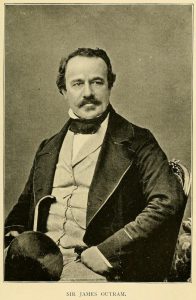
Outram, Resident at Lucknow.
TRIPARTITE COMMISSION OF ENQUIRY
A series of letters, secret communiqués and meetings followed the massacre at Faizabad. In August 1855, the British and the nawab were so completely occupied with this matter that not a day passed without the Resident, G. B. Outram, weighing in on this issue, either in letters to Governor General Lord Dalhousie in Calcutta, or in meetings with Wajid Ali Shah, even as he continued to exchange reports and instructions with his subordinates like Orr.
It seems the nawab had been warned about the possibility of such violence before it occurred and it was brought up by Resident Outram when he met Wajid Ali Shah on 1 August 1855 at a conference held at a palace called Zard Kothi. The nawab was surprised to learn this and denied any prior knowledge at which point Outram produced a copy of an earlier letter of warning.
The nawab, cautious not to appear to be siding with the Hindus, did not, at first, agree with the Resident’s suggestion of setting up a tripartite commission of enquiry made up of ‘Hindus, Muslims and a Christian judge’. The nawab’s own view was to first allow for a cooling of tempers on both sides before such a step was taken. Given the rising anger in his Muslim subjects against the massacre of Muslims in Ayodhya, the nawab was worried about a backlash.
Outram, taking up the cudgels on behalf of Hindus, reminded the nawab that over two-thirds of Awadh’s population was Hindu and that it wouldn’t be wise to give them any cause for enmity. The Hindu chiefs were powerful and would not remain quiet and unmoved if ‘the contest were renewed and any further outrages were committed on shrines which from time immemorial had been held by them as peculiarly sacred’.
The nawab having been persuaded by Outram, issued instructions for the constitution of a commission comprising Captain Alexander Orr (who had watched the bloody battle), Raja Man Singh and Chukledar Aghai Ally Khan to ‘commence an immediate investigation into all the particulars connected with the melancholy loss of life—assuring all parties that they should have a patient hearing and most complete redress’. This tripartite commission of enquiry became the first such body to be appointed in the case of Ayodhya.
Almost 150 years later, another commission of enquiry would be set up by the Government of India, under its archaeology wing, but as we shall see, it would have nothing to do with Hanumangarhi or the alleged destruction of a mosque on it. In a remarkable diversion from the original, primeval source of dispute the masjid from which Captain Orr said the Muslims launched their attack on Hanumangarhi would become the site of the same claims and counterclaims. After the 1857 rebellion and the victory of the British to 1980s–1990s India, Hindus would go on to expand their claims to argue that the mosque referred to by Orr was built exactly atop Ram’s birthplace, while Muslims would deny this by saying it was a concocted story.
The nawab having been persuaded by Outram, issued instructions for the constitution of a commission comprising Captain Alexander Orr (who had watched the bloody battle), Raja Man Singh and Chukledar Aghai Ally Khan to ‘commence an immediate investigation… ’… Almost 150 years later, another commission of enquiry would be set up by the Government of India, under its archaeology wing, but as we shall see, it would have nothing to do with Hanumangarhi or the alleged destruction of a mosque on it. In a remarkable diversion from the original, primeval source of dispute the masjid from which Captain Orr said the Muslims launched their attack on Hanumangarhi would become the site of the same claims and counterclaims.
Back in 1855, Outram, the cautious Resident, after getting the commission of enquiry constituted, set about ensuring that the military presence of the British remained strong in Lucknow. He also detailed the entire sequence of events in a letter to Governor General Dalhousie and brought him abreast of the happenings. On 4 August, three days after his meeting with Wajid Ali Shah, Outram stated that the removal of any troops from Lucknow would be hazardous to peace and stability given the high state of vengeful excitement that he claimed the Muslims were in. He also seems to have acted against the advice of his officer, Captain A. P. Orr, by getting the king to set up the commission under Man Singh and Aghai Ally Khan. Orr believed that the two neither got along nor could they be trusted to act above their religious affiliations. Patting both himself and the Hindus on the back, Outram omitted this fact from his letter to Dalhousie. He wrote:
‘I hope the mixed commission consisting of Captain Orr, Aghai Ally Khan and Rajah Maun Singh possessing as it does an equal Mahomeddan and Hindoo element with a Christian Umpire may inspire confidence so as to induce the belligerents to submit to their mediation; for the victorious Hindoos have heretofore displayed the most praiseworthy forbearance and the humbled Mahomedan factions are more likely now to listen to reason.’
Reverting to his fears about the possible fallout of the withdrawal of troops, he concluded his letter by saying:
‘ …but certainly any weakening of the British troops at Lucknow at this juncture when such exaggerated reports of the success of the Sunthal rebels prevail and the already reduced strength of the Cawnporre Brigade is known would be highly dangerous as calculated to encourage the excited Hindoos who form 4/5th of the Oude population to aim at higher objects.’
It appears that Outram knew quite well that he was playing with fire. While he was endeavouring to implement a British plan to annex Awadh, he wanted to be careful not to allow the situation to go out of control. The violence over Hanumangarhi had given the British another pretext to decry the Awadh king, but if not handled with care, Hindu fury and Muslim anger could turn into a general insurrection against the British as well.
It appears that Outram knew quite well that he was playing with fire. While he was endeavouring to implement a British plan to annex Awadh, he wanted to be careful not to allow the situation to go out of control.
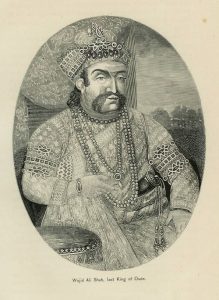
Wajid Ali Shah
In Ayodhya, things were moving at a fast pace in the usually quiet temple town. Since the massacre by the Bairagis and their supporters—mostly men from neighbouring villages, the Muslims of Ayodhya had moved out to other safer places. At the same time, the news of this defeat was bringing in Muslims from neighbouring districts to Faizabad every day. The usually more hardline Pathans among them had united under the banner of two maulvis, Ameer Ali and Ramzan Ali of Amethi, who were now said to be marching towards Ayodhya. Through hurriedly written letters, Outram and Wajid Ali Shah had informed each other of the developments at almost the same time. Outram pleaded with the king to direct his servants to ensure that the events of July were not repeated, he implored the king to order the stopping of ‘Pathans and others who are bent in proceeding to Fyzabad and especially to cause the arrest of the two Maulavees’. Wajid Ali Shah, the nawab-king of Awadh, equally concerned by the threat of more violence along religious lines, wrote to Resident Outram:
‘ …it appears from newswriters’ reports that numerous Hindoos and Musulmans are flocking into that place from all sides and that many more are determined to join them. The King is most anxious to put an end to this rupture and therefore entreats the Resident to be good enough to address the various Magistrates of adjacent districts to prevent bodies of armed devotees whether Hindoo or Mahomedan from entering Oude and to take steps to forbid their coming.’
Wajid Ali Shah’s tone makes it clear who the real ruler of Awadh was. The districts from which the mobs were flocking were all in the traditional zone of Ayodhya’s religious influence. There were also Muslim strongholds in the list sent by Wajid Ali Shah. Gorakhpur, Jaunpur, Allahabad, Fatehpur, Kanpur, Farrukhabad, Shahjahanpur and Azamgarh were the chief regions of Sunni populations and these were governed by British magistrates; thus the nawab hoped that his request to Outram, if fulfilled, would deprive the maulvis of Amethi from gaining more followers.
‘The King is most anxious to put an end to this rupture and therefore entreats the Resident to be good enough to address the various Magistrates of adjacent districts to prevent bodies of armed devotees whether Hindoo or Mahomedan from entering Oude and to take steps to forbid their coming.’ … Wajid Ali Shah’s tone makes it clear who the real ruler of Awadh was.
Meanwhile, the Bairagis of Hanumangarhi had signed a bond alluding to their complete willingness to abide by the findings of the tripartite commission of enquiry, whatever they may be. Under Mahant Bilramdass, three other priests put their signature to this bond in which they also spoke of past friendships and a willingness to compromise. Interestingly, the Hanumangarhi priests who were Ramanandis belonging to the Nirvani Akhada did not object to the presence of Aghai Ally Khan. They perhaps knew that as a Shia Muslim, he was not going to be overtly excited by the prospect of Sunni claims. Hindus favoured a Shia over a Sunni member in the enquiry commission and, as Captain Orr had believed, Muslims themselves being largely Sunni, did not trust Aghai Ally Khan because of his Shia persuasion.
Irrespective of all this, the bond signed by Hanumangarhi priests on 10 August 1855 must have brought peace to the mind of the avowedly irreligious and secular Wajid Ali Shah.
The bond promised that:
‘ …having in view our former friendship and acquaintance we declare we have no enmity towards them [Gholam Hussein and others], and agreeing to Aghai Alee Khan, Rajah Maun Singh, Captain Orr as our arbitrators we solemnly swear by Mahabir [another name for Hanuman] and hereby write that we will not on any account create any disturbance or tumult on condition that no one molests us or abuses us. All the Byragees who are of our tribe will not do anything contrary to what we have written… if we act contrary to what we have written we confess that we are deserving of whatever punishment may decree.’
…the bond signed by Hanumangarhi priests on 10 August 1855 must have brought peace to the mind of the avowedly irreligious and secular Wajid Ali Shah. ‘ …having in view our former friendship and acquaintance we declare we have no enmity towards them [Gholam Hussein and others], and agreeing to Aghai Alee Khan, Rajah Maun Singh, Captain Orr as our arbitrators we solemnly swear by Mahabir [another name for Hanuman] and hereby write that we will not on any account create any disturbance or tumult on condition that no one molests us or abuses us.’
In Lucknow, the nawab, anxious to avoid a confrontation with the maulvis, sought the help of the influential chiefs of neighbouring Hadergarh and Gosainganj. The nawab wanted them to persuade the Muslims at Amethi to desist from marching to Ayodhya. In his communiqué to Outram on 11 August 1855, Wajid Ali Shah also apprised him of his plan of seeking religious opinion on how to tackle the belligerent maulvis. On the whole, the nawab appeared to be confident that his plan of peaceful resolution would work, obviating the need for arrests and violence. The king’s seeking of religious sanction was made necessary because of the nature of the maulvis’ campaign. In order to enlist more followers they had declared a planned revenge-attack on Hanumangarhi, a jihad, or religious crusade, against infidels. The king was aware that a jihad could be declared only by the king in a Muslim-ruled country; his plan was to counter the maulvis theologically and take the wind out of their proposed jihad. Ever careful, Wajid Ali Shah concluded his note to Outram with the words ‘but the future is in the disposal of God’.
This, however, was not enough for Outram to repose faith in Wajid Ali Shah’s abilities. Outram was also acting on his own secret intelligence which said that the nawab was only buying time and that once the Sawan mela (the sawan mela is one of the three melas held in Ayodhya every year, it is held in the month of July and marks the start of the rains) in Ayodhya was over, he had promised the maulvis that the mosque would be rebuilt in Hanumangarhi.
In Lucknow, the nawab, anxious to avoid a confrontation with the maulvis, sought the help of the influential chiefs of neighbouring Hadergarh and Gosainganj. The nawab wanted them to persuade the Muslims at Amethi to desist from marching to Ayodhya.
In Faizabad, Captain Orr had his ear to the ground. Consistent with the first report he sent to his superior police officer, G. K. Weston, the superintendent of the Awadh Frontier Force, Orr again advised against any immediate enquiries by the tripartite commission. In this he was echoing Nawab Wajid Ali Shah’s own instinct. However, Orr also warned about the effect of the presence of certain Muslims in Faizabad.
On 11 August 1855, the same day that the king informed the Resident of his aversion to arresting the maulvis, Orr wrote to G. K. Weston again regarding certain decisions taken by the committee comprising Aghai Ally Khan, Raja Maun Singh, Captain A. P. Orr and Captain J. Hearsey. He opened his letter by stating forthrightly that ‘it would not be safe in the present state of affairs to institute enquiries regarding the existence in the midst of Hanooman Gurrie of a Musjid’.
Ameer Ali, the radical preacher who had vowed to avenge the deaths of Muslims in Ayodhya, was gathering numbers for his jihad near Amethi. Meanwhile, certain Muslim notables said to be deputed by the court in Lucknow, were in Faizabad and Ayodhya. They were conducting their own enquiry and were collecting signatures and testimonies vouching for the existence of the mosque in Hanumangarhi. As we will see later in the book, such campaigns continue to take place in contemporary Ayodhya.
Captain Orr also worried about the adverse effect these persons were having in an already tense atmosphere. In the same letter Orr categorically mentions the danger posed by the presence of these ‘notables’ and requests his superior to ensure that they are removed from there.
‘INDEPENDENT’ ENQUIRY FINDS MOSQUE AT HANUMANGARHI
Captain Orr’s fears about the independent enquiries by the notables from the Lucknow court proved to be justified as the next day, on 12 August 1855, Outram, the Resident, received another communiqué from the king of Oude. Along with the dispatch, the king had also sent for his perusal the documents collected through the above-mentioned notables’ efforts.
The king’s letter summed up the findings thus:
‘The purports of these papers is that A MOSQUE WAS BUILT BY ONE OF THE FORMER SOVEREIGNS OF DELHIE, that this fact is notorious, that in the days of Borhanool Muk [Saadat Ali Khan I] Sobahdar of Oude, there was a quarrel of the same kind but the Hindoos subsequently declared that they had no intention of meddling with the mosque. One witness who declares he is 104 years old asserts that he has repeatedly seen the mosque. One Chuprasee Dhunnee Singh, a Hindoo, declares that he saw the mosque in the time of Hakeem Mehudee who was a minister in the days of Nusseeruddeen Hyder (1827–1837), one Chedee, a Hindoo, declares he has often seen the Musjid. The tenor of all these papers casts all the blame on the Hindoos and details their atrocities—two leaves of the Koran which were found on one of the slain is sent for His Majesty’s inspection; they have been trampled upon, burnt and torn.’
The note then proceeds to record the various crimes committed by Hindus, including destroying the tomb of Khwaja Huttee Shah and slaying a pig in the mosque while it was in their possession. It ends by describing the genesis of the Hindus’ aggression and says that, ‘the Hindoos first began to interfere and became powerful when the district of Sultanpore fell into the hands of Durshan Singh Chukledar and their encroachments commenced and have progressed’.
The next day, Resident Outram responded with disdain to these documents and summarily declared them to be ‘untrue’ in a letter to the king. While doing so he employed the age-old argument of ‘obtained under duress and coercion’ that is used against suspicious affidavits and testimonies.
The Resident wrote, ‘His Majesty must be well aware that it is very easy for interested parties to obtain seals and signatures to any representations they may choose to make in the heat of religious excitement and doubtless the opposite party would easily obtain similar testimony in support of their assertions.’ The Resident then declared the documents and the claims made by the nawab-king to be baseless. He also goes on to dismiss the claims about the slaying of a pig, desecration of the Quran, and destruction of Khwaja Huttee’s tomb in Hanumangarhi. He explained his dismissal saying:
‘The enclosed representations are obviously untrue in one particular in as much as they attribute the whole of the blame to Hindoos, whereas it is notorious and moreover officially reported by Capt Orr that they were ready to submit their grievances to the King’s decision, even when victorious they abstained from all violence and from the commission of any excesses and enormities. His Majesty can not fail to be convinced of the truth of this when His Majesty peruses the bond signed by the leaders of the Byragees in which they profess their readiness to submit to terms and which reached the King yesterday. It is well known that the Mahomedans would not listen to reason and that they began the conflict.’
The Resident then concludes that ‘the alleged atrocities of the Byragees such as trampling on the Kuran and the sacrifice of swine (in the musjid) may prove equally unfounded and baseless’.
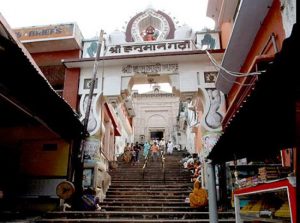
The Hanumangarhi temple
Though Outram doesn’t specify the mosque he is referring to, it could only either be the one atop Hanumangarhi, which was destroyed by the Bairagis, or the Babri Masjid from where the Muslims had launched the attack. In 1855, curiously enough, no extant British record of the Hanumangarhi conflict identifies the said mosque as Ram Janmabhoomi. The next day, on 15 August 1855, Captain Orr reported to Superintendent Weston a series of steps he had taken for the officially appointed tripartite commission to carry on its work. Owing to the sawan mela a large number of Hindus had gathered in Ayodhya. As the presence of thousands of Hindus had increased the risk of violence erupting again, the commission had been unable to make probes regarding the existence of a masjid on Hanumangarhi. Therefore, Orr finally decided that Raja Man Singh should conduct ‘private and strict enquiries as to the existence of the supposed Musjid and to report the result of his personal researches, which would eventually be verified’ by other members of the committee. The reason Orr gave for reposing such faith in Man Singh was curious and contradictory to his own earlier view regarding Man Singh’s impartiality. Orr said, ‘the Rajah being of the Hindoo persuasion could more easily effect the object the Committee had in view than any other of its members’. In July, Orr had cited the same ‘Hindu persuasion’ to report to Weston the untrustworthiness of Man Singh. But now, Man Singh had become fit to be trusted again and he lived up to the expectations of the British by quickly completing his ‘private and strict’ probe. As Orr put it in his letter:
‘Raja Maun Singh had succeeded, not only in obtaining the desired information stating that to the best of his belief no Musjid existed in the Gurrie, but also obtained from the Mahunt Byragees of Hannooman Gurrie two papers signed and sealed by them, by which they bind themselves to allow the Committee to make any investigations necessary to satisfy the demands of the government.’
Though Outram doesn’t specify the mosque he is referring to, it could only either be the one atop Hanumangarhi, which was destroyed by the Bairagis, or the Babri Masjid from where the Muslims had launched the attack. In 1855, curiously enough, no extant British record of the Hanumangarhi conflict identifies the said mosque as Ram Janmabhoomi.
Having obtained this bond, and armed with Man Singh’s findings, the committee called a public meeting of prominent Muslims of Faizabad–Ayodhya and surrounding areas in Gulab Bari, the magnificently built tomb of Shuja-ud-daulah. The purpose of this meeting was to give Muslims an opportunity to put forward their claims, grievances and evidence regarding the mosque in contention. A large number of Muslims had fled Ayodhya after the massacre in July, and now a number of them spoke up to say that even if such a masjid existed, it was in the domain of the king of Oude to recover it. All that these Muslims ‘now wished was to obtain some security of life and property in order to return to their homes at Awudh, which they have abandoned since the late disturbance’, wrote Orr.
Interestingly, it was also decided that the individuals who had claimed to have seen the masjid, including the Hindus Chedee Singh and Dhunee Singh, should be taken to Hanumangarhi, asked to show the spot where the masjid stood, and prove the veracity of their assertions. Orr reported to his superior Weston that this was now possible as the Hanumangarhi priests had agreed to ‘allow us to dig open any one spot pointed out by the Mahomedans as containing their Musjid’. If there was a quid pro quo deal affected by Raja Man Singh with the priests, Orr’s letter doesn’t reveal it. Seemingly satisfied with the committee’s work so far, Orr concluded that ‘surely such an investigation will satisfy the most bigoted’.
Outram was pleased to hear that Orr had been successful in defusing the situation with the help of Man Singh and Aghai Ally Khan. Outram transmitted the contents of Orr’s letter to Governor General Dalhousie in Calcutta. As Lucknow was under his direct supervision, he also added the latest update on the situation there:
‘In this city especially the excitement was very great. War with the Hindoos was openly preached in the mosques in spite of the exertions of the authority to prevent it and fanatic moolahs erected the standard of Islam at Qurcita 7 miles distant where all true Moslams were urged to assemble. Some hundreds did so and thousands in this city who were prepared to join, were with difficulty deterred by the most stringent measures of the Government.’
Outram’s self-serving portrayal of the situation at Lucknow and Ayodhya was only partially true. Indeed, the Muslim clergy, including some Shia priests, were by now roused by the British-backed handling of the Hanumangarhi situation. Just a week after Outram had shared his satisfaction at the abatement of the conflict, a mujtahid, a high priest or Shia imam, raised the hackles of the British once again.
Spies brought news that after the Eid celebrations at Asaf-ud-daulah’s Imambara, the high priest had openly showered curses on Aghai Ally Khan, a member of the Hanumangarhi committee, and alleged that he, a Shia, had accepted bribes to favour the Hindus. Many notables from Wajid Ali Shah’s court were present on this occasion but remained silent.
Four days later, on 28 August, the Hanooman Ghuree Commission’s petition was received by Wajid Ali Shah. The commission had concluded its work and was ready to present itself and the various witnesses and deponents it had examined to the king in Lucknow. Orr, the unofficial head of the commission, also wrote to Weston, forwarding with the letter the various depositions collected by the king’s committee under Maulvi Hafizullah, the eleven depositions given to the tripartite committee (including Orr, Man Singh and others), the statement of a Muslim bricklayer, Joomun Khan, bonds furnished by the priests of Hanumangarhi, sunuds (royal grants) furnished by the priests of Hanumangarhi, and the committee’s urz-dasht (written petition).
Spies brought news that after the Eid celebrations at Asaf-ud-daulah’s Imambara, the high priest had openly showered curses on Aghai Ally Khan, a member of the Hanumangarhi committee, and alleged that he, a Shia, had accepted bribes to favour the Hindus.
The findings of the other so-called independent committee led by maulvis Hafizullah and Nihaluddeen were rejected as false and fake by Orr. He considered them as having been ‘preconsented’ and full of discrepancies.The sunuds shown by the Hanumangarhi priests on the other hand were taken to be legitimate and because ‘no reference whatsoever is made to the existence of a Musjid, neither within nor near the precincts of the Gurhee’. Orr thought it was proof that no masjid could have existed there. Orr further stated that the deposition of Joomun Khan corroborated his conclusions. Moreover, according to Orr, more proof lay in the
‘ …depositions furnished by two of the Mahunts of the Guree, they contain total denial of the Musjid having ever existed, with a shrewd and in my opinion just remark, that had a Musjid stood in their Gurree at all events within the last 25 or 30 years would it not have been remarked by the Kotwal of the City Mirza Mooneem Beg, whom they cite, as having on more than one occasion visited their building.’
Finally, Orr clinches the anti-mosque argument by stating that even those Muslims who had claimed to have seen and even prayed in the mosque at Hanumangarhi were unable to point to the spot where it could have existed. Some even blundered by pointing out a directionally implausible spot as Muslims offer prayer while facing the west. Thus Orr concluded with certitude:
‘no traces however slight of such a building now exist… In fact it seems of itself improbable that two buildings consecrated to such opposite creeds, could ever have stood in so close proximity—and is it not moreover extraordinary that during so many years, that is at the very lowest calculation from the time of Munsoor Ali Khan Soobadar of Oudh, to the present period, no one, either ruler or subject should with the exception of Shah Ghulam Hussein and his followers, have taken cognizance of such matter had they been worthy of consideration.’
Thus, the claims of Muslims being deemed bogus, fake and time-barred, were rejected and the commission sought to close the matter.
Upon learning the outcome of the commission’s enquiry, Maulvi Ameer Ali, who had reached Lucknow and was under house arrest, set out on his jihad once again. With more than 200 devoted followers the maulvi seemed to have been discreetly supported by the Shia clergy in addition to the Sunni clergy. In order to halt his march, Wajid Ali Shah dispatched some envoys who were able to convince the maulvi to postpone it for the time being and allow the peaceful resolution of the dispute. Ameer Ali was also warned that if he disobeyed the nawab’s order, he would be forcibly restrained. What Wajid Ali Shah had in mind was a plan that would ‘satisfy all parties’. The proposal was radical; it suggested ‘that the King should build a mosque resting on one wall, but outside of the ghuree… and the dividing wall be so raised as to prevent either Moslem or Hindoos interfering with each other, or either party even seeing into the others’ place of worship’. Wajid Ali Shah also stated that Hanumangarhi priests would be suitably awarded any reasonable demands of land if they agreed to this proposal. Resident Outram reported these details to Dalhousie with scepticism about the success of the proposal.
What Wajid Ali Shah had in mind was a plan that would ‘satisfy all parties’. The proposal was radical; it suggested ‘that the King should build a mosque resting on one wall, but outside of the ghuree… and the dividing wall be so raised as to prevent either Moslem or Hindoos interfering with each other, or either party even seeing into the others’ place of worship’.
In Calcutta, upon learning of the developments in Awadh, Governor General Dalhousie stressed that this was ‘further proof, if further proof were necessary, of the unfitness of the King of Oude and of his Durbar to hold the powers of Government in that country and fortify the opinion which I lately submitted to the Hon’ble Court that the administration should be entirely taken out of their hands’. The British were preparing the ground to annex Awadh and the Hanumangarhi incident was being woven into that plan.
Back in Ayodhya, Orr, who was tasked with getting the Hanumangarhi priests to agree to the king’s compromise formula, failed to convince them. Orr conveyed his failure to Outram, who transmitted it to Dalhousie on 16 September. The Bairagis, reported Outram, declared ‘that if it is attempted to build a Mosque adjoining the Hunooman Ghuree, they will vacate the place and at the same time desert every one of the temples of Awudh, which in other words really means that they are prepared to resist any such attempt to the death, for never in life would they abandon these holy shrines’. Rhetoric was building up again on both sides—on three sides if one includes the British, who were desperately hoping to convert this conflict into a dramatic cause so that they could annex Awadh.
When Outram met with Wajid Ali Shah a few days later on 29 September, he tried his utmost to impress upon him the need to take immediate action to restrain Maulvi Ameer Ali. No doubt this would have made Wajid Ali Shah extremely unpopular among his co-religionists in the court and outside. He was aware that any action by him that was perceived to be anti-Islam would make his position even more untenable. Unsympathetic to Wajid Ali Shah’s predicament, Outram also alleged that the nawab-king had made a secret pledge to Ameer Ali about the construction of the mosque at an appropriate time even though Wajid Ali Shah had dismissed such allegations as ‘preposterous’. The nawab-king was convinced that the matter could be resolved to the satisfaction of all. In order to buy more time, he now proposed the formation of a second commission comprising an equal number of Hindus and Muslims. It seems from Outram’s account that Wajid Ali Shah was not convinced of the Bairagis’ version of the dispute. According to the minutes of a meeting between Outram and him, the king believed, ‘much misconception prevailed… as to the sanctity of the ground generally known as Hanooman Guree—in fact—but a very small portion of it was sacred, the rest having been quietly added by the Hindoos to the ground granted by His Majesty’s ancestors more than a century ago’.
And therefore, Wajid Ali Shah expected the Hindus to agree to the proposal of sharing the space atop Hanumangarhi with a mosque. Outram agreed but added a caveat. The minutes of that meeting record him issuing a warning to the king of Oude.
‘The Resident declared that he would be delighted to learn that the Hindoos could be persuaded to yield compliance but he did not hesitate to warn His Majesty against any such attempt to take even one yard of ground without the fullest and most unqualified consent of the Hindoos—on no other ground could His Majesty attempt to build the Musjid without lighting up the flames of civil discord in his territories.’
What Wajid Ali Shah really thought of the British Resident’s very sensible but obvious word of caution is not known but he assured him that nothing would be done by force.
Meanwhile, Ameer Ali who was still camped on the road to Ayodhya, thought of keeping his ghazis (crusaders) motivated by letting them loose on Hindus and Shias. While stationed near Saheliya, a village that now falls in Barabanki district, his followers, ‘annoyed at the blowing of Sunks [conch shells] in the temples belonging to Roopnarain and Salikram Brahmins of Saheli’, attacked the place and destroyed all the idols and threw them into the adjacent pond. The Brahmins, together with their families, fled to Calcutta, according to a dispatch dated 4 October from the Resident’s office. Besides mentioning the attack on Hindus the same set of dispatches also informed the Governor General in Calcutta that ‘the report is confirmed that a fight had taken place between the Syeeds of Zaidpore (20 kilometres from Saheli) and Ameer Ali’s followers, in consequence of the Maulavi having endeavoured to prevent the Syeeds carrying their Tazeahs in procession until the Musjid should be built in the Hanooman Ghuree, 8 men were killed and 6 wounded on both sides’.
The dispatch by Outram on 4 October was significant as it not only reported the maulvi’s communal excesses but also because it reported that Wajid Ali Shah, responding to the spate of conflicts involving the maulvi’s militia and Hindus—and in one case Shias—had deputed mainly Hindu troops to march to Hanumangarhi and protect it. It also conveyed a rising degree of alarm among the general population which was evidenced by the fact that the richer families of Faizabad and Ayodhya were relocating their women and children in anticipation of violence.
MAULVI AMEER ALI’S END DRAWS NEAR
Between 5 October and 8 November a number of events took place that brought an end to Maulvi Ameer Ali’s campaign. His patience exhausted, Ameer Ali gave up on Wajid Ali Shah keeping his reported promise to build the mosque atop Hanumangarhi. The king too had all but abandoned hopes of a peaceful resolution, and now he gave clear orders to intercept the maulvi en route to Ayodhya. On 5 October, Outram reported to Lucknow that it was generally believed ‘that the assault on the Hanooman Ghuree will take place on the 40th day of Mohurram (23 October)’.
In Hanumangarhi, the Bairagis were fortifying their defences and making small holes in the walls of the temple-fortress through which arms could be fired. The word on the street in Ayodhya, Faizabad and Lucknow was that Hanumagarhi was also receiving aid from the kingdoms of Gwalior, Jodhpur and the local talukdars or chiefs of Awadh. Amidst this buildup, Raja Man Singh brought a delegation of Hanumangarhi priests to Lucknow.
The maulvi, still camped on the road to Ayodhya, was also being joined by hordes of Muslim men. In a last-ditch effort to strike a compromise, the king’s deputies met him and once again beseeched him to defer his march. Writing disapprovingly about it, Outram informed Calcutta on 7 October that after much persuasion and ‘begging’, Ameer Ali was ‘induced to grant a further respite of 5 days—if, however, on the Friday next, some steps shall not have been taken by the Durbar, he intends then to proceed to Bansa… eastward of Saheli, and there raise the standard of Islam’.
The maulvi had relented, but only a little. Unbeknownst to him at the time, his predicament was to worsen soon. Outram was totally against the constitution of another commission of enquiry and had rejected the nawab’s request to join such a commission if it were formed. His reason being: ‘he [Wajid Ali Shah] supposed the British Government would be bound to support the subsequent measures of the Durbar for enforcing the decree of the Committee whatever that might be. As I had reason [not specified] to believe that bribery would be employed to induce the Hindoo members to betray their trust, it behoved me I conceived for that reason particularly but also under any circumstances, to reject the overture in explicit terms.’
The British had practically come to rule Awadh in the eighty years since the Battle of Buxar in 1775. Gradually, they had also come to acquire a network of spies that was spread deep and wide across the province as well as in other parts of India. A letter dated 15 October reflects the astuteness with which the East India Company ran its intelligence network. On the basis of information provided by a clerk in a government office in Faizabad, Outram listed the number of local Hindu chiefs who were ready to support the Bairagis of Hanumangarhi; some of them had also offered money. Outram wrote, ‘among others from whom letters and pecuniary contributions have been received, he [the clerk-spy] enumerates the Rajahs of Bansee, Pyrespore, Ramnuggur, Dumeree, Souhan—Ranee of Dairwa— and Maharajahs of Gwalior and Joudhpore’.
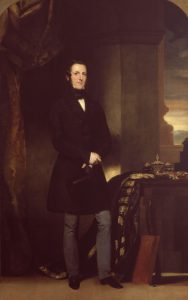
Governor General Lord Dalhousie
On the same day, Governor General Dalhousie in Fort William, Calcutta, drew up a note that both summarized the developments in Awadh and laid down British policy for future events. He authorized Outram to use ‘decided language’ to convey the displeasure of the British government should Wajid Ali Shah ‘either direct or not prevent an attack on the Hindoos’. He declared that such a neglect of duty would make the king regret his inaction. Dalhousie approved the actions of the Resident at Lucknow along with his own and patted himself on the back for his commitment to always acting in the interests of the British government. Wajid Ali Shah’s decision to dispatch Hindu troops for the protection of Hanumangarhi was lauded by Dalhousie. That rare praise was overshadowed by his severe criticism of the ‘feebleness and falseness’ of the king of Oude.
And with the characteristic duplicity that defined the era of the British East India Company, Dalhousie noted, ‘the King of Oude having permitted the rise of the present disorders at Awudh near to Fyzabad and having permitted flagrant wrong to be done to the Hindoos, not only contrary to the advice of the resident, but in defiance of his warnings and his resistance, the British troops ought upon no account to be moved to the assistance of the royal troops if hostilities should again break out at Awudh’. If Orr and Hearsey had refrained from interfering in the July clash because of being ‘few in number’, now they were explicitly ordered to stay out of it. Dalhousie seemed to have been hoping that Awadh would soon be engulfed in communal bloodshed, and to make sure it was not impeded by the interference of British troops, he directed his officers to stand by, just as they had done in July when Shah Ghulam Hussein had attacked Hanumangarhi. At that time, it was Muslims who had been massacred. But for Dalhousie, it was not Hindu versus Muslim or right versus wrong. The sole concern was how to justify the annexation of Awadh by the British government.
Wajid Ali Shah’s decision to dispatch Hindu troops for the protection of Hanumangarhi was lauded by Dalhousie. That rare praise was overshadowed by his severe criticism of the ‘feebleness and falseness’ of the king of Oude. And with the characteristic duplicity that defined the era of the British East India Company, Dalhousie noted, ‘ …the British troops ought upon no account to be moved to the assistance of the royal troops if hostilities should again break out at Awudh.’
Therefore, the main purport of his note was the Treaty of 1801, which gave control of more than half of Awadh’s richest cultivable lands in return for an annual stipend to the nawab of Awadh. It also bound the British to defend Awadh against external and internal aggressions. This, technically, stood in the way of the annexation of Awadh, even though many British acts of omission and commission had left the treaty all but abrogated. Now, in the event of the explosion of further violence between Hindus and Muslims, the British would have found a dramatic justification to annex the province. Towards that end, it was also imperative that communal anarchy defeat the writ of the king of Awadh as well as its largely harmonious social culture.
In the event of the explosion of further violence between Hindus and Muslims, the British would have found a dramatic justification to annex the province. Towards that end, it was also imperative that communal anarchy defeat the writ of the king of Awadh as well as its largely harmonious social culture.
AMEER ALI SUFFERS A SETBACK
Therefore, upon receiving Outram’s letter dated 17 October, Dalhousie must have felt a tinge of disappointment. Outram, who was cast in the same colonial die as his Governor General, reported two instances of Muslim landords refusing to join the maulvi’s crusade. One of them, Shujat Ali of Masauli in Barabanki district, was said to have declared to the maulvi that ‘he said his prayers five times a day, and kept all fasts like a true Moslem, but as to disobeying the order of the King who is a true believer like himself, or going to certain death at Ajoodhea, he chose to decline’. Razabaksh, another Muslim landholder in Barabanki, rejected the maulvi’s inducements on similar grounds. It was not just a sense of communal harmony that drove the general public and landlords to snub Ameer Ali. The king of Oude had issued a proclamation warning all who supported the fanatic crusade of dire consequences. The proclamation and its translation were made available to Outram who forwarded it to Calcutta on 18 October. The proclamation stated:
‘ …that whoever may have ventured to quit his Amaldaree, Talookdaree, or Zamindarees to join the rebels shall have his houses and property seized by our soldiers, and whoever may be on the point of going to the rebels is to be restrained, and wherever either of the above-mentioned parties presumes to refuse obedience to our orders or to abandon his vile intentions, shall be punished by the imprisonment of his family and relatives who are to be forwarded to the capital, and by the demolition of their houses and property; whoever chooses to return home in peace shall not be molested in any way… ’
The king of Oude had issued a proclamation warning all who supported the fanatic crusade of dire consequences.
On 19 October, Outram had reported to Calcutta that the maulvi had decided to proceed with his march towards Ayodhya and was ready to battle the king’s troops if they tried to stop him. Unaware of either the proclamation or the maulvi’s march, the secretary to the Government of India at Fort William in Calcutta had dispatched a set of instructions to Outram in Lucknow on 20 October. They wanted him to clearly state to the nawab of Awadh that the government would never agree to a second commission, and even if formed, ‘the Government will never approve of a mosque being built in the Hanooman Ghuree or near to it’.
The king’s proclamation was successful in restraining Muslims from joining Ameer Ali’s jihad. A letter from Outram, dated 6 November, notes ‘that the effect of the proclamation has been most satisfactory, scarcely an individual from the British districts [land ceded under the Treaty of 1801] having joined the large assemblages of Mahomedans or Hindoos which have been threatening the peace of Oude for some time past’. Outram was now ‘hopeful’ of a speedy and peaceful resolution of the dispute, and he was ‘happy’ to report it (like now, it wasn’t uncommon then for official communication to be ‘tracked’ or even leaked by couriers for a good reward. Therefore, non-secret official letters seldom contained anything that might indict the government in any way). But it would have been a cause of some alarm for the Governor General who was banking on an imminent breakdown of peace and order.
THE BATTLE OF DHAURAHRA
The next day (7 November) began unexpectedly for the British troops and officers who were tasked with monitoring Maulvi Ameer Ali and his zealous followers. For the maulvi it was the day of reckoning which began in a planned way. At Dariabad, he gave the slip to the British troops led by Colonel Barlow and got a lead of an hour before his absence was discovered. The maulvi’s plan seems to have been to attack Hanumangarhi on Diwali, which was going to fall on 9 November. The maulvi’s selection of the day could have not been loaded with more symbolism. Diwali marks the day Ram, the exiled prince of Ayodhya, returned home after defeating Ravan at the culmination of fourteen years of banishment, along with his wife Sita and brother Lakshman. In Ayodhya, the day before Diwali is celebrated as Hanuman Jayanti, or the birthday of Hanuman. Unlike in the rest of the country where Hanuman Jayanti falls in the summer, in Ayodhya it is pegged to Diwali which falls in the winter.
According to an account written by a junior officer named Lieutenant Catania, British troops caught up with the maulvi’s militia at Dhaurahra, a small village situated near Rudauli. Ameer Ali’s force of ghazis was resting under the shade of some trees when Colonel Barlow sent some Indian troopers to tell him to return to Dariabad, and ‘that if he persisted to advance’, they would fire on him. The maulvi defied the warning and resumed the march after midday prayers. Catania writes:
‘ …the 2-9 Pounders attached to our Corps were the only guns that had come up, the rest with the Najeebs and other Telangah Regiments not having arrived. They were immediately placed into position, and laid by Col. Barlow, the Infantry supporting them, the order to fire was given as soon as the enemy was within range, they as instantaneously returned the compliment, and thus the action became general.’
Maulvi Ameer Ali got his head cut off by an Indian sepoy, all other recruits of his cause fought to the death, asking for no quarter nor giving one. In this way Barlow, Catania and their force of 300 soldiers, Indian and British, had successfully eliminated the threat of the maulvi’s band of ‘fanatics’ in a bloody battle near Rudauli which lies nearly 40 kilometres from Faizabad. Lasting for two hours, it ended with the death of Ameer Ali and more than 400 of his followers. About eighty men belonging to the other side were also killed. Ameer Ali’s dead were buried in four large pits in nearby Rudauli. The British-led troops, too, were exhausted by the long and bloody day. Most had had nothing to eat. After the battle they marched on to camp at Mahmudpur where they took care of their dead and wounded. It is here that Catania recorded the details of the battle and its aftermath on 8 November, the eve of Diwali. In the letter detailing this narrow and lucky victory, he indicted the nawab’s troops for not showing up. This battle would be an enduring end of the conflict over Hanumangarhi but that night, on the eve of Diwali, Catania feared a reprisal and an unprecedented outbreak of communal violence. He wrote, ‘it is rumoured that affairs are not yet settled and the Mahomedans are again assembling, if this prove correct, I fancy we have yet a great deal to do’. Soon after receiving Catania’s letter, Lucknow Resident Outram travelled to the British headquarters at Fort William in Calcutta.
Barlow, Catania and their force of 300 soldiers, Indian and British, had successfully eliminated the threat of the maulvi’s band of ‘fanatics’ in a bloody battle near Rudauli which lies nearly 40 kilometres from Faizabad. Lasting for two hours, it ended with the death of Ameer Ali and more than 400 of his followers. About eighty men belonging to the other side were also killed.
Some citations have been removed from this excerpt to make for smoother reading. You will find all of them in the book.
This excerpt has been carried courtesy the permission of Valay Singh. You can buy Ayodhya: City of Faith, City of Discord here.
ARCHIVE
As part of a series of texts on what is called the ‘Hindu Nationalist Movement’, and in response to changes in school curriculum by the NCERT, here’s an extract on the Rashtriya Swayamsevak Sangh’s influence on school education, particularly the teaching of history, from a book by Aditya Mukherjee, Mridula Mukherjee and Sucheta Mahajan.
This is part of a series of texts connected with what is today referred to as the ‘Hindu Nationalist Movement’. We will be publishing credible texts documenting the history of this movement from various (often differing) perspectives.
The following text is the first chapter, titled ‘RSS and School Education’ from the book RSS, School Texts and the Murder of Mahatma Gandhi, written by Aditya Mukherjee, Mridula Mukherjee and Sucheta Mahajan (hereinafter referred to as “the authors”), and published in 2008.
If, over the past nine years, there have been innumerable news reports about school curriculum being changed in accordance with the ruling dispensation’s ideology, the recent ‘rationalisation’ of school syllabus by the NCERT, resulting in the removal of content pertaining to Mughal India, Mohandas Karamchand Gandhi’s assassination and the history of caste from history textbooks, represents a flashpoint of sorts to some. However, none of this, not even the omissions, is new. This text is an introduction to the history of such occurrences, and the process behind them, before 2014.
In a foreword of the book, also available here below, historian Bipan Chandra talks about “communal ideology” constituting the “core of the communal project” and goes on to state how this “communal ideology” is instilled in young minds via school history textbooks that present a “distorted, often totally false and imagined version of history which corroborates the negative and hostile image of other religious communities that the RSS wants to promote”. He also disagrees with the description of “Hindu nationalists” for those whom he (and Indian nationalists during the freedom movement) would simply call “communalists”.
The chapter here below begins with how the Rashtriya Swayamsevak Sangh (RSS) combine has been communicating its ideology to young minds through, “tens of thousands of its Saraswati Shishu Mandirs and Vidya Bharati primary and secondary schools, and through its Shakhas (morning neighbourhood assemblies). The essence of the narrative is that religious communities other than Hindus, particularly Muslims and Christians, are foreigners in India, who are disloyal and unworthy of trust. As evidence, the authors present the findings of the National Steering Committee on Textbook Evaluation consisting of widely respected eminent scholars (names in text below) who considered NCERT (National Council of Education, Research and Training) reports on textbooks brought out by the Saraswati Shishu Mandir Prakashan and Vidya Bharati publications in 1993 and 1994.
On the Saraswati Shishu Mandir Prakashan publications the committee said:
“ …the totally uninhibited way historical ‘facts’ have been fabricated are designed to promote not patriotism, as is claimed but totally blind bigotry and fanaticism… These textbooks should not be allowed to be used in schools.”
On Vidya Bharati publications it said:
“ …much of the material in the so–called Sanskrit Jnan series is ‘designed to promote bigotry and religious fanaticism in the name of inculcating knowledge of culture in the young generation’. The Committee is of the view that the Vidya Bharati schools are being clearly used for the dissemination of blatantly communal ideas… The state governments may also consider appropriate steps to stop the publication of these materials which foment communal hatred and disallow the examinations which are held by the Vidya Bharati Sansthan on the basis of these materials.”
The authors then present extracts from the textbooks which comprise unverified historical interpretations as well as misstatements of fact. A consistent trope is the superiority and sway of the ancient Indian civilization over the rest of the world. For instance, Buddhism, under Ashoka, and its key tenet of non violence is held responsible for the cowardice and weakness in the North Indian kingdom. India is said to be the most ancient country in the world and Kshatriyas, the ancestors of the ancient Chinese. Indians were the first people to inhabit China and Iran and light the light of culture in China. Valmiki’s Ramayana, “the great work of the Aryans”, influenced Greece and Homer and the languages of the indigenous North Americans were derived from ancient Indian languages.
The second and most important trope is the portrayal of Muslims as marauders and invaders who sought the destruction of the great Indian civilization. To this end Islam is portrayed monochromatically as a force wrought upon India via invaders “with a sword in one hand and the Quran in the other.” The destruction of houses of prayer, universities, libraries and religious books followed. “Mothers and sisters were humiliated (this was in a textbook for Class IV students).” Delhi’s Qutb Minar is said to have actually been built by Samudragupta and its real name is held to be “Vishnu Stambha”. A Class V textbook claims that with Hindus forcibly being made Musalmans “on the point of a sword”, “the struggle for freedom became a religious war”.
The authors also write that the RSS founder Keshav Baliram Hedgewar and his successor Madhav Sadashiv Golwalkar get pride of place in this text book which says: “These Swayamsevaks removed the evils which hundreds of years of slavery had given… This Sangathan became an object of pride for the country.”
Many booklets have a section on ‘Sri Ramjanmabhumi’ which presents “propaganda in the form of catechisms to be memorized by the faithful as absolute truths”, as per the authors. They teach that the first “temple on the birthplace of Shri Ram in Ayodhya” was built by “Shri Ram’s son Maharaja Kush”, destroyed by “Menander of Greece (150 BC)”. Then the “present temple” was built by Maharaja Chandragupta Vikramaditya, invaded by Mahmud Ghazni’s nephew Salar Masud and destroyed by Babur. Foreigners have “invaded Sri Ramjanmabhumi” “seventy-seven times” and “three lakh fifty thousand” devotees have laid down their life to “liberate Rama temple from AD 1528 to AD 1914”. And so on and so forth. The narrative on the movement extends to more recent times, spelling out significant dates and with questions like: “Mention the names of the young boys who laid down their life while unfurling the saffron flag (on the Ramjanmabhumi).”
Islam is also vilified in various other ways and, similarly, Christian missionaries are depicted as “engaged in fostering anti-national tendencies” .
The NCERT report on these textbooks says: “Much of this material is designed to promote bigotry and religious fanaticism in the name of inculcating knowledge of culture in the young generation. That this material is being used as teaching and examination material in schools which, presumably, have been accorded recognition should be a matter of serious concern.”
The authors then trace the growth of the schools that teach these textbooks. The first Saraswati Shishu Mandir was set up in 1952. By the time the Vidya Bharati was established in 1977, there were “about 500 RSS schools and 20,000 students”. By 1993-94, after encouragement from BJP governments in states, Vidya Bharati ran 6000 schools with 40,000 teachers and 1,200,000 students. BJP came to power in the centre in 1998. In 1999 there were 14,000 Vidya Bharati schools with 80,000 teachers and 18,00,000 students. In 1998, the UP state government, run by BJP’s Kalyan Singh, “sought to link all state run schools to the RSS shakha”. It became “compulsory to involve RSS pracharaks for imparting naitik shiksha or moral education”.
To emphasize the RSS’ influence on state education bodies, the authors then cite a passage from the Gujarat State Social Studies text for class IX: “ …apart from the Muslims even the Christians, Parsees and other foreigners are also recognised as the minority communities. In most of the states the Hindus are in minority and Muslims, Christians and Sikhs are in majority in these respective states.”; and another passage from a class X text for the same subject which glorifies Hitler’s achievements while seemingly staying silent on the holocaust.
This leads on to a new trend the authors bring to light: “the attempt to use government institutions and state power to attack scientific and secular history and historians and promote an obscurantist, backward looking, communal historiography through state sponsored institutions at the national level.” They recollect 1977 when the Jan Sangh merged with the Janata Party which came to power and when, “an effort was made to ban school textbooks which were published by NCERT who had persuaded some of the tallest historians of India, like Romila Thapar, R.S. Sharma, Satish Chandra and Bipan Chandra to write. A country wide protest including from within the NCERT and other autonomous institutions put paid to this attempt.”
By the 1990s, however, “the lessons of the previous experience were well learnt by the BJP.” The party appointed “those who were willing to serve as its instruments as Directors, Chairpersons and Council members” in educational bodies like the NCERT, UGC (University Grants Commission), ICSSR (Indian Council of Social Science Research) and the ICHR (Indian Council of Historical Research).
A new curriculum was arrived at, and NCERT history books written by luminary historians like Romila Thapar, R.S. Sharma and Satish Chandra were deleted without widespread consultation despite the fact that education is a concurrent subject and state education ministers have a say in these matters.
These were coupled with attacks – verbal and in print – against those who “did not agree with the kind of interpretations or fabrications promoted by the Hindu Communal forces”. Such people, in academia and media, were called “anti-Hindu-Euro-Indians” and ‘intellectual terrorists’, far more dangerous than ‘cross-border terrorists’.
Furthermore, the NCERT director and Education minister asserted that religious heads and experts would be ‘consulted’ and any material “connected with religion” would be “cleared” by them before their incorporation in the textbooks.
The authors write that, “the communal attempts to distort Indian history and to give it a narrow sectarian colour in the name of instilling patriotism… in fact obfuscates the truly remarkable aspects of India’s past of which any society in the world could be justifiably proud.” They quote Amartya Sen and Mohandas Karamchand Gandhi, to point to the fact that India has for long had and retained, “persistent expressions of heterodoxies” and a “tradition of skepticism” and that has contributed to scientific and mathematical advancement.
But to return to the history at hand, in 2002 – 2003, the authors note that the NCERT textbooks written by eminent scholars (from which passages were deleted) were finally withdrawn altogether and replaced by books written by those “whose chief qualification was their closeness to the Sangh ideology and not recognized expertise in their field of study”.
In 2003, a volume called History in the New NCERT Text Books: A Report and an Index of Errors, written by Irfan Habib, Suvira Jaiswal and Aditya Mukherjee, was published by the Indian History Congress (an over 80 year old national organisation of professional historians). Quoting from this volume, a summary of these errors have been presented by the authors in point form. These include holding India to be the home of the Aryans, with no concern being shown for the origins of those speaking Dravidian and Austro-Asiatic languages. The unhistorical dating of the Vedic Civilization (supposedly the fountainhead of Indian civilization) to which all substantial scientific discoveries are assigned.
Buddhism and Jainism are said to have emerged out of the Upanishads and Hindus alone are held to have been true patriots, especially in the modern freedom struggle.
The caste system, is shown as having been “fine” in the beginning only developed “rigidities” in later stages. Dalits, in effect, are excluded from these history books.
Abductions of women are seen as a legitimate form of marriage and a neutral and even admiring gaze is directed towards practices such as sati or jauhar in ancient and medieval India.
Foreigners are portrayed as having taught nothing to Indians and Muslims as having brought little other than oppression and temple-destruction. Dark corners are peered into in medieval India and overlooked in ancient India.
The idea of a composite Indian culture is ignored or downplayed.
In modern India while “Muslim separatism” is emphasised, Hindu communalism goes unmentioned and the Hindu Mahasabha leaders are projected as patriots.
Values such as democracy, gender equality, secularism and welfare state are downplayed or passed over, as is the work of reformers like Ram Mohan Roy, Keshav Chandra Sen, Jyotiba Phule and even BR Ambedkar. And finally, there’s a deliberate attempt to present Jawaharlal Nehru and the Communists in an unfavourable light. The same goes for the Moderates and secular and democratic elements in the National Movement who are presented as insignificant or obstructions for the growth of (Hindu) “Cultural Nationalism”.
The volume concludes: “These textbooks are therefore beyond the realm of salvage, and they need to be withdrawn altogether.”
“There is an uncanny similarity between the distortions in these NCERT books and those produced by the RSS Shishu Mandirs and Vidya Bharati and the ideas of the RSS/Hindu communal ideologues Golwalkar, Hedgewar and Savarkar,” the authors write. “The distrust of minorities, particularly Muslims, the insistence that the Aryans originated in India and that the Vedic civilization predated any other in India and was superior to other civilizations and sometimes their creator, etc., are constant motifs throughout.”
To end, the authors Mukherjee, Mukherjee and Mahajan point to the underplaying of “the role of the Mahatma and completely ignoring the role of the Hindu communal forces in the elimination of perhaps the greatest person to walk the earth in the 20th century”. In the first edition of Hari Om’s ‘Contemporary India’ for Class X, Gandhi’s assassination wasn’t even mentioned.
Upon a furore, after this fact, a reprint edition inserted this bare sentence:
“Gandhiji’s efforts to bring peace and harmony in society came to a sudden and tragic end due to his assassination by Nathuram Godse on January 30 1948, in Delhi while Gandhiji was on his way to attend a prayer meeting.” (p. 57)
Foreword by Bipan Chandra
During the election campaign for the Uttar Pradesh Legislative Assembly in April 2007, it was found that some audio-visual CDs were being circulated with the intention of spreading vicious communal poison. It was vicious enough for the Election Commission to order the Uttar Pradesh Government to lodge an FIR with the police against several BJP functionaries including the national president of the party, Rajnath Singh. The BJP typically denied responsibility for it (the book shows how the Hindu communalist from its very inception presented a sharp contrast to the nationalists in this respect, in that, unlike the latter, they rarely owned up when caught on the wrong side of the law). The CDs, for example, show how Muslims pretending to be Hindus acquire cows from unsuspecting Hindus and slaughter them mercilessly (elaborate footages showing profuse bleeding from the throat of the animal) and how Muslim boys abduct Hindu girls by deceit and forcibly convert them. They warn that while Hindus produce two children, Muslims would marry five times and produce a litter of 35 pups (pillas) and make this country into an Islamic state (see The Hindu, 7 April 2007, for a detailed account of the CDs).
This episode drives home a shocking truth: sixty years after independence vicious communal propaganda continues to spread its poison in large parts of the country. The communal forces (both majority and minority communalisms) in the colonial period acted as a major bulwark against Indian nationalism and now seriously threaten the nature of the independent state based on the values of the national movement; values such as secularism and democracy.
This book highlights some critical aspects of the Hindu or majority communal project. The book is divided into three parts. Part I focuses on the attempt by the Rashtriya Sevak Sangh (RSS) to promote communal ideology by attempting to poison the minds of children through school textbooks. Communal ideology constitutes the core of the communal project. Once society has been converted to a communal way of thinking by spreading communal ideology, the communalization of state institutions such as the legislature, bureaucracy, police and educational institutions follow and so does communal violence characterized by riots and even genocide.
The CDs, for example, show how Muslims pretending to be Hindus acquire cows from unsuspecting Hindus and slaughter them mercilessly (elaborate footages showing profuse bleeding from the throat of the animal) and how Muslim boys abduct Hindu girls by deceit and forcibly convert them.
The RSS recognizes this fact and therefore gives its ideological work the utmost importance. This book recognises this and brings before us how the RSS through school textbooks creates hatred towards other religious communities in young and impressionable minds. It shows how the effort is made chiefly by promoting a distorted, often totally false and imagined version of history which corroborates the negative and hostile image of other religious communities that the RSS wants to promote. This version is then presented to young minds as historically proven fact. The book also points out how no civilised society any longer tolerates spreading of prejudices like that of racism (communalism is akin to racism) among school children, though in India it is still rampant.
Communal ideology constitutes the core of the communal project. Once society has been converted to a communal way of thinking by spreading communal ideology, the communalization of state institutions such as the legislature, bureaucracy, police and educational institutions follow and so does communal violence characterized by riots and even genocide.
In Part II the book focuses on the role of the Sangh combine (the authors correctly do not use the description ‘Sangh parivar’) in the murder of Mahatma Gandhi. This is done partly because Gandhi’s assassination symbolises the ‘murder’ of the values of the India National Movement of which the Mahatma was the greatest adherent and populariser. Partly, Gandhi’s assassination not only shows the extreme consequences of the Sangh type of activity but also provides a very good example of the mode of functioning of the RSS. It, for example, shows how vicious ideological propaganda indulged in by the Sangh combine prepared the ground for the murder, making the issue of who actually pulled the trigger of lesser importance. It shows the fascist mentality promoted by the combine where the method of dealing with opposition was readily ‘elimination’. It underlines the contrast between Gandhiji and the Sangh combine where the latter legitimized any means for the achievement of their ends whereas Gandhiji was convinced that no good can be born of evil means. It shows how duplicity and lies are resorted to habitually by the Sangh combine. It shows how this communalist strand, in sharp contrast to the Indian nationalists, refused to accept responsibility for their actions and in fact readily disowned their actions in order to avoid punishment. In fact, often, in order to achieve certain immediate benefits they hypocritically pretended to value the very objects of their hatred. After all let us not forget that the descendants of the Sangh combine which masterminded Gandhi’s murder and which was viscerally anti-communist had no hesitation in trying to pass themselves off as ‘Gandhian Socialists’ (this is how the BJP described itself at the early stages of its formation in the 1980s) a few decades later.
Part III of the book analyses the basic elements of the Hindu communal ideology, as propounded by some of its founders like Savarkar and Golwalkar, which we see reflected in all the activities of the Sangh combine, including in the ideological propaganda attempted through school education. It is shown here how the Hindu communalist ideologues not only, by definition, exclude the non-Hindus from their conception of the Indian nation but cast them in the image of anti-nationalists and therefore objects of hatred. They also glorify Hitler and the fascist methods used by the Nazis to annihilate the Jews are held up as an example of what the Hindus could do to the Muslims. Further, it shows how the Hindu communalists (who in practice remained as loyalist as the minority communalists) tried to masquerade as nationalists. They changed the very definition of nationalism (seeing it primarily as a fight against Islam) so that they looked like nationalists and the actual nationalists (who swore by Hindu-Muslim unity and the centrality of the struggle against colonialism) looked like the enemies of the people.
In fact it is disturbing that in recent years many well meaning secular people have inadvertently begun to accept the Hindu communalists’ description of themselves as ‘Hindu nationalists’. Many secular scholars and a substantial section of the media now refers to them as ‘Hindu nationalists’, a description scrupulously avoided by the nearly hundred year long Indian national movement. The Indian nationalists referred to them as communalists. In a multi-religious society like India the very term Hindu nationalism (or for that matter any nationalism linked to a particular religion) is a contradiction in terms. Such a nationalism would by definition exclude other religious communities from the nation and thus inevitably push towards partition of the nation or expulsion, if not annihilation, of the other communities.
In sum, the book brings home to us in a dramatic manner the great threat communalism poses to our society. The defeat of the communalists in the 2004 general elections provided the secular forces with a historic opportunity to combat communalism and to restore the “civilisational values of the freedom struggle” which were getting severely eroded. To the extent that this opportunity is not being used on a war footing, to the extent that thousands of RSS schools can still spread communal poison and elections can be routinely conducted with communally inflammable material, to the extent secular parties for the sake of short term electoral advantage turn a blind eye to or even cooperate with communal forces, it suggests full justice is not being done to this historic opportunity.
In fact it is disturbing that in recent years many well meaning secular people have inadvertently begun to accept the Hindu communalists’ description of themselves as ‘Hindu nationalists’. Many secular scholars and a substantial section of the media now refers to them as ‘Hindu nationalists’, a description scrupulously avoided by the nearly hundred year long Indian national movement. The Indian nationalists referred to them as communalists.
This book is an urgent wake up call. History has taught us the bitter costs of such missed opportunities which have to be paid by several generations.
Bipan Chandra
RSS and School Education
The values of democracy, civil liberties, secularism, equality of all citizens irrespective of religion, caste, region or gender, which the Indian people had fought for in the course of their national liberation struggle against colonialism, and had proudly nurtured for over half a century after independence, are today under severe threat. The civilisational values of the freedom struggle which got enshrined in our constitution are today threatened by communal forces, which had not only not participated in the struggle against colonialism but had increasingly emerged as its chief prop or ally.
The loyalist role of the Muslim League representing Muslim communalism is quite well known and generally accepted. However, the fact that the Hindu communalist played the same loyalist role is often overshadowed as the representatives of majority communalism tend to masquerade as nationalists just as the minority communalists resort to separatism. Both the communalisms however fed on each other and apart from playing a pro-British, loyalist role in the colonial period they seriously endanger the values of secularism, democracy and national interest as envisaged by our national movement in Independent India.
This book focuses on the threat posed by the Hindu communal project.
The communal challenge, which has been there since virtually the rise of modern nationalism itself, has in recent years acquired monstrous proportions with the communal forces coming to power in several states and even in the centre. We are now witness to a situation where the communal forces have spread the tentacles of their hate ideology at the grass roots level even among children and in various state apparatuses such as the bureaucracy, police, media, the education system and even the judiciary.
The Sangh combine or cohorts (Parivar or family connotes a decent, humane value and cannot be associated with organizations that promote hatred and murder) led by the RSS have been very clear that communalism could establish its stranglehold only if communal ideology was spread effectively. Hence it is in the ideological sphere that they have focused their maximum efforts. What better place to start than by poisoning the tender formative minds of young children with hatred and distrust about other (non- Hindu) communities. For many years now, the RSS, for example, has through tens of thousands of its Saraswati Shishu Mandirs and Vidya Bharati primary and secondary schools, and through its Shakhas, undertaken this project. Part of the hate project is to portray all communities other than the Hindus as foreigners in India, who are disloyal and unworthy of trust. Particularly, the Muslims, whom the RSS founder, Hedgewar, described as “hissing Yavana snakes” (C.P. Bhishikar. Keshav: Sangh Nirmata, Suruchi Sahitya Prakashan, New Delhi, 1979, p. 41), had to be put in place or they were to face extinction become “dead as a dodo” (Organiser, 4 January, 1970). It is claimed that Ashoka’s advocacy of Ahimsa (non-violence) and the growing influence of Buddhism spread “cowardice” and that the struggle for India’s freedom became a “religious war” against Muslims, and so on. It is not surprising that Mahatma Gandhi, the apostle of non-violence and the builder of the freedom struggle as a common struggle of the Hindus and Muslims against British imperialism, got described in the RSS lexicon as a ‘Dushtatma’ who had to be eliminated. In recent years with the active use of state power the RSS has succeeded in spreading this hate agenda to unprecedented levels in the name of spreading education and culture.
For many years now, the RSS, for example, has through tens of thousands of its Saraswati Shishu Mandirs and Vidya Bharati primary and secondary schools, and through its Shakhas, undertaken this project. Part of the hate project is to portray all communities other than the Hindus as foreigners in India, who are disloyal and unworthy of trust.
It is this which has made it absolutely imperative that the secular formations take on the communal challenge on a war footing. It becomes the duty of the government to ensure that in no school is a child exposed to communal prejudice and hatred. Keeping the communal bias out of school textbooks does not amount to just introducing another historiographic or political bias of the Left or Right variety. It is a civilizational and constitutional imperative. Communalism is akin to racism and anti-Semitism. No civilized society in the world today would allow racist prejudice to be propagated at the popular and particularly at the young child’s level. The role of the Government is not only to provide the funds for building the educational infrastructure and to remain non-interventionist as far as the curriculum is concerned. It has to ensure that the basic civilisational values, which our freedom fighters fought for and which are enshrined in our constitution, are not violated. We must remember that Gandhiji, the fiercest defender of and fighter for civil liberties, made one exception. He believed that state power should be used to ban “all literature calculated to promote communalism, fanaticism …and hatred…” (Harijan, 2 May, 1936).
The costs of not doing so are very high. As studies of the post-Godhra Gujarat experience have shown, it was the poisoning of the minds of schoolchildren that had been going on for nearly two decades, which made the subsequent human carnage almost inevitable (Secular activist and editor of the journal Communalism Combat, Teesta Setalvad, has been making this point repeatedly). (The communal penetration of the government, bureaucracy, police, media and even the judiciary enabled this carnage to take on monstrous proportions.) Let us not forget that the communal ideology promoted by Murli Manohar Joshi, his lieutenant J.S. Rajput and the hate textbook writers makes it possible for the Modis and the Togadias to successfully mobilize fascist mobs which revel in pulling down places of worship or dismembering helpless women and children.
Keeping the communal bias out of school textbooks does not amount to just introducing another historiographic or political bias of the Left or Right variety. It is a civilizational and constitutional imperative. Communalism is akin to racism and anti-Semitism. No civilized society in the world today would allow racist prejudice to be propagated at the popular and particularly at the young child’s level.
The next section will try to outline some aspects of the content of the divisive hate ideology of the RSS and the strategy of spreading it through the education system. The influence of the Saraswati Shishu Mandirs, the first of which was started in 1952 in the presence of the RSS chief, Golwalkar, has now multiplied manifold. It will be in order, to first examine what these ‘Mandirs’ or ‘temples’ of learning dish out in the name of education.
A National Steering Committee on Textbook Evaluation consisting of widely respected eminent scholars was set up before the BJP regime came to power to look into school textbooks. The committee consisted of Professor Bipan Chandra, Professor Emeritus, Jawaharlal Nehru University, National Professor and Chairman, National Book Trust, as Chairman of the Committee; Professor Ravinder Kumar, former Director, Nehru Memorial Museum and Library; Professor Nemai Sadhan Bose, former Vice Chancellor, Vishwa Bharati University, Shantiniketan; Professor S.S. Bal, former Vice Chancellor, Guru Nanak Dev University, Amritsar; Professor R.S. Sharma, former Chairperson, Indian Council for Historical Research; Professor Sita Ram Singh, Muzaffarpur University; Professor Sarojini Regani, Osmania University, Hyderabad and Shri V.I. Subramaniam as members and Professor Arjun Dev, Dean NCERT as Member Secretary. In its meetings held in January 1993 and October 1994 the Committee considered reports prepared by the National Council for Educational Research and Training (NCERT) on textbooks in use in various states and those brought out by the RSS run Saraswati Shishu Mandir Prakashan and Vidya Bharati Publications. Extracts from the Committee’s recommendations to the Ministry of Human Resource Development (MHRD) and the educational authorities of various states and the reports prepared by the NCERT given below reveal the nature of partisan and communal poison that is being fed to our children. The emphasis in the extracts given below is by and large ours.
The Committee’s recommendation regarding the Saraswati Shishu Mandir Prakashan was:
“Some of the textbooks which are currently in use at primary level in Saraswati Shishu Mandirs present an extremely virulent communal view of Indian history… The intolerant and extremely crude style and language as well as the totally uninhibited way historical ‘facts’ have been fabricated are designed to promote not patriotism, as is claimed but totally blind bigotry and fanaticism… These textbooks should not be allowed to be used in schools.”
Similarly, regarding the Vidya Bharati Publications, the Committee recommended:
“The Committee shares the concern expressed in the report over the publication and use of blatantly communal writings in the series entitled, Sanskriti Jnan in the Vidya Bharati Schools which have been set up in different parts of the country. Their number is reported to be 6,000. The Committee agrees with the report that much of the material in the so–called Sanskrit Jnan series is ‘designed to promote bigotry and religious fanaticism in the name of inculcating knowledge of culture in the young generation’. The Committee is of the view that the Vidya Bharati schools are being clearly used for the dissemination of blatantly communal ideas… The Sanskriti Jnan series are known to be in use in Vidya Bharati schools in Madhya Pradesh and elsewhere. The Committee recommends that the educational authorities of Madhya Pradesh and other states should disallow the use of this series in the schools. The state governments may also consider appropriate steps to stop the publication of these materials which foment communal hatred and disallow the examinations which are held by the Vidya Bharati Sansthan on the basis of these materials.”
“Some of the textbooks which are currently in use at primary level in Saraswati Shishu Mandirs present an extremely virulent communal view of Indian history… The intolerant and extremely crude style and language as well as the totally uninhibited way historical ‘facts’ have been fabricated are designed to promote not patriotism, as is claimed but totally blind bigotry and fanaticism… These textbooks should not be allowed to be used in schools.” —National Steering Committee on Textbook Evaluation
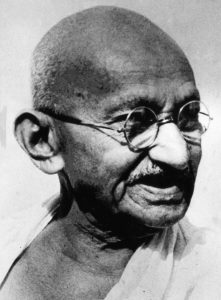
Mohandas Karamchand Gandhi
Some extracts from the reports submitted to the Committee will explain the strong recommendations of the committee.
Extracts from Gaurav Gatha for Class IV, Saraswati Shishu Mandir Prakashan, Lucknow, 1992
It was said that under emperor Ashoka:
“Ahimsa began to be… advocated. Every kind of violence began to be considered a crime. Even hunting, sacrifices in yajnas and use of arms began to be considered bad. It had a bad effect on the army. Cowardice slowly spread throughout the kingdom. The state bore the burden of providing food to the Buddhist monks. Therefore people began to become monks. Victory through arms began to be viewed as bad. Soldiers guarding the borders were demoralized… The preaching of Ahimsa had weakened north India (pp. 30-31).”
(Note how apart from the denigration of Buddhism and one of its basic tenets, non-violence, this prepares yet another ground for promoting hatred against the greatest apostle of ahimsa in modern times, Mahatma Gandhi, by the RSS. More on the latter aspect later.)

The Qutb Minar
On the rise of Islam it was said:
“Wherever they went, they had a sword in their hand. Their army went like a storm in all the four directions. Any country that came their way was destroyed. Houses of prayers and universities were destroyed. Libraries were burnt. Religious books were destroyed. Mothers and sisters were humiliated. Mercy and justice were unknown to them (pp.51-52).”
“Delhi’s Qutb Minar is even today famous in his (Qutbuddin Aibak’s) name. This had not been built by him. He could not have been able to build it. It was actually built by emperor Samudragupta. Its real name was Vishnu Stambha… This Sultan actually got some parts of it demolished and its name was changed (p. 73).”
(It strangely does not occur to the Hindu communalist how apt this above description is of what they have been up to in Gujarat, Pune and Ayodhya in recent years. In Pune, the library of the Bhandarkar Institute was vandalized, in Gujarat mothers and sisters were humiliated, and in Ayodhya the Babri Masjid was demolished.)
“Delhi’s Qutb Minar is even today famous in his (Qutbuddin Aibak’s) name. This had not been built by him. He could not have been able to build it. It was actually built by emperor Samudragupta. Its real name was Vishnu Stambha… This Sultan actually got some parts of it demolished and its name was changed (p. 73).” —Gaurav Gatha for Class IV, Saraswati Shishu Mandir Prakashan, Lucknow, 1992
Extracts from Itihas Gaa Rahaa Hai, for Class V, Saraswati Shishu Mandir Prakashan, Lucknow, 1991
“ …after that the invaders came with a sword in one hand and the Quran in the other. Innumerable Hindus were forcibly made Musalmans on the point of the sword. The struggle for freedom became a religious war. Innumerable sacrifices were made for religion. We went on and on winning one battle after another. We never allowed foreign rulers to settle down but we could not reconvert our separated brethren to Hinduism (p. 3).”
(Apart from the spewing of hate against Muslims it is notable how the struggle for freedom is here depicted as a religious war against Muslims and the apparent unfinished task was the reconversion to Hinduism of the Muslim converts!)
“ …after that the invaders came with a sword in one hand and the Quran in the other. Innumerable Hindus were forcibly made Musalmans on the point of the sword. The struggle for freedom became a religious war.” —Itihas Gaa Rahaa Hai, for Class V, Saraswati Shishu Mandir Prakashan, Lucknow, 1991
No wonder in the ‘freedom struggle’ so defined the RSS founder Hedgewar and successor Golwalkar get pride of place in this textbook and it is said:
“These Swayamsevaks removed the evils which hundreds of years of slavery had given…. This Sangathan became an object of pride for the country.”
The report of the NCERT quite appropriately summed up the impact of these books:
“The main purpose which these books would serve is to gradually transform the young children who came to these schools to study into bigoted morons in the garb of instilling in them patriotism.”
Extracts from the report on the Publications of Vidya Bharati
The Vidya Bharati Sansthan claims to be engaged in providing to the young generation education in religion, culture and nationalism. The catechistic series is part of the Sansthan’s effort in this direction.
Each booklet in the series comprises questions and answers on geography, politics, personalities, martyrs, morals, Hindu festivals, religious books, general knowledge, etc. Much of the material in these books is designed to promote blatantly communal and chauvinist ideas and popularize RSS and its policies and programmes.
Some examples of the kind of ‘knowledge’ of sanskriti these booklets are disseminating are given below:
India is presented in extreme chauvinist terms as the ‘original home of world civilisation’. One of the booklets (No. IX), for example, says,
“India is the most ancient country in the world. When civilisation had not developed in many countries of the world, when people in those countries lived in jungles naked or covering their bodies with the bark of trees or hides of animals, Bharat’s Rishis–Munis brought the light of culture and civilisation to all those countries.”
Some of the examples of the “spread of the light of Aryatva by Bharatiya Manishis” given are the following:
(i) “The credit for lighting the lamp of culture in China goes to the ancient Indians.”
(ii) “India is the mother country of ancient China. Their ancestors were Indian Kshatriyas… ”
(iii) The first people who began to inhabit China were Indians.”
(iv) “The first people to settle in Iran were Indians (Aryans).”
“India is the mother country of ancient China. Their ancestors were Indian Kshatriyas… ” —Booklet No. IX of the Vidya Bharati Sansthan
(v) “The popularity of the great work of the Aryans — Valmiki Ramayana — influenced Yunan (Greece) and there also the great poet Homer composed a version of the Ramayana.”
(vi) “The Languages of the indigenous people (Red Indians) of the northern part of America were derived from ancient Indian languages.”
Many of these booklets have a section each on ‘Sri Ramjanmabhumi’. They present RSS–VHP propaganda in the form of catechisms to be memorized by the faithful as absolute truths. Some of the questions–answers in these sections are as follows:
1.Who got the first temple built on the birth place of Shri Ram in Ayodhya?
A. Shri Ram’s son Maharaja Kush.
2.Who was the first foreign invader who destroyed Sri Ram temple?
A. Menander of Greece (150 B.C.)
3. Who got the present Rama Temple built?
A. Maharaja Chandragupta Vikramaditya (A.D. 380–413).
4. Which Muslim plunderer invaded the temples in Ayodhya in A.D. 1033?
A. Mahmud Ghaznavi’s nephew Salar Masud.
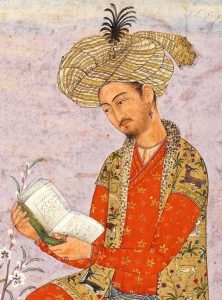
Babur, 16th century painting
5. Which Mughal invader destroyed the Rama Temple in A.D. 1528?
A. Babur.
6. Why is Babri Masjid not a mosque?
A. Because Muslims have never till today offered Namaz there.
7. How many devotees of Rama laid down their life to liberate Rama temple from A.D. 1528 to A.D. 1914?
A. Three lakh fifty thousand.
“Q. Who was the first foreign invader who destroyed Sri Ram temple?
A. Menander of Greece (150 B.C.)” —Vidya Bharati Sansthan Booklet
8. How many times did the foreigners invade Shri Ramajanmabhumi?
A. Seventy–seven times.
9. “Which day was decided by Sri Ram Kar Sewa Samiti to start Kar Sewa?
A. 30 October, 1990.
10. Why will 2 November 1990 be inscribed in black letters in the history of India?
A. Because on that day, the then Chief Minister by ordering the Police to shoot unarmed Kar Sewaks massacred hundreds of them.
11. When was the Shilanyas of the temple laid in Sri Ram Janmbhumi?
A. 1 November 1989.
12. What was the number of the struggle for the liberation of Ram Janmabhumi which was launched on 30 October1990?
A. 78th struggle.
Some other questions are as follows:
When did Ramabhakta Kar Sewaks unfurl the saffron flag on Shri Ramjanmabhumi?
Mention the names of the young boys who laid down their life while unfurling the saffron flag.
In one of the books in the series (No.12), there is a section on the saints of the world and the sects/faiths founded by them. The statements made in this section are designed to promote contempt and blind hatred against other religions. One statement on the followers of Christianity who are portrayed as anti-national and a threat to the integrity of India reads as follows:
“It is because of the conspiratorial policies of the followers of this religion that India was partitioned. Even today Christian missionaries are engaged in fostering anti–national tendencies in Nagaland, Meghalaya, Arunachal, Bihar, Kerala, and other regions of our country because of which there is a grave danger to the integrity of present day India”.
About Islam, one of the statements is as follows:
“Thousands of opponents of idol worship, the followers of Islam, go to the pilgrimage centre of Islamic community at Kaaba to worship ‘Shivalinga’. In Muslim society, the greatest wish is to have a darshan of that black stone (Shivalinga)”.
In another question, children are asked to fill in the blanks ‘rivers of blood’ as the means by which Prophet Mohammad spread Islam.
There are special sections in some of the booklets on RSS, its founder and its other leaders. In one booklet (No. 11), RSS, which is mentioned along with Arya Samaj and Ramakrishna Mission etc. as a social reform organisation, is given the status of divine power. It says:
“Some divine power, whether it was Bhagwan Ram or Bhagwan Krishna, has always emerged for the preservation of the greatness of Indian culture. The Hindu organization Rashtriya Swayam Sewak Sangh has arisen to end the present miserable condition and for the defence of the greatness of Bharatiya Sanskriti.”
The NCERT report sums up its view on this kind of study material thus:
“Much of this material is designed to promote bigotry and religious fanaticism in the name of inculcating knowledge of culture in the young generation. That this material is being used as teaching and examination material in schools which, presumably, have been accorded recognition should be a matter of serious concern.”
“Much of this material is designed to promote bigotry and religious fanaticism in the name of inculcating knowledge of culture in the young generation. That this material is being used as teaching and examination material in schools which, presumably, have been accorded recognition should be a matter of serious concern.” —NCERT report
Indeed it is a matter of serious concern considering the rapidly growing influence of the RSS institutions spreading such hatred and poison. The first Saraswati Shishu Mandir was set up in 1952 in Gorakhpur (UP) in the presence of RSS chief Golwalkar. By the time the Vidya Bharati, an apex all India organization of the RSS providing an umbrella to its educational effort, was formed in 1977, there were already about 500 RSS schools and 20,000 students. In the early 1990s the BJP governments in states like UP, Madhya Pradesh, Rajasthan and Himachal Pradesh encouraged the growth of Vidya Bharati schools and even permitted them to set their own syllabus and conduct examinations for the lower classes and run teacher training programmes. By 1993-94 the total number of schools run by Vidya Bharati was claimed to be 6000 with 40,000 teachers and 1,200,000 students. With state power coming to the BJP at the centre in 1998, the RSS influence in schools took a quantum leap. In 1999 there were reportedly 14,000 Vidya Bharati schools with 80,000 teachers and 18,00,000 students! (Pralay Kanungo, RSS Tryst with Politics from Hedgewar to Sudarshan; Desh Raj Goyal, Rashtriya Swayamsevak Sangh.)
Moreover, state power was now being used to go beyond just the RSS schools. In September 1998, the Kalyan Singh government sought to link all state run schools to the RSS shakha. It was made compulsory for all primary schools in the state to involve RSS pracharaks for imparting naitik siksha or moral education.
The first Saraswati Shishu Mandir was set up in 1952 in Gorakhpur (UP) in the presence of RSS chief Golwalkar. By the time the Vidya Bharati, an apex all India organization of the RSS providing an umbrella to its educational effort, was formed in 1977, there were already about 500 RSS schools and 20,000 students. In the early 1990s the BJP governments in states like UP, Madhya Pradesh, Rajasthan and Himachal Pradesh encouraged the growth of Vidya Bharati schools and even permitted them to set their own syllabus and conduct examinations for the lower classes and run teacher training programmes. By 1993-94 the total number of schools run by Vidya Bharati was claimed to be 6000 with 40,000 teachers and 1,200,000 students. With state power coming to the BJP at the centre in 1998, the RSS influence in schools took a quantum leap. In 1999 there were reportedly 14,000 Vidya Bharati schools with 80,000 teachers and 18,00,000 students!… In September 1998, the Kalyan Singh government sought to link all state run schools to the RSS shakha. It was made compulsory for all primary schools in the state to involve RSS pracharaks for imparting naitik siksha or moral education.
The link between the recent, post Godhra human carnage in Gujarat under the BJP government in the State (and the centre) and the poison fed to young formative minds in schools has been repeatedly pointed out. Children reading the Gujarat State Social Studies text for class IX would learn:
“ …apart from the Muslims even the Christians, Parsees and other foreigners are also recognised as the minority communities. In most of the states the Hindus are in minority and Muslims, Christians and Sikhs are in majority in these respective states.”
In the Gujarat State Social Studies text for Class X, which virtually eulogises fascism and Nazism, the children would learn how to deal with these ‘foreigners’ who are making the Hindus a minority in their own country.
“Ideology of Nazism: Like Fascism, the principles or ideologies for governing a nation, propounded by Hitler, came to be known as the ideology of Nazism. On assuming power, the Nazi Party gave unlimited total and all embracing and supreme power to the dictator. The dictator was known as the ‘Fuhrer’. Hitler had strongly declared that ‘the Germans were the only pure Aryans in the entire world and they were born to rule the world’. In order to ensure that the German people strictly followed the principles of Nazism, it was included in the curriculum of the educational institutions. The textbooks said, ‘Hitler is our leader and we love him’.
Internal Achievements of Nazism: Hitler lent dignity and prestige to the German government within a short time by establishing a strong administrative set up. He created the vast state of Greater Germany. He adopted the policy of opposition towards the Jewish people and advocated the supremacy of the German race. He adopted a new economic policy and brought prosperity to Germany. He began efforts for the eradication of unemployment. He started constructing public buildings, providing irrigation facilities, building railways, roads and production of war materials. He made untiring efforts to make Germany self-reliant within one decade. Hitler discarded the Treaty of Versailles by calling it just ‘a piece of paper’ and stopped paying the war penalty. He instilled the spirit of adventure in the common people.” (‘Demonising Christianity and Islam’ and ‘On Fascism and Nazism’ in Communalism Combat, October 1999)
That in order to maintain the purity and supremacy of the ‘Aryan’ race millions of Jews were butchered is not even thought worthy of mention. ‘Nationalism’, efficient administration, economic prosperity, etc. are approvingly discussed. An uncanny similarity to a ‘shining India’ while Muslims and Christians in Gujarat burnt.
It is important to realise that the communalists have focused attention on history because it is on a particular distorted and often totally fabricated presentation of history that the communal ideology is hinged. If it is to be believed, for example, that the Muslims cannot be trusted, that they can never live peacefully with others, that they are barbaric, immoral and in the words of RSS founder, Hedgewar, like “hissing Yavana snakes”, then they have to be shown to have historically behaved like this. Similarly, in order to argue that Muslims and Christians are foreigners, it was necessary to argue that the ‘Aryans’, whom the RSS acknowledge as the true Indians, did not migrate from outside India but originated in India (and that they predated the Harappan civilization) even if it meant that another RSS guru, Golwalkar, had to argue, doing considerable violence to history and geography, that the Aryans may have come from the North Pole but the North Pole was originally in India, in the region of today’s Bihar and Orissa, and while the Aryans remained in India the North Pole later zigzagged its way up to its current location! To quote Golwalkar “…the Arctic Home in the Vedas was verily in Hindusthan itself and that it was not the Hindus who migrated to that land but the arctic which emigrated and left the Hindus in Hindusthan. (M.S. Golwalkar, We or Our Nationhood Defined, Bharat Publications, Nagpur, fourth edition, 1947, pp. 11-13. First published in 1939).”
It is important to realise that the communalists have focused attention on history because it is on a particular distorted and often totally fabricated presentation of history that the communal ideology is hinged.
While the RSS/Hindu communal effort to spread a communal interpretation of history has been around for many years, the new and more dangerous trend, after the BJP came to power at the Centre, was the attempt to use government institutions and state power to attack scientific and secular history and historians and promote an obscurantist, backward looking, communal historiography through state sponsored institutions at the national level. The last time the RSS came close to power at the centre was when the Jan Sangh had merged with the Janata Party and the Janata Party came to power in 1977. At that time an effort was made to ban school textbooks which were published by NCERT who had persuaded some of the tallest historians of India, like Romila Thapar, R.S. Sharma, Satish Chandra and Bipan Chandra to write. A country wide protest including from within the NCERT and other autonomous institutions put paid to this attempt and it had to be abandoned. The next time the Sangh combine came to power at the centre was in the late 1990s and the lessons of the previous experience were well learnt by the BJP. Anticipating resistance from autonomous institutions like the NCERT, UGC, ICSSR and the ICHR, the government first took great care to appoint those who were willing to serve as its instruments as Directors, Chairpersons and Council members in these bodies.
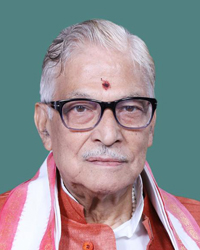
Murli Manohar Joshi
Having achieved that, the BJP government gave the education minister, Murli Manohar Joshi, full backing in implementing the RSS ideological agenda in education. For the RSS combine, there was no pulling back in the ideological sphere unlike what was done in the economic, political and even foreign policy spheres. The demands of the trade union or peasant fronts of the Sangh were often set aside, the Swadeshi Jagran Manch’s objections to economic reforms could be essentially ignored but not the RSS agenda in spreading communal ideology.
The demands of the trade union or peasant fronts of the Sangh were often set aside, the Swadeshi Jagran Manch’s objections to economic reforms could be essentially ignored but not the RSS agenda in spreading communal ideology.
M.M. Joshi now presided over the systematic destruction of the academic edifice built up painstakingly over decades. The NCERT director introduced a new National Curriculum Framework (NCF) in 2000, without attempting any wide consultation, leave alone seeking to arrive at a consensus. This, when education is a concurrent subject (involving partnership between the centre and the states) and virtually since Independence the tradition had been to put any major initiative in education through discussion in Parliament and the Central Advisory Board of Education (CABE), a body which includes among its members the education ministers of all states and Union Territories. The NCERT arrived at the New Curriculum, which was widely seen by professional academics as introducing the Hindu communal agenda, without any reference to the CABE, thus violating both tradition and procedural requirements.
This was followed by deletions of passages from the existing NCERT history books written by eminent secular historians of the country such as Romila Thapar, R.S. Sharma and Satish Chandra, without any reference to the authors, violating all copyright norms. As mentioned above, these globally renowned authors had been persuaded by the NCERT on the recommendation of the National Integration Council to write textbooks for children which would correct the existing colonial and communal bias in history books. Shockingly, what deletions were to be made was decided not by any recognized committee of professional historians but by the RSS with the RSS view put on record in a published volume a few months before the NCERT was ordered to carry them out! In fact Dina Nath Batra, the General Secretary of Vidya Bharati, which runs a network of schools for the RSS, complained that Murli Manohar Joshi was moving too slowly. Vidya Bharati had suggested 42 deletions but the NCERT carried out only four so far (actually there were ten deletions from four books— Outlook, 17 December, 2001). A book edited by Dina Nath Batra of the RSS, called “The Enemies of Indianisation: The Children of Marx, Macaulay and Madarsa”, was published on 15 August 2001. The book which was an attack on scientific secular history and historians, contained an article listing 41 distortions in the existing NCERT books. The NCERT director J.S. Rajput himself had contributed an article in the volume listing a few more distortions. Significantly, on the basis of an NCERT notification the deletions of certain passages from the NCERT books was ordered by the CBSE (after of course the eminent historian Prof. D. N. Jha was unceremoniously sacked as the chairperson of the history syllabus committee) on 23 October 2001.
It was repeatedly claimed that the deletions were in deference to the religious sentiments, especially of minorities. However, the larger purpose was clearly to create doubts about the books in people’s minds by making allegations that they violate religious sentiments of different communities, and thus divert attention from the real motive: to replace secular history with communal history. If those who were master-minding the whole show had any concern for minority sentiments, would Dina Nath Batra, the head of the Education section of the RSS, say in justification of the deletions: “Jesus Christ was a najayaz (illegitimate) child of Mary but in Europe they don’t teach that. Instead, they call her Mother Mary and say she is a virgin (Outlook, 17 December, 2001).”
Apart from handing over the textbooks to RSS activists and supporters for their approval an equally dangerous trend was started with the NCERT director asserting that he “would consult religious experts before including references to any religion in the textbooks, to avoid hurting the sentiments of the community concerned” (The Times of India, 5 October 2001). This extremely pernicious move was reiterated by the education minister Murli Manohar Joshi, who stated that “all material in textbooks connected with religions should be cleared by the heads of the religions concerned before their incorporation in the books” (Hindustan Times, 4 December, 2001). Once such a veto over what goes into textbooks is given to religious leaders or community leaders, as the government had started doing, it would become impossible to scientifically research and teach not only history but other disciplines, including the natural sciences. Deletions had already been made from textbooks for pointing out the oppressive nature of the caste system in India, presumably because some ‘sentiments’ were hurt. ‘Sentiments’ have been hurt in India among some when the practice of Sati was criticized. Would this mean deletions of references from textbooks regarding this evil practice? Sentiments could be hurt if science lessons questioned the ‘immaculate conception’ or if they proposed theories of origin of man which were not in consonance with the beliefs associated with most religions. Should such lessons be altered or ‘talibanised’ according to the dictats of various religious leaders? If the teaching of modern scientific advances ‘hurts’ the religious sentiments of one or the other group, should it be banned altogether?
Apart from handing over the textbooks to RSS activists and supporters for their approval an equally dangerous trend was started with the NCERT director asserting that he “would consult religious experts before including references to any religion in the textbooks, to avoid hurting the sentiments of the community concerned”.
There were a lot of protests from the secular forces at this attempt at communalizing the education system. Historians, the secular media and a very wide section of the Indian intelligentsia voiced their protests unambiguously. The Delhi Historians’ Group (a group of Historians from several universities in and around Delhi who had got together to fight the government’s effort to communalize education) brought out a book putting together the views of eminent historians, journalists and eminent citizens like Nobel Laureate Amartya Sen and K. R. Narayanan, the President of India on the attempt at communalizing education. The book (Communalisation of Education: The History Textbooks Controversy, 2002, compiled by Mridula Mukherjee and Aditya Mukherjee, with an introduction, for Delhi Historians’ Group) also listed the deletions made from the history textbooks.
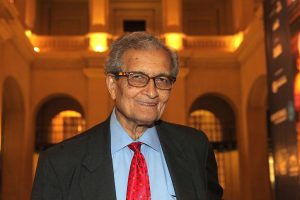
Amartya Sen
However, at this point an alarming trend began of attacking those who did not agree with the kind of interpretations or fabrications promoted by the Hindu Communal forces. They were branded as anti-national. The RSS Sarasanghachalak, K.S. Sudershan called those who were resisting the revisions of the NCERT textbooks “anti-Hindu Euro-Indians”. Sudershan laments that these anti-Hindu Euro–Indians hate ‘Vedic maths’ and do astonishing things like not believing that in ancient India we knew about nuclear energy and that Sage Bharadwaja and Raja Bhoj not only “described the construction of Aeroplanes” but discussed “details like what types of aeroplanes would fly at what height, what kind of problems they might encounter, how to overcome those problems, etc (Organiser, 4 November, 2001).”
Calling them anti-Hindu and anti-national was not enough, a group of self-appointed protectors of Indian nationalism demanded that the historians Romila Thapar, R.S. Sharma and Arjun Dev should be arrested. The HRD minister, Murli Manohar Joshi, at whose residence this group had collected, defended the deletions from their books and called for a “war for the country’s cultural freedom” (Hindustan Times, 8 December, 2001). The Minister went one step further and added fuel to this fascist tendency of trying to browbeat or terrorize the intelligentsia which stood up in opposition by branding the history written by these scholars as “intellectual terrorism unleashed by the left” which was “more dangerous than cross border terrorism” (Indian Express, 20 December, 2001). He exhorted the BJP storm troopers to counter both types of terrorism effectively. The dangerous implications of Joshi making this charge against these eminent historians at a time when the whole country was agitated by the attack on parliament by cross border terrorists must be noted.
Civilised societies cannot ban the teaching of unsavoury aspects of their past on the grounds that it would hurt sentiments or confuse children or it would diminish patriotic feelings among its children, as the government was trying to do. Nor can we fabricate fantasies to show our past greatness and become a laughing stock of the world. Should America remove slavery from its textbooks or Europe the saga of witch hunting and Hitler’s genocide of the Jews? Let us stand tall among civilised nations and not join the Taliban in suppressing history as well as the historians.
The communal attempts to distort Indian history and to give it a narrow sectarian colour in the name of instilling patriotism and demonstrating the greatness of India actually end up doing exactly the opposite. It in fact obfuscates the truly remarkable aspects of India’s past of which any society in the world could be justifiably proud.
The communal attempts to distort Indian history and to give it a narrow sectarian colour in the name of instilling patriotism and demonstrating the greatness of India actually end up doing exactly the opposite. It in fact obfuscates the truly remarkable aspects of India’s past of which any society in the world could be justifiably proud. The Nobel Laureate Amartya Sen, for example, argues that the “India’s persistent heterodoxy” and its “tendency towards multi-religious and multi-cultural coexistence” (aspects vehemently denied by the Communalists) had important implications for the development of science and mathematics in India. Arguing that the history of science is integrally linked with heterodoxy, Sen goes on to say that:
“ …the roots of the flowering of Indian science and mathematics that occurred in and around the Gupta period (beginning particularly with Aryabhatta and Varahamihira) can be intellectually associated with persistent expressions of heterodoxies which pre-existed these contributions. In fact Sanskrit and Pali have a larger literature in defence of atheism, agnosticism and theological scepticism than exists in any other classical language.”
He goes on to say that rather than the championing of “Vedic Mathematics” and “Vedic sciences” on the basis “of very little evidence”….
“ …what has …more claim to attention as a precursor of scientific advances in the Gupta period is the tradition of scepticism that can be found in pre-Gupta India—going back to at least the sixth century B.C.—particularly in matters of religion and epistemic orthodoxy (‘History and the Enterprise of Knowledge’, address delivered by Amartya Sen to the Indian History Congress in January, 2001, Calcutta).”
The tradition of scepticism in matters of religion and epistemic orthodoxy was continued by Mahatma Gandhi, for example when he argued “It is no good quoting verses from Manusmriti and other scriptures in defense of… orthodoxy. A number of verses in these scriptures are apocryphal, a number of them are meaningless” (Rajmohan Gandhi, The Good Boatman: A Portrait of Gandhi). Again he said “I exercise my judgment about every scripture, including the Gita. I cannot let a scriptural text supercede my reason. (Harijan, 1936)”
(Let us hope no group with hurt sentiments now demands the arrest of Amartya Sen as yet another son of ‘Macaulay, Marx and Madarsa’. Let us hope Murli Manohar Joshi in true Taliban fashion does not ask his storm troopers to extinguish the “intellectual terrorism” unleashed by Sen, in the same manner as it was felt necessary to silence Gandhi, ‘the greatest living Hindu’.)
“ …the roots of the flowering of Indian science and mathematics that occurred in and around the Gupta period (beginning particularly with Aryabhatta and Varahamihira) can be intellectually associated with persistent expressions of heterodoxies which pre-existed these contributions. In fact Sanskrit and Pali have a larger literature in defence of atheism, agnosticism and theological scepticism than exists in any other classical language.” —‘History and the Enterprise of Knowledge’, address delivered by Amartya Sen to the Indian History Congress in January, 2001, Calcutta.
Despite nationwide protests, particularly from the academia (including the widely respected, more than 60 year old, Indian History Congress, the national organization of professional historians) and the media, this process of what the Hindustan Times editor, Vir Sanghvi, called the ‘Talibanisation’ of education was continued. A new syllabus based on the NCF 2000 was adopted, again without following the proper procedures. There was widespread criticism of the new syllabus. The Delhi Historians Group held a workshop of eminent social scientists in Jawaharlal Nehru University, New Delhi on 3 March 2002 and brought out a critique of the NCERT Syllabus based on the new curriculum framework.
The process culminated in the existing NCERT history books written by eminent scholars (from which deletions were made) being withdrawn altogether and being replaced by books written by people whose chief qualification was their closeness to the Sangh ideology and not recognized expertise in their field of study. The Indian History Congress, alarmed at what poison was being dished out to our children, published in 2003 a volume called History in the New NCERT Text Books: A Report and an Index of Errors (authored by Irfan Habib, Suvira Jaiswal and Aditya Mukherjee). The volume ran into 130 pages just listing the major mistakes and distortions introduced in these books.
While it would not be possible here, for reasons of space, to list the specific distortions that are present in the new books it may be useful to reproduce below an extract from the History Congress publication, which sums up what is wrong with the four new books which were scrutinized, i.e., Makkhan Lal, et. al., India and the World, for class VI; Makkhan Lal, Ancient India, for Class XI; Meenakshi Jain, Medieval India, for Class XI and Hari Om, et.al., Contemporary India for Class IX.
“Often the errors are apparently mere products of ignorance; but as often they stem from an anxiety to present History with a very strong chauvinistic and communal bias. The textbooks draw heavily on the kind of propaganda that the so called Sangh Parivar Publications have been projecting for quite some time. The major features of the presentation of Indian history in the new NCERT books may be summed up as follows:-
- India is held to be the original home of the Aryans. No concern at all is shown with the origins of peoples speaking Dravidian and Austro-Asiatic languages.
- The Indian civilization is supposed to have its sole fountainhead in the “Vedic Civilization” which is given much greater antiquity than historians have been willing to assign it so far. The latter is claimed to have embraced the Indus Civilization, now to be called “Indus Saraswati” civilization, which is thus entirely credited to the Aryans.
- All substantive, scientific discoveries (from zero to decimal placement of numerals to heliocentric astronomy) are supposed to have been made in the “Vedic Civilization.”
- The Hindu religion is held superior to other religions. The Upanishads are proclaimed as “the most profound works of philosophy in any religion”. Both Buddhism and Jainism are held to have emerged out of them. Hindus had no sense of constraints about chronology, unlike the Christians. Hindus, moreover, had been by their faith true patriots. In the modern freedom struggle too, they alone are held to have been sincere, while the Muslims only dreamt of a Muslim empire or a separate nation. Medieval Muslims and modern Christians are also held to have been deeply influenced by racism.
- The caste system was all right in the beginning; only “rigidities” (not inequities or oppression of Dalits) are seen in its later stages and very lightly touched upon. The Dalits in effect are excluded from history.
- A neutral or even admiring stance is maintained about practices such as sati or jauhar in ancient and medieval India. Abductions of women are described as a legitimate form of marriage, not apparently inconsistent with women being held in honour.
- Foreigners have taught little or nothing to Indians, while India has given so much to the world in all realms of culture.
- Muslims brought little new to India, except oppression and temple-destruction. All the dark corners are thoroughly presented in the narrative of medieval India, as regards Muslims, while they are coolly overlooked in that of ancient India.
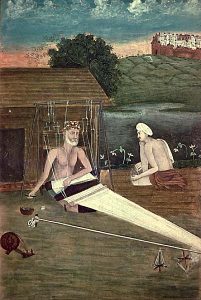
Kabir, Painting dated 1825
- The rise of a composite culture is ignored or downplayed. Kabir gets with difficulty a sentence in the medieval India textbook (where, on the other hand, Guru Gobind Singh appears as a “devotee of Goddess Chandi”).
- In modern India, “Muslim separatism” is the great bugbear, while Hindu communalism is not even mentioned, and the Hindu Mahasabha leaders appear uniformly as great patriots.
- The growth of the great modern values of democracy, gender equality, secularism, welfare state, etc., is neglected, or passed over in silence.
- There is little or nothing on Indian social reformers like Ram Mohan Roy, Keshav Chandra Sen, Jotiba Phule, and even B.R. Ambedkar – since apparently traditional Hindu society is not thought to have been in need of reform.
- The mainstream secular and democratic elements in the National Movement are presented as unimportant or mere obstacles to the growth of (Hindu) “Cultural Nationalism”. Harsh words are used for the Moderates; there is a deliberate effort to either ignore or present in unfavourable light Jawaharlal Nehru, and also the Left, especially the Communists.

Guru Gobind Singh, 1800s watercolour
With such parochialism and prejudice as the driving force behind these textbooks, it is clear that these cannot be converted into acceptable textbooks by a mere removal of the linguistic and the factual errors pointed out in our Index. In many cases the basic arguments in the textbooks are built on these very errors of fact, and so the errors cannot be removed without changing the main ideas behind the textbooks.
These textbooks are therefore beyond the realm of salvage, and they need to be withdrawn altogether.
Until such a withdrawal takes place, we hope our Index will help both teachers and students to rectify the more serious errors in the books and so attain a more balanced view of our past”.
Irfan Habib, Suvira Jaiswal, Aditya Mukherjee
(It may be pointed out that this Report and Index of Errors had the unanimous approval of the entire executive committee of the Indian History Congress)
“The caste system was all right in the beginning; only ‘rigidities’ (not inequities or oppression of Dalits) are seen in its later stages and very lightly touched upon. The Dalits in effect are excluded from history… Abductions of women are described as a legitimate form of marriage, not apparently inconsistent with women being held in honour… Muslims brought little new to India, except oppression and temple-destruction. All the dark corners are thoroughly presented in the narrative of medieval India, as regards Muslims, while they are coolly overlooked in that of ancient India.” —Irfan Habib, Suvira Jaiswal, Aditya Mukherjee on the presentation of Indian history in the new NCERT books.
There is an uncanny similarity between the distortions in these NCERT books and those produced by the RSS Shishu Mandirs and Vidya Bharati and the ideas of the RSS/Hindu communal ideologues Golwalkar, Hedgewar and Savarkar. The distrust of minorities, particularly Muslims, the insistence that the Aryans originated in India and that the Vedic civilization predated any other in India and was superior to other civilizations and sometimes their creator, etc., are constant motifs throughout.
In today’s context it is of particular interest to see how the RSS/Hindu communal effort to appear as nationalist, when their actual role in the Indian national movement was not only nil but negative, has led to the distortion of the history of the national movement itself. Since the Hindu communalists fought against Muslims and not against British colonialism, there is an attempt to define Indian nationalism itself as a “religious war” against Muslims. The actual Indian national movement, which was a secular struggle against the political economy of colonialism and not a religious or racial war against the British, is termed “cultural nationalism”, by which the Hindu communalists mean Hindu nationalism.
The foremost leader of the Indian national movement, Mahatma Gandhi, who fought for a common struggle of Hindus and Muslims against British colonial domination and not a religious war against anybody, is uniformly demonized by the RSS/Hindu communalists as has been shown later in the book. In the NCERT textbooks it takes the form of grossly underplaying the role of the Mahatma and completely ignoring the role of the Hindu communal forces in the elimination of perhaps the greatest person to walk the earth in the 20th century. In the first edition of Hari Om’s ‘Contemporary India’ for Class X, a book dealing with the 20th century, Gandhiji’s assassination was not even mentioned! When there was a national furore on this question a reprint edition was brought out which had this bare sentence:
“Gandhiji’s efforts to bring peace and harmony in society came to a sudden and tragic end due to his assassination by Nathuram Godse on January 30 1948, in Delhi while Gandhiji was on his way to attend a prayer meeting.” (p. 57)
No mention was still made of who Godse was, and of his strong links with the RSS and the Hindu Mahasabha, particularly its leader Savarkar. This, as we have pointed out in the next section, despite Sardar Patel, the then home minister’s clear conclusion that:
“It was a fanatical wing of the Hindu Mahasabha directly under Savarkar that (hatched) the conspiracy and saw it through”
Clearly, the RSS and the Hindu communalists had much to hide which they did and still try to do in a cowardly manner; a manner which they have tried to justify as clever strategy. The next part will discuss the whole issue of Gandhiji’s assassination and the role of the Sangh and associated bodies in making that happen.
This chapter has been carried courtesy the permission of the authors Aditya Mukherjee, Mridula Mukherjee and Sucheta Mahajan. You can buy RSS, School Texts and the Murder of Mahatma Gandhi: The Hindu Communal Project here.
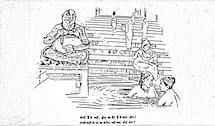
In the colonial period, the threat of the lecherous male gaze was used by the new patriarchy to restrict access to employment and public space for women, maintaining a patriarchal division of labour. Read how this process unfolded in our newest excerpt.
Saurav Kumar Rai
__

Was Lala Lajpat Rai's Hindu nationalism congruent with the principles of secularism? Explore our latest excerpt from Vanya Vaidehi Bhargav's fresh off-the-press book - Being Hindu, Being Indian: Lala Lajpat Rai's Ideas of Nation for more.
Vanya Vaidehi Bhargav
__
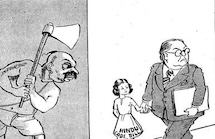
Popularly, we think that political cartoons question the powerful but what if this was not the case? What if political cartoons, replicated structures of the socially dominant? Read how in our new excerpt on political cartoons featuring Dr. Ambedkar.
Unnamati Syama Sundar
__

On Martyrs' day 2024, read the poet Sarojini Naidu's tribute to Gandhi given over All India Radio two days after his assassination.
Sarojini Naidu
__

On Republic Day, the Indian History Collective presents you, twenty-two illustrations from the first illustrated manuscript (1954) of our Constitution.
Indian History Collective
__
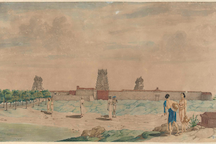
One of the key petitioners in the Ayodhya title dispute was Bhagwan Sri Ram Virajman. This petitioner was no mortal, but God Ram himself. How did Ram find his way from heaven to the Supreme Court of India to plead his case? Read further to find out.
Richard H Davis
__
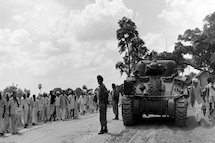
Labelled "one of the shortest, happiest wars ever seen", the integration of the princely state of Hyderabad in 1948 was anything but that. Read about the truth behind the creation of an Indian Union, the fault lines left behind, and what they signify
Afsar Mohammad
__

How did Bengal get a large Muslim population? Was it conversion by ruling elites was there something deeper at play? Read Dr. Eaton's classic essay to find out.
Richard Eaton
__
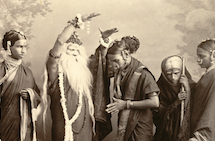
An excerpt from Shailaija Paik's new book 'Vulgarity of Caste' that documents the pivotal role Tamasha (the popular art form) has played in reinforcing and producing caste dynamics in Marathi society.
Shailaja Paik
__
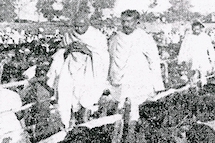
In 1942, two sub-districts in Bengal declared independence and set up a parallel government. The second part of our story brings you archival papers in the form of letters, newspaper reports, and judicial records documenting this remarkable movement.
Indian History Collective
__
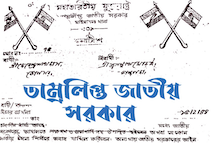
In 1942, five years before India was independent, two sub-divisions in Bengal not only declared their independence— they also instituted a parallel government. The first in a new series.
Indian History Collective
__
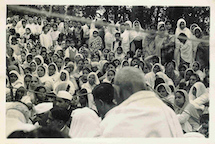
In his own words, read Mohandas Karamchand Gandhi's views on the proselytising efforts taken on by the organisations such as Arya Samaj, Tabhligi Jamaat, and the Church Missionary Society of England.
Mohandas Karamchand Gandhi
__
TIMELINE
-
2500 BC - Present 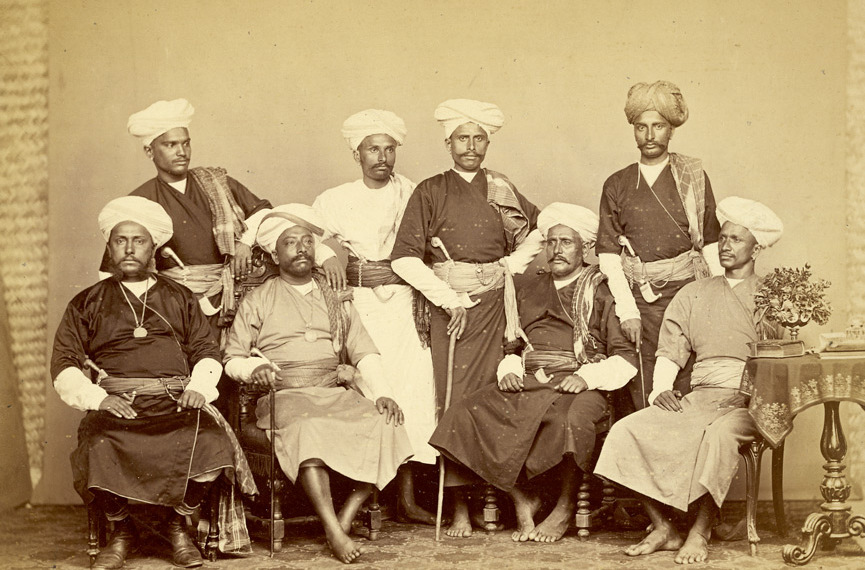
2500 BC - Present Tribal History: Looking for the Origins of the Kodavas -
2200 BC to 600 AD 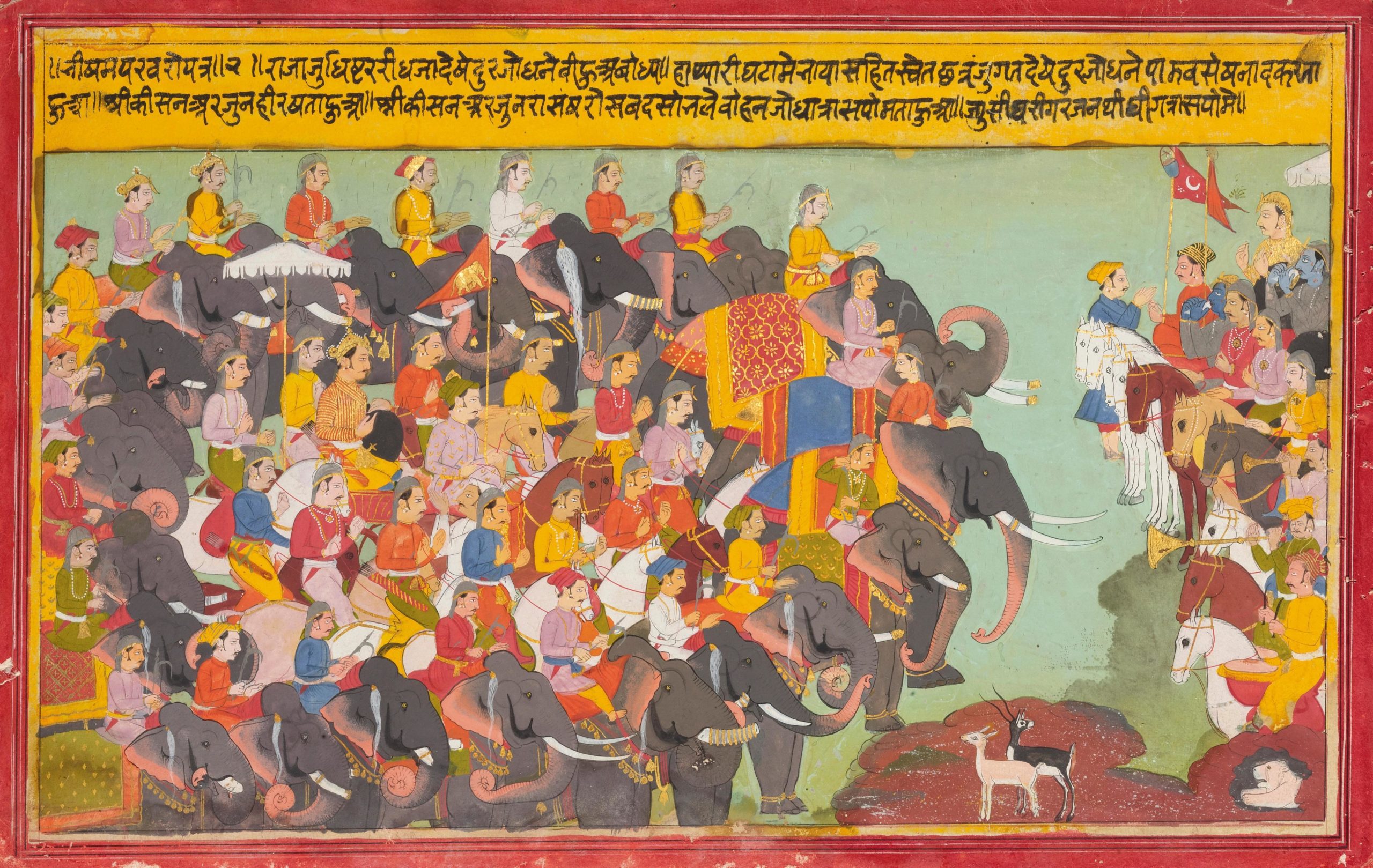
2200 BC to 600 AD War, Political Violence and Rebellion in Ancient India -
400 BC to 1001 AD 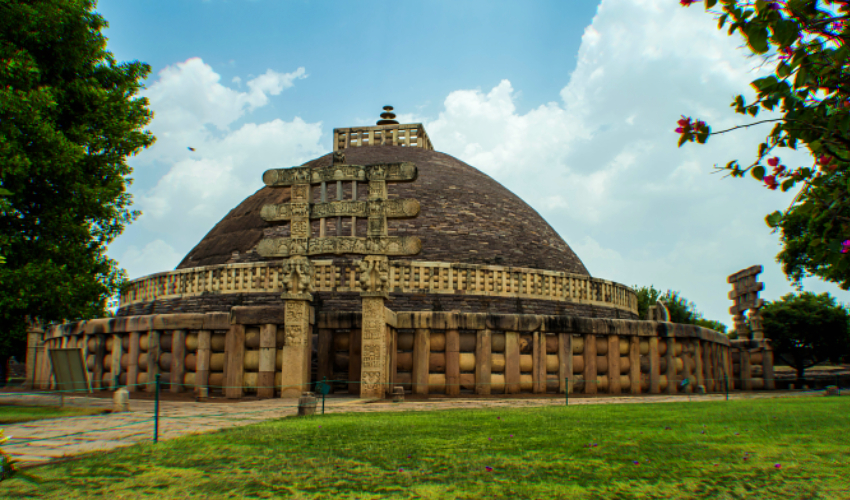
400 BC to 1001 AD The Dissent of the ‘Nastika’ in Early India -
600CE-1200CE 
600CE-1200CE The Other Side of the Vindhyas: An Alternative History of Power -
c. 700 - 1400 AD 
c. 700 - 1400 AD A Historian Recommends: Representing the ‘Other’ in Indian History -
c. 800 - 900 CE 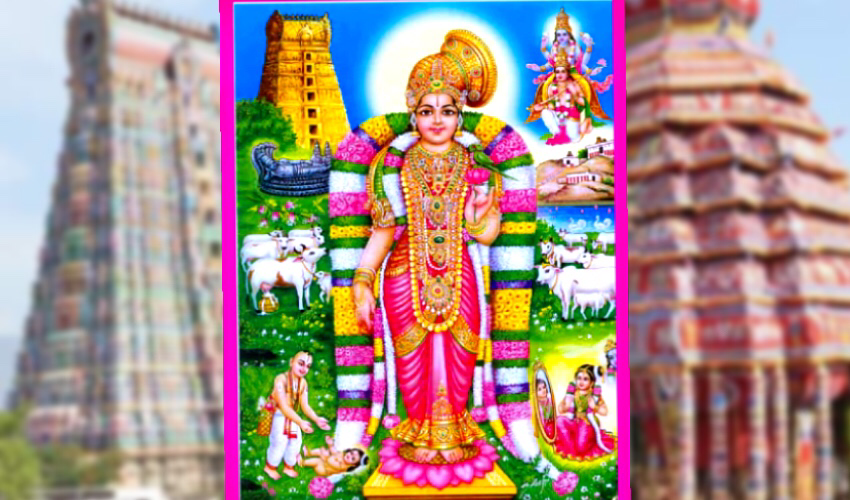
c. 800 - 900 CE ‘Drape me in his scent’: Female Sexuality and Devotion in Andal, the Goddess -
1192 
1192 Sufi Silsilahs: The Mystic Orders in India -
1200 - 1850 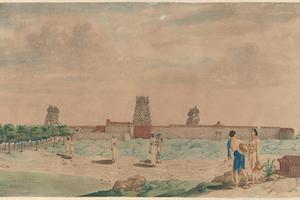
1200 - 1850 Temples, deities, and the law. -
c. 1500 - 1600 AD 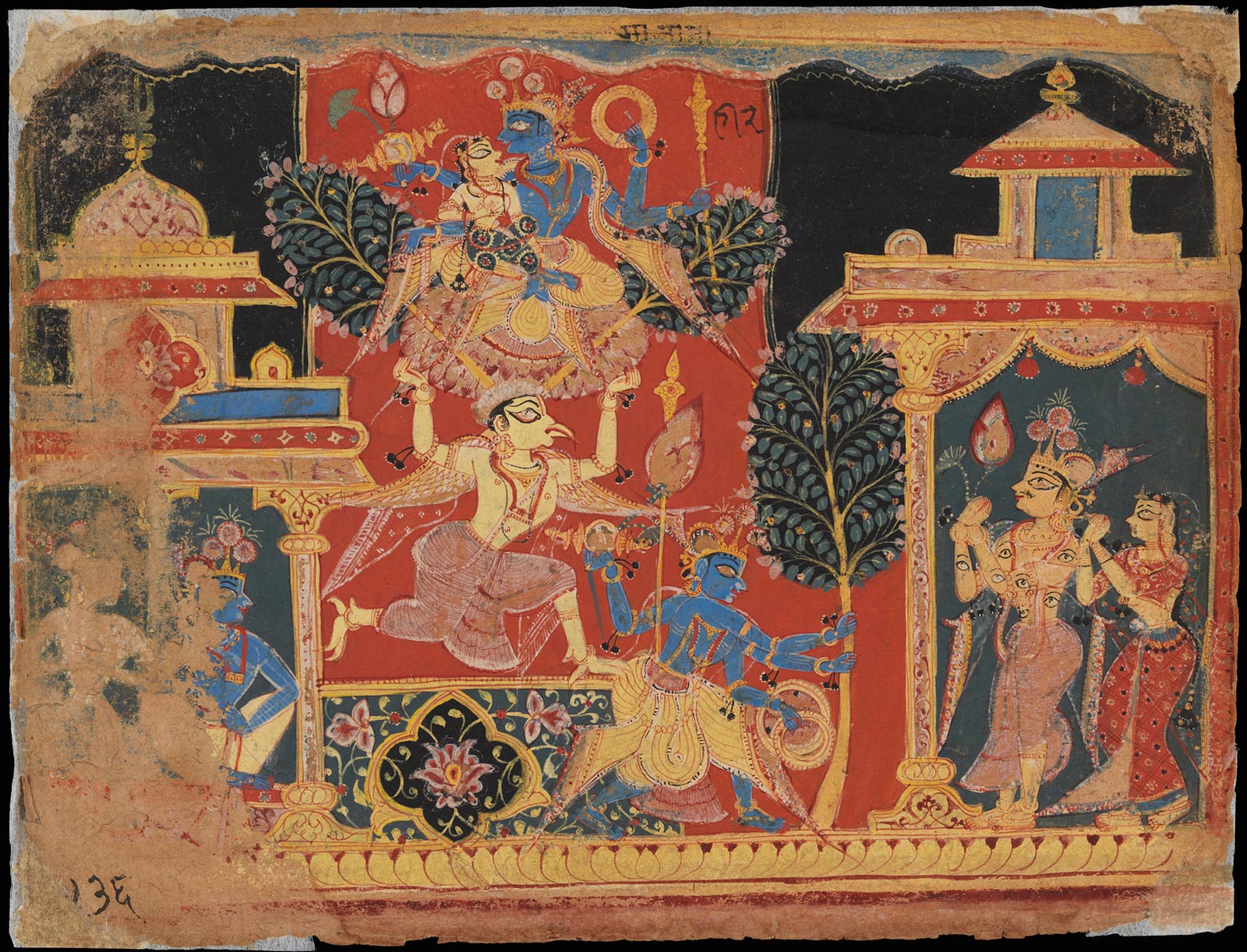
c. 1500 - 1600 AD A Historian Recommends: Religion in Mughal India -
1200-2020 
1200-2020 Policing Untouchables and Producing Tamasha in Maharashtra -
1530-1858 
1530-1858 Rajputs, Mughals and the Handguns of Hindustan -
1575 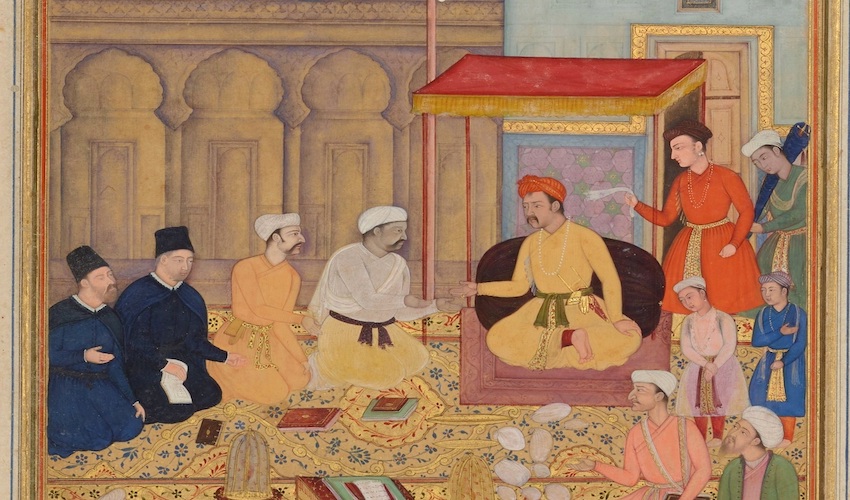
1575 Abdul Qadir Badauni & Abul Fazl: Two Mughal Intellectuals in King Akbar‘s Court -
1579 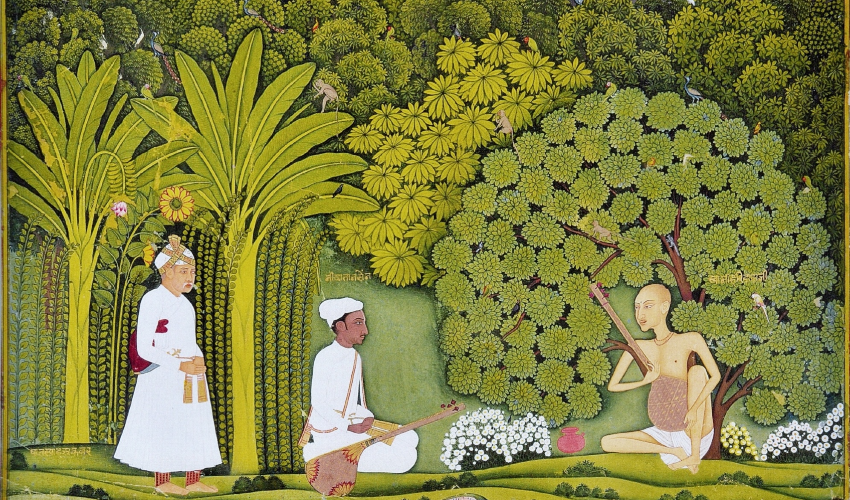
1579 Padshah-i Islam -
1550-1800 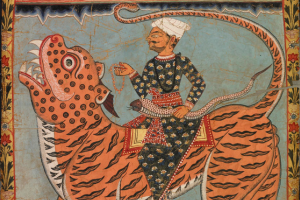
1550-1800 Who are the Bengal Muslims? : Conversion and Islamisation in Bengal -
c. 1600 CE-1900 CE 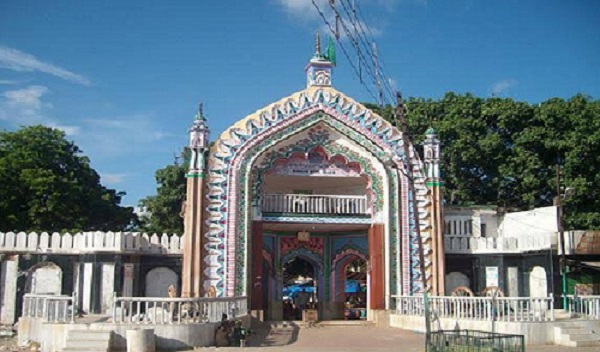
c. 1600 CE-1900 CE The Birth of a Community: UP’s Ghazi Miyan and Narratives of ‘Conquest’ -
1553 - 1900 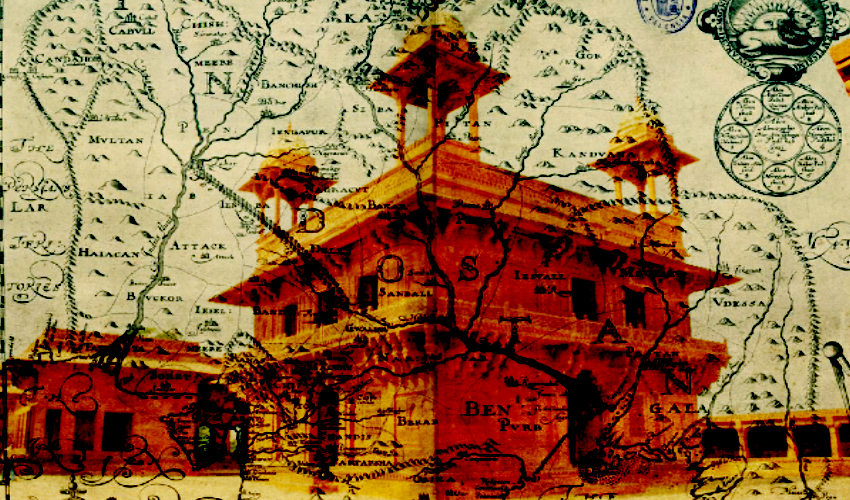
1553 - 1900 What Happened to ‘Hindustan’? -
1630-1680 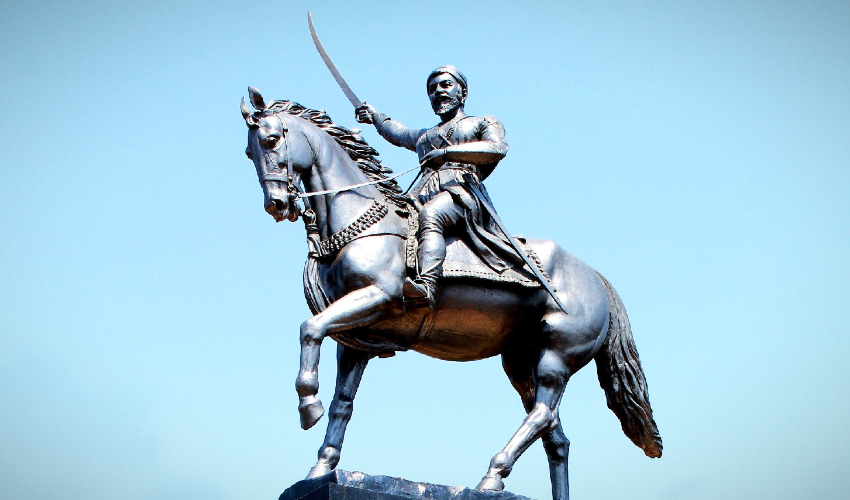
1630-1680 Shivaji: Hindutva Icon or Secular Nationalist? -
1630 -1680 
1630 -1680 Shivaji: His Legacy & His Times -
c. 1724 – 1857 A.D. 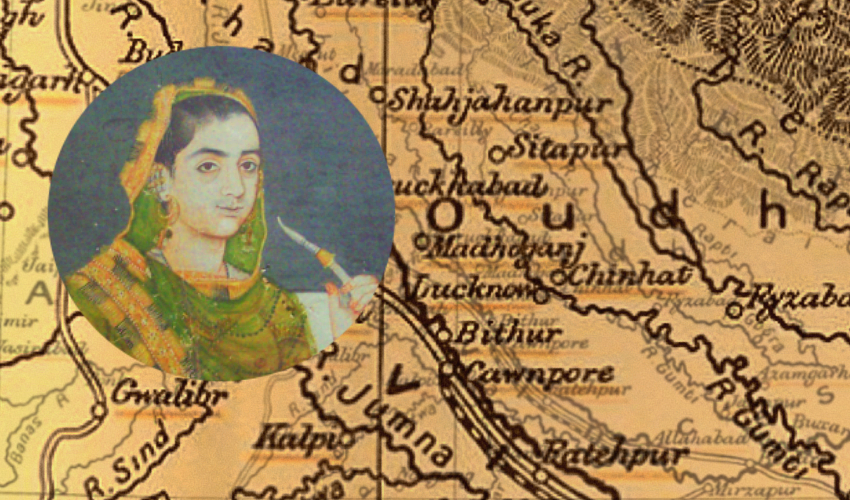
c. 1724 – 1857 A.D. Bahu Begum and the Gendered Struggle for Power -
1818 - Present 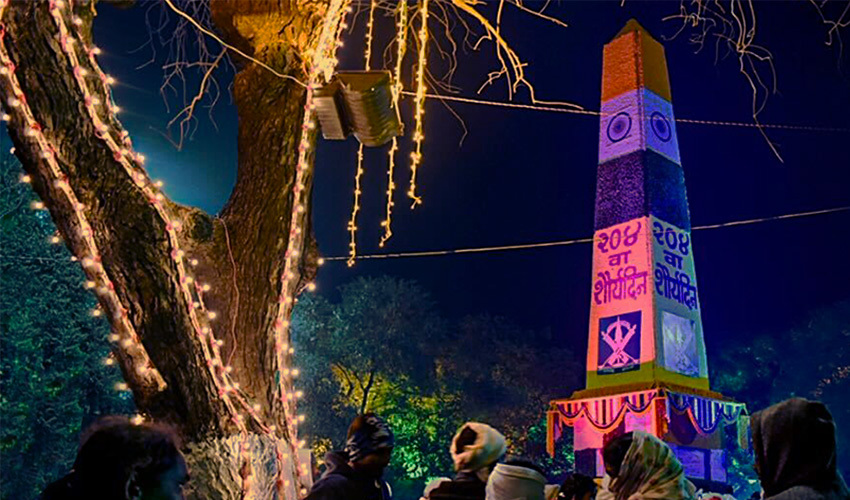
1818 - Present The Contesting Memories of Bhima-Koregaon -
1831 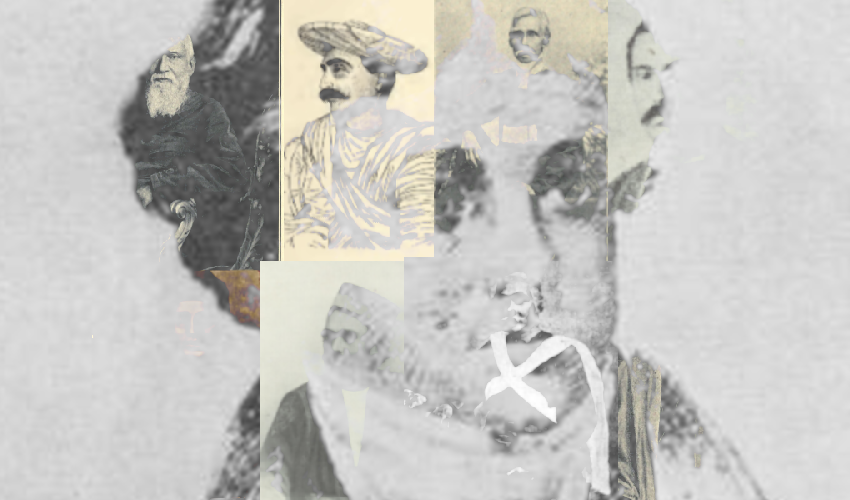
1831 The Derozians’ India -
1855 
1855 Ayodhya 1855 -
1856 
1856 “Worshipping the dead is not an auspicious thing” — Ghalib -
1857 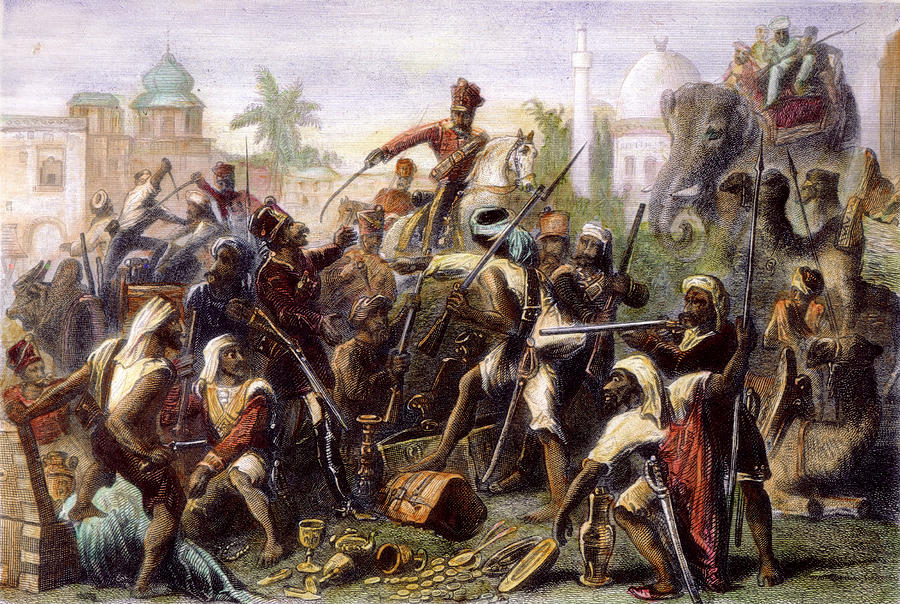
1857 A Subaltern speaks: Dalit women’s counter-history of 1857 -
1858 - 1976 
1858 - 1976 Lifestyle as Resistance: The Curious Case of the Courtesans of Lucknow -
1883 - 1894 
1883 - 1894 The Sea Voyage Question: A Nineteenth century Debate -
1887 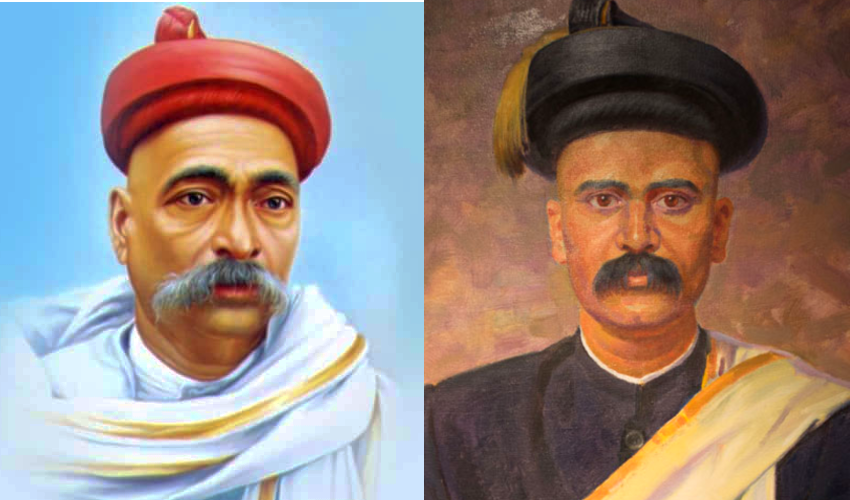
1887 The Great Debaters: Tilak Vs. Agarkar -
1893-1946 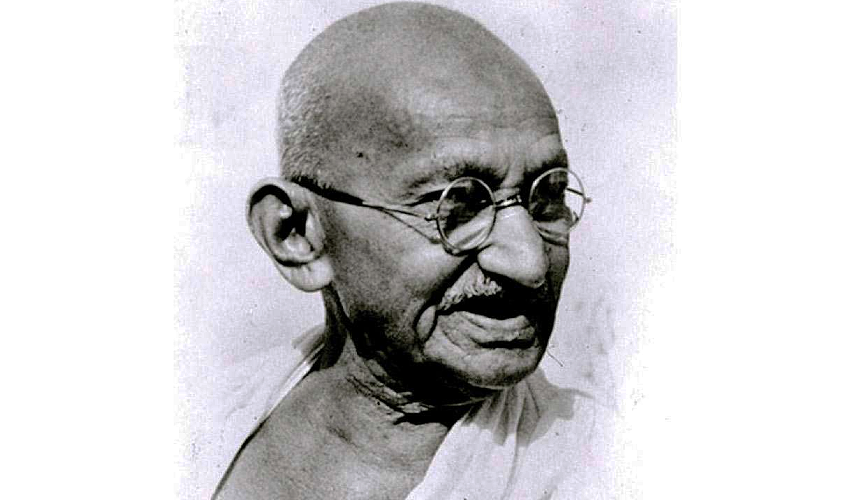
1893-1946 A Historian Recommends: Gandhi Vs. Caste -
1897 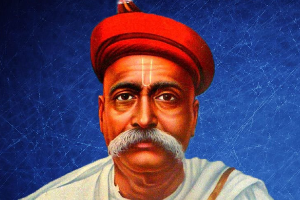
1897 Queen Empress vs. Bal Gangadhar Tilak: An Autopsy -
1913 - 1916 Modern Review 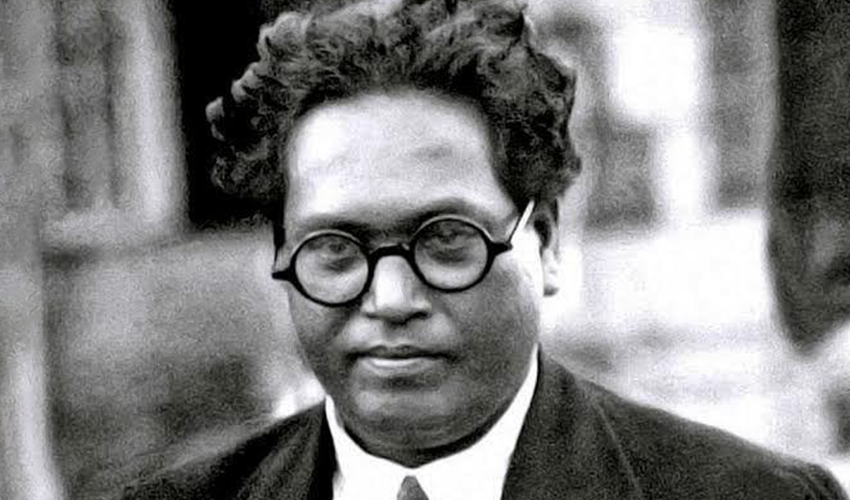
1913 - 1916 A Young Ambedkar in New York -
1916 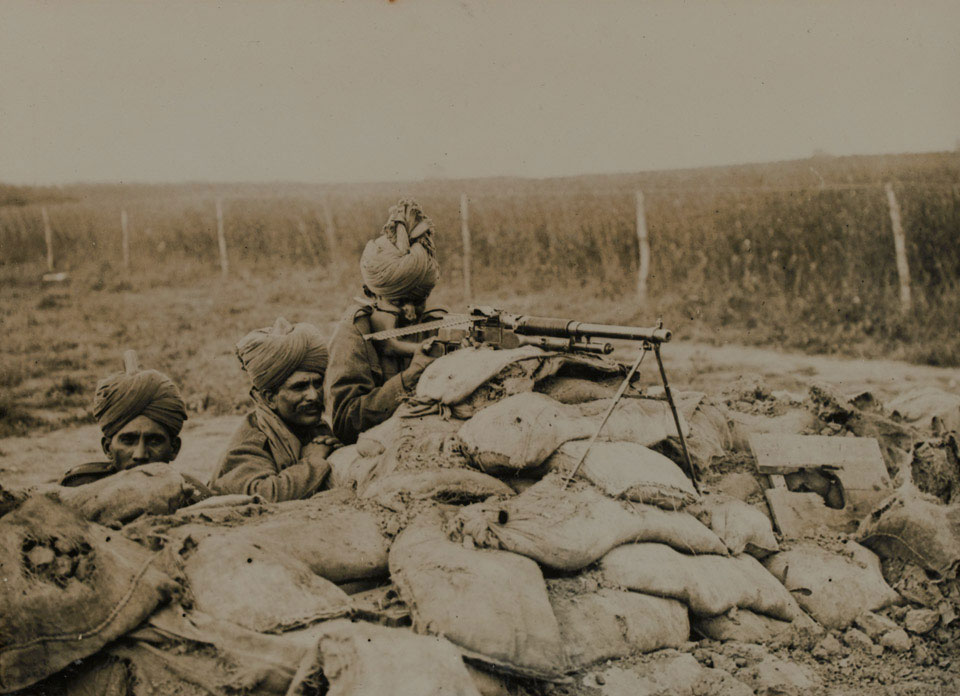
1916 A Rare Account of World War I by an Indian Soldier -
1917 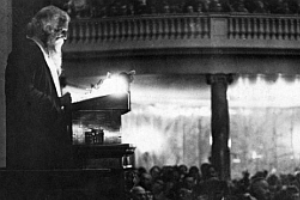
1917 On Nationalism, by Tagore -
1918 - 1919 
1918 - 1919 What Happened to the Virus That Caused the World’s Deadliest Pandemic? -
1920 - 1947 
1920 - 1947 How One Should Celebrate Diwali, According to Gandhi -
1921 
1921 Great Debates: Tagore Vs. Gandhi (1921) -
1921 - 2015 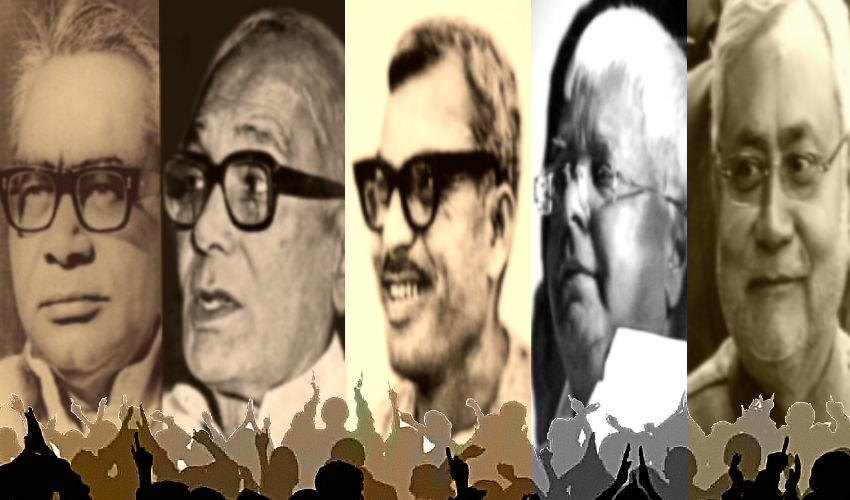
1921 - 2015 A History of Caste Politics and Elections in Bihar -
1915-1921 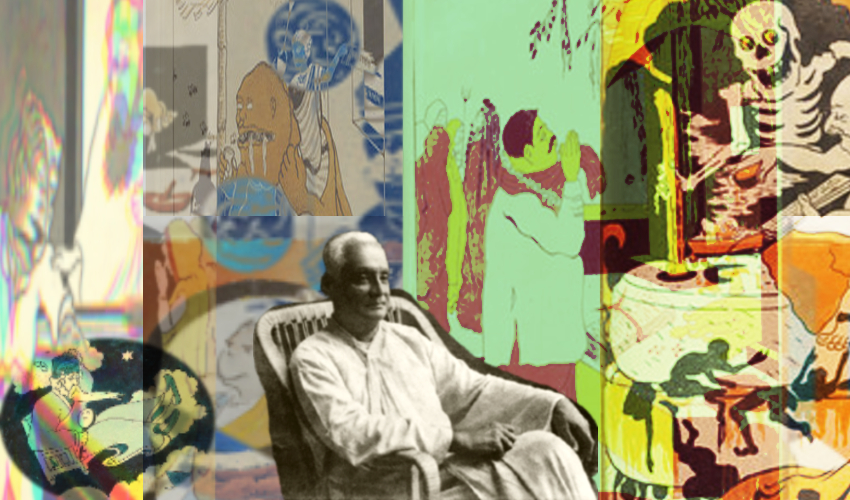
1915-1921 The Satirical Genius of Gaganendranath Tagore -
1924-1937 
1924-1937 What were Gandhi’s Views on Religious Conversion? -
1900-1950 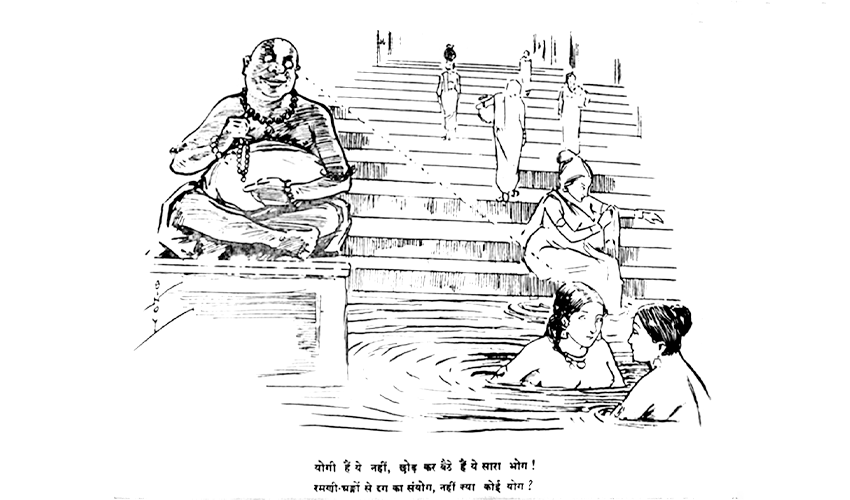
1900-1950 Gazing at the Woman’s Body: Historicising Lust and Lechery in a Patriarchal Society -
1925, 1926 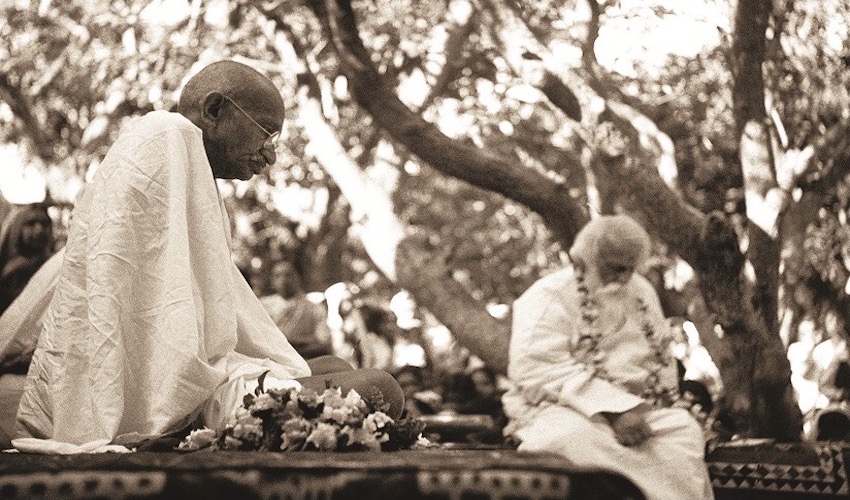
1925, 1926 Great Debates: Tagore vs Gandhi (1925-1926) -
1928 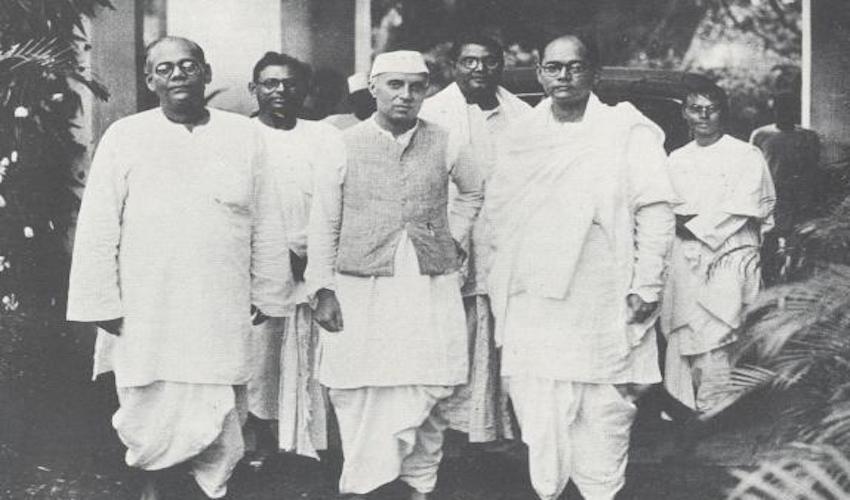
1928 Bhagat Singh’s dilemma: Nehru or Bose? -
1930 Modern Review 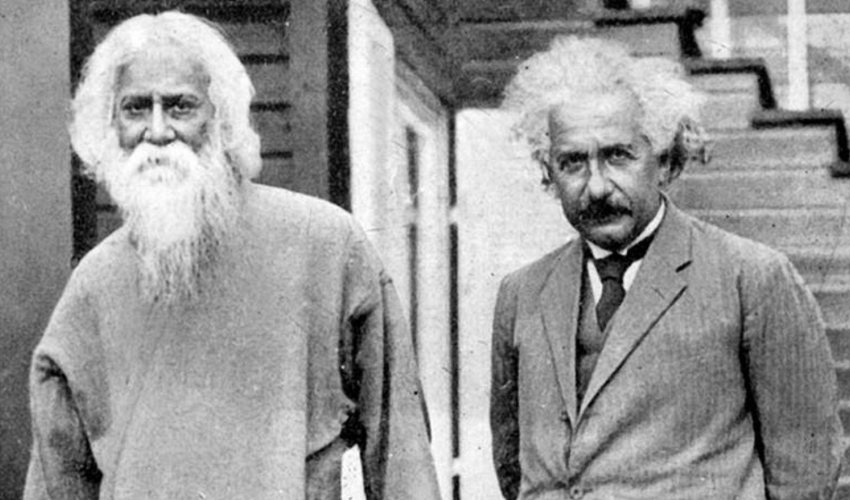
1930 The Modern Review Special: On the Nature of Reality -
1932 
1932 Caste, Gandhi and the Man Beside Gandhi -
1933 - 1991 
1933 - 1991 Raghubir Sinh: The Prince Who Would Be Historian -
1935 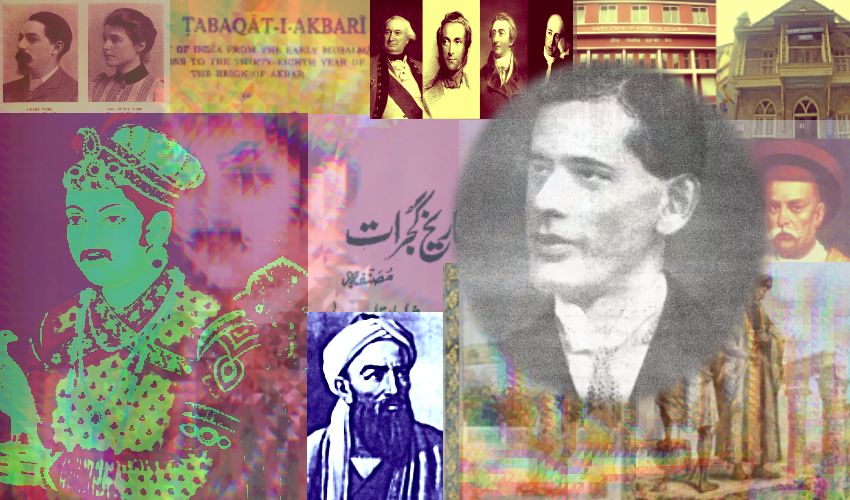
1935 A Historian Recommends: SA Khan’s Timeless Presidential Address -
1865-1928 
1865-1928 Understanding Lajpat Rai’s Hindu Politics and Secularism -
1935 Modern Review 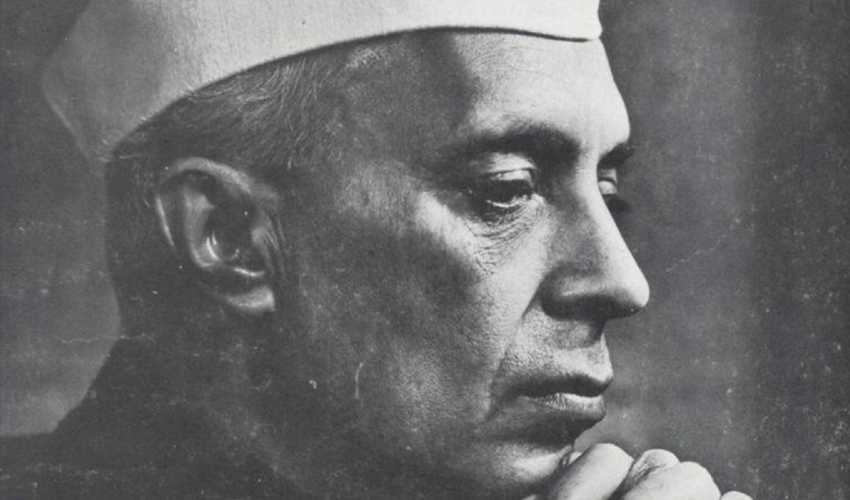
1935 The Modern Review Special: The Mind of a Judge -
1936 Modern Review 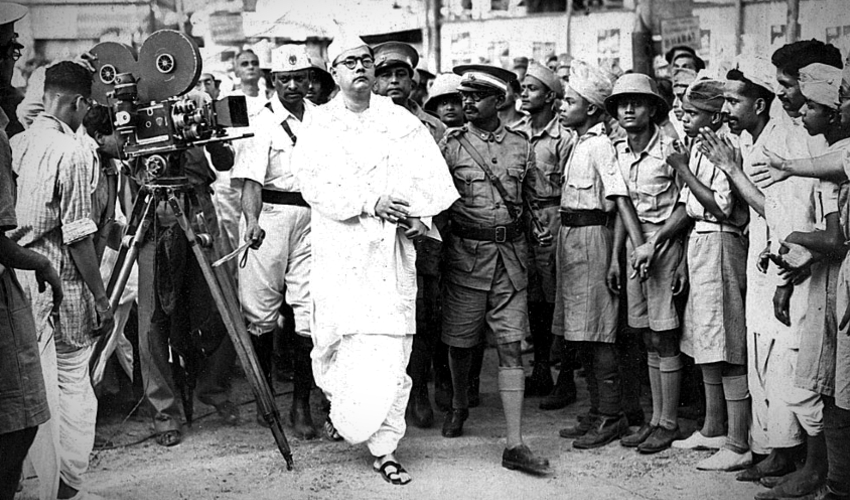
1936 The Modern Review Special: When Netaji Subhas Bose Was Wrongfully Detained for ‘Terrorism’ -
1936 
1936 Annihilation of Caste: Part 1 -
1936 Modern Review 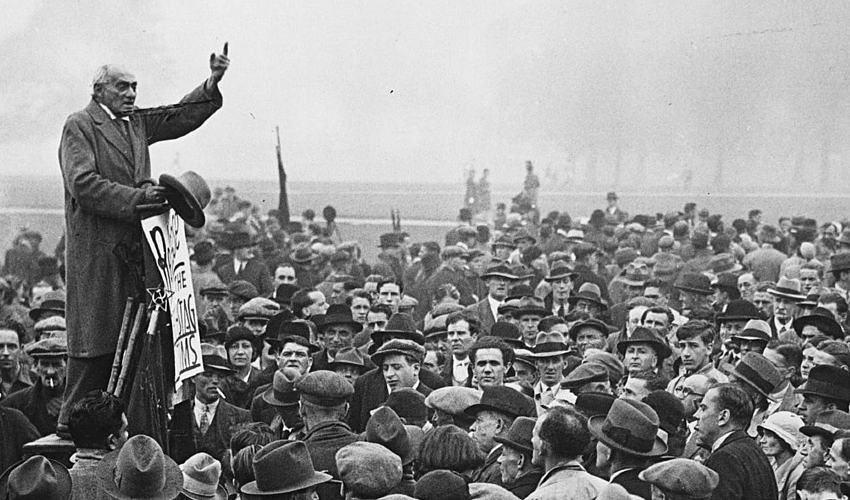
1936 The Modern Review Special: An Indian MP in the British Parliament -
1936 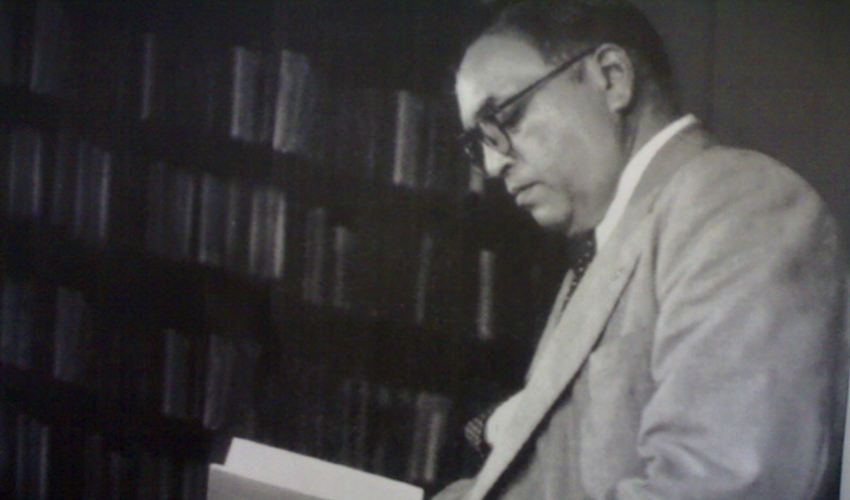
1936 Annihilation of Caste: Part 2 -
1936 
1936 A Reflection of His Age: Munshi Premchand on the True Purpose of Literature -
1936 Modern Review 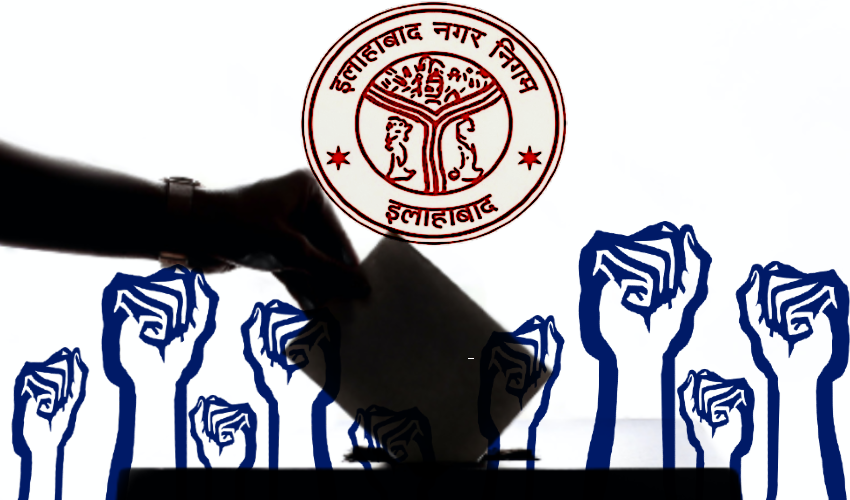
1936 The Modern Review Special: The Defeat of a Dalit Candidate in a 1936 Municipal Election -
1937 Modern Review 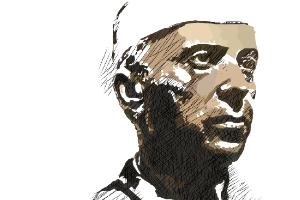
1937 The Modern Review Special: Rashtrapati -
1938 
1938 Great Debates: Nehru Vs. Jinnah (1938) -
1942 Modern Review 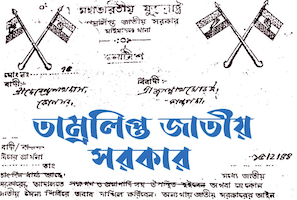
1942 IHC Uncovers: A Parallel Government In British India (Part 1) -
1942-1945 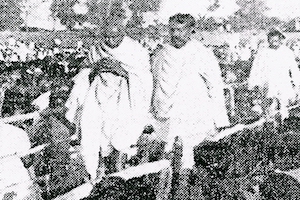
1942-1945 IHC Uncovers: A Parallel Government in British India (Part 2) -
1946 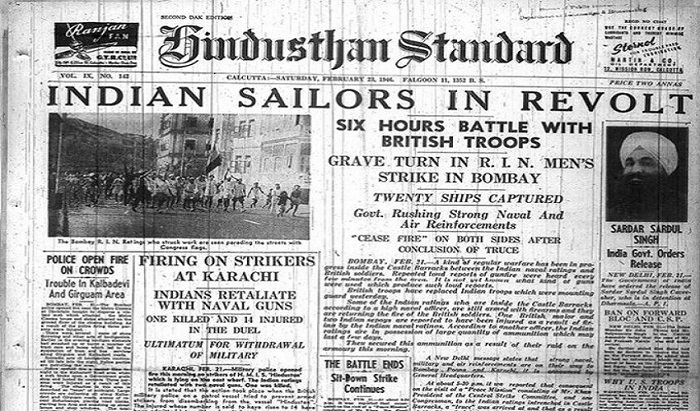
1946 Our Last War of Independence: The Royal Indian Navy Mutiny of 1946 -
1946 
1946 An Artist’s Account of the Tebhaga Movement in Pictures And Prose -
1946 – 1947 
1946 – 1947 “The Most Democratic People on Earth” : An Adivasi Voice in the Constituent Assembly -
1946-1947 
1946-1947 VP Menon and the Birth of Independent India -
1916 - 1947 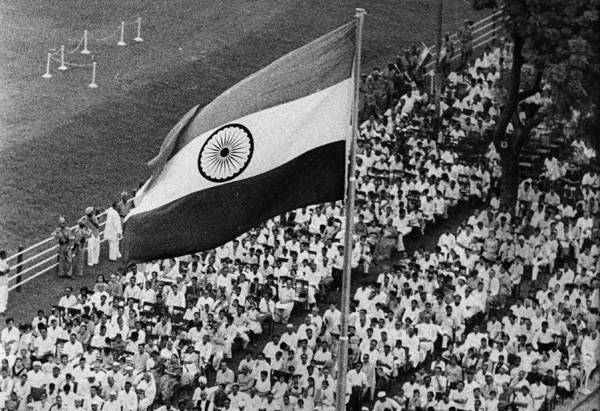
1916 - 1947 8 @ 75: 8 Speeches Independent Indians Must Read -
1947-1951 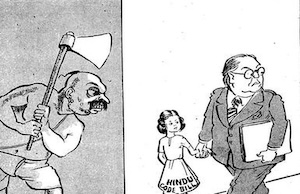
1947-1951 Ambedkar Cartoons: The Joke’s On Us -
1948 
1948 “My Father, Do Not Rest” -
1940-1960 
1940-1960 Integration Myth: A Silenced History of Hyderabad -
1948 
1948 The Assassination of a Mahatma, the Princely States and the ‘Hindu’ Nation -
1949 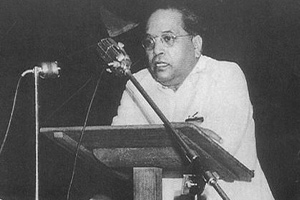
1949 Ambedkar warns against India becoming a ‘Democracy in Form, Dictatorship in Fact’ -
1950 
1950 Illustrations from the constitution -
1951 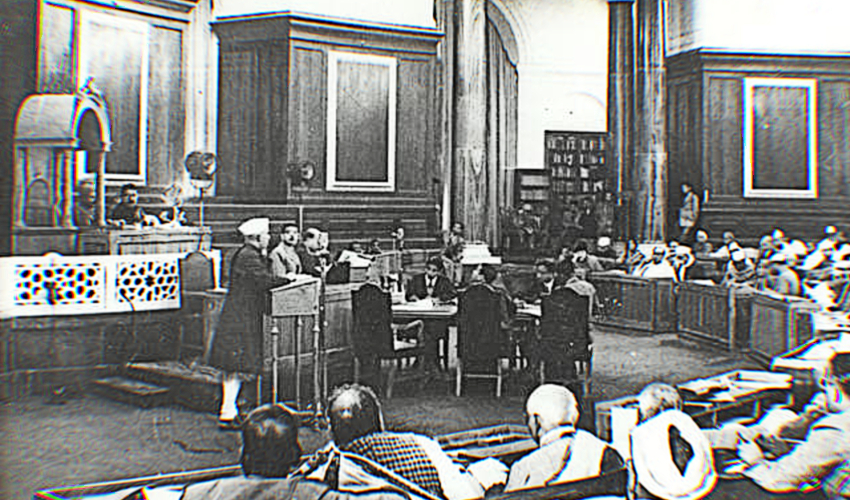
1951 How the First Amendment to the Indian Constitution Circumscribed Our Freedoms & How it was Passed -
1967 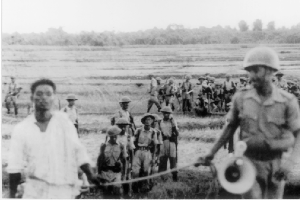
1967 Once Upon A Time In Naxalbari -
1970 
1970 R.C. Majumdar on Shortcomings in Indian Historiography -
1973 - 1993 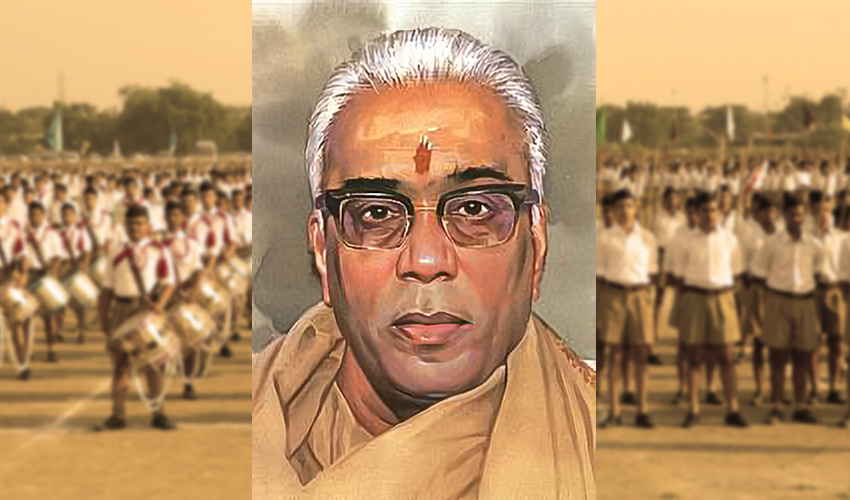
1973 - 1993 Balasaheb Deoras: Kingmaker of the Sangh -
1975 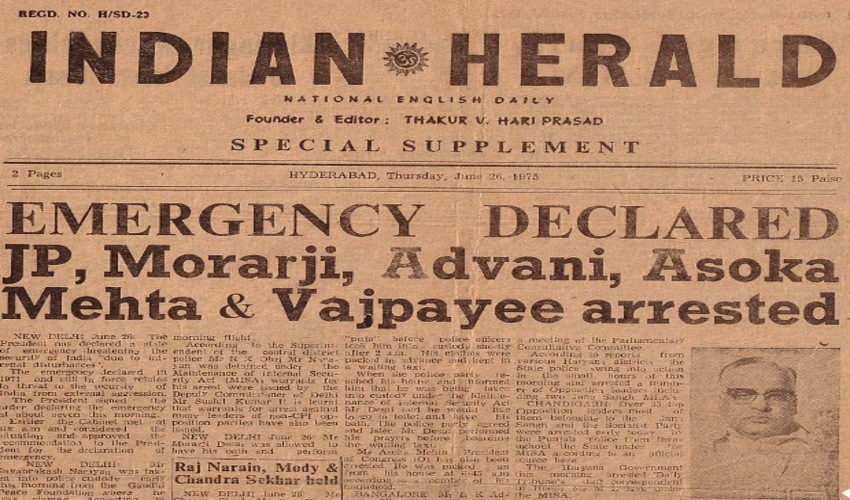
1975 The Emergency Package: Shadow Power -
1975 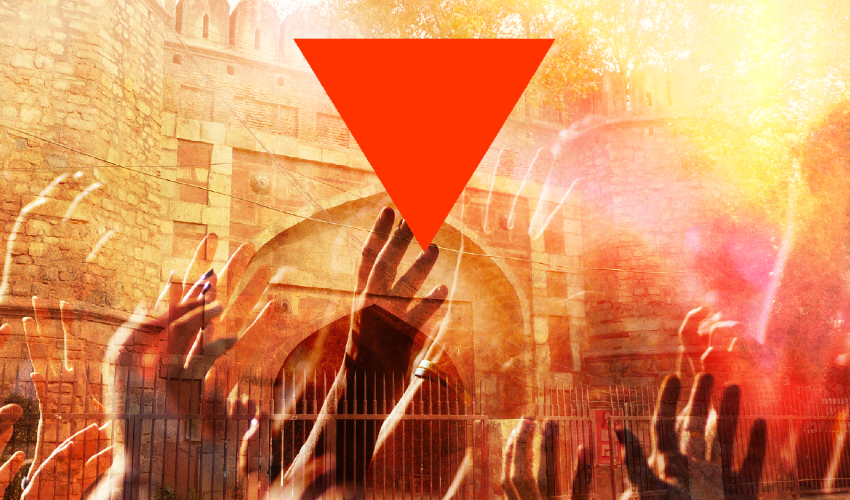
1975 The Emergency Package: The Prehistory of Turkman Gate – Population Control -
1977 – 2011 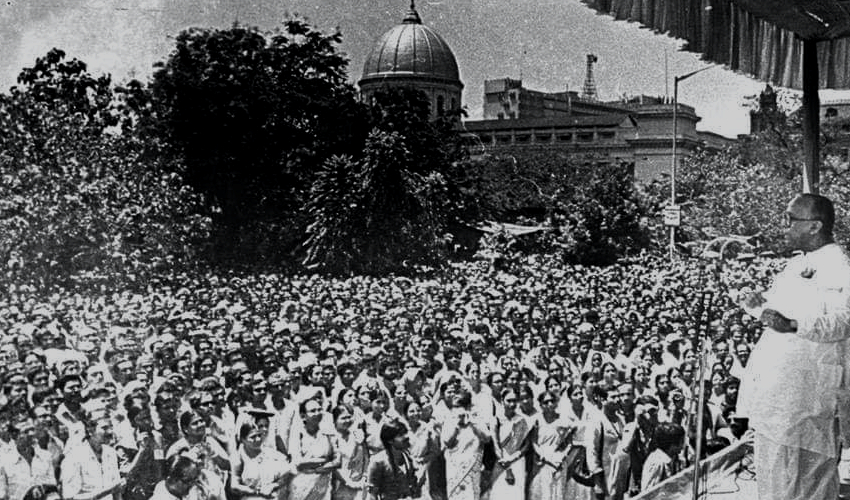
1977 – 2011 Power is an Unforgiving Mistress: Lessons from the Decline of the Left in Bengal -
1984 
1984 Mrs Gandhi’s Final Folly: Operation Blue Star -
1916-2004 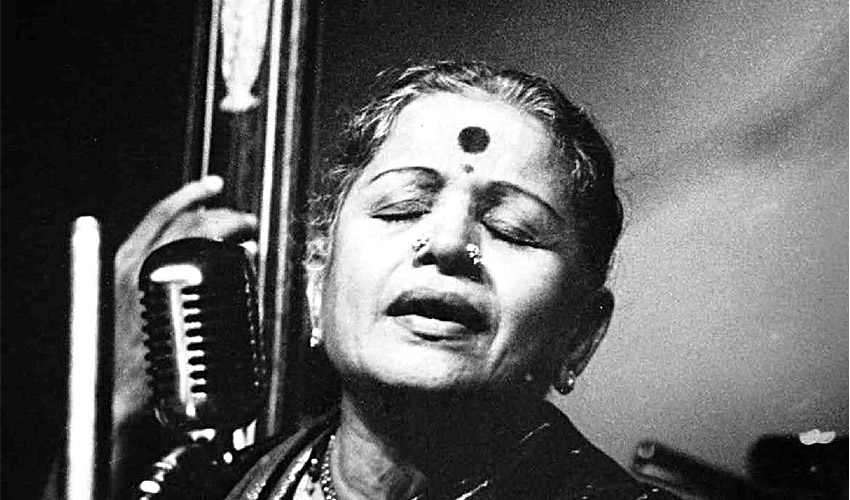
1916-2004 Amjad Ali Khan on M.S. Subbulakshmi: “A Glorious Chapter for Indian Classical Music” -
2008 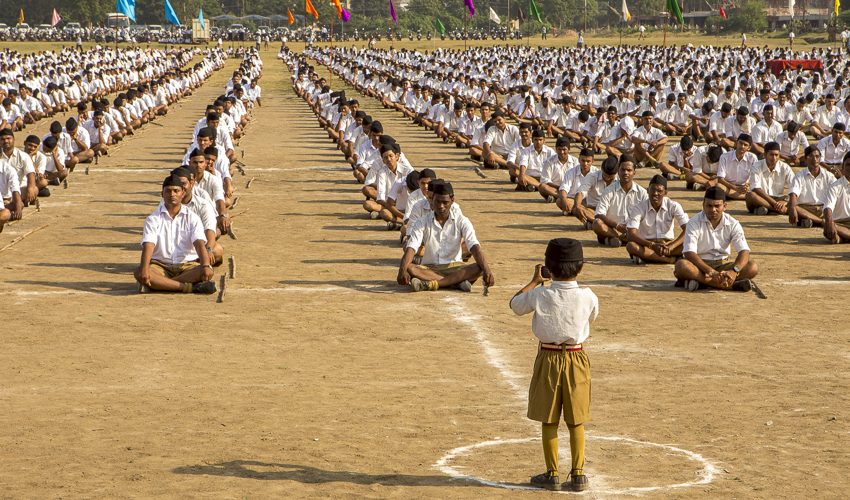
2008 Whose History Textbook Is It Anyway? -
2006 - 2009 
2006 - 2009 Singur-Nandigram-Lalgarh: Movements that Remade Mamata Banerjee -
2020 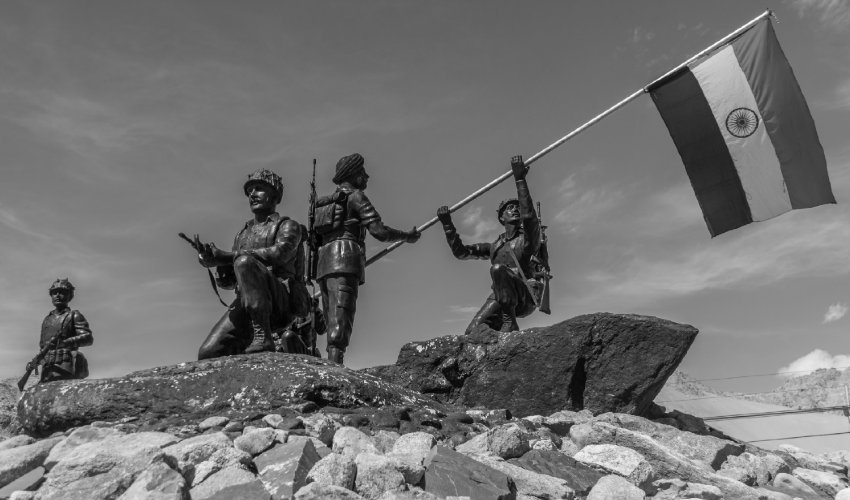
2020 The Indo-China Conflict: 10 Books We Need To Read -
2021 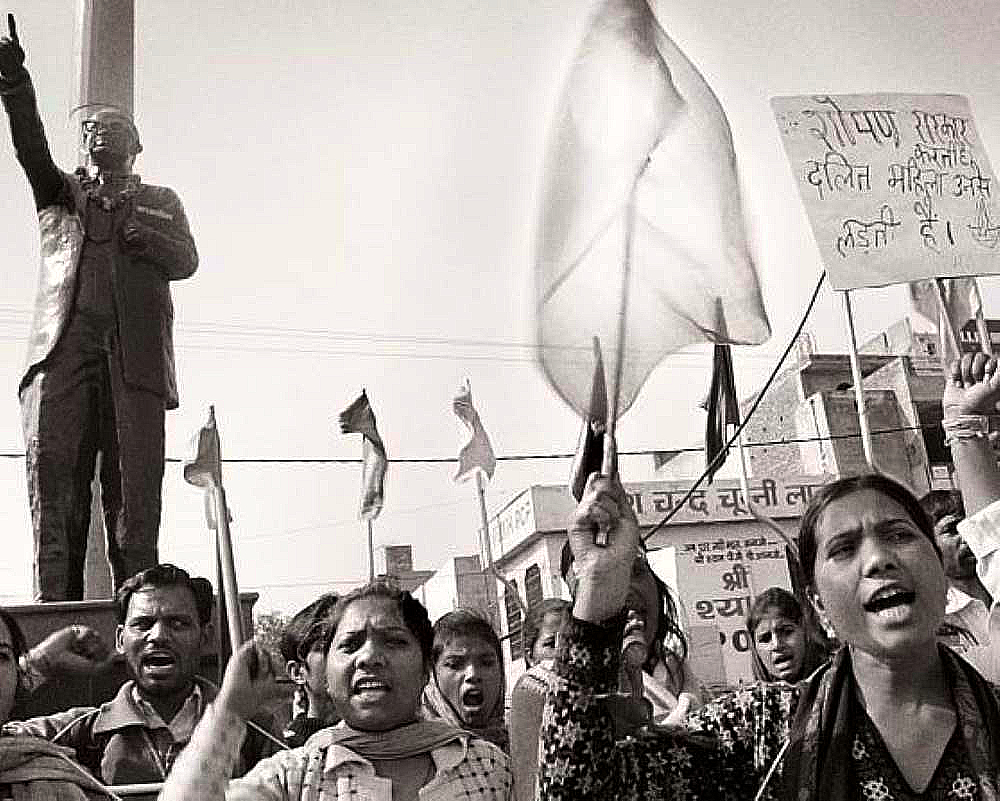
2021 Singing/Writing Liberation: Dalit Women’s Narratives

